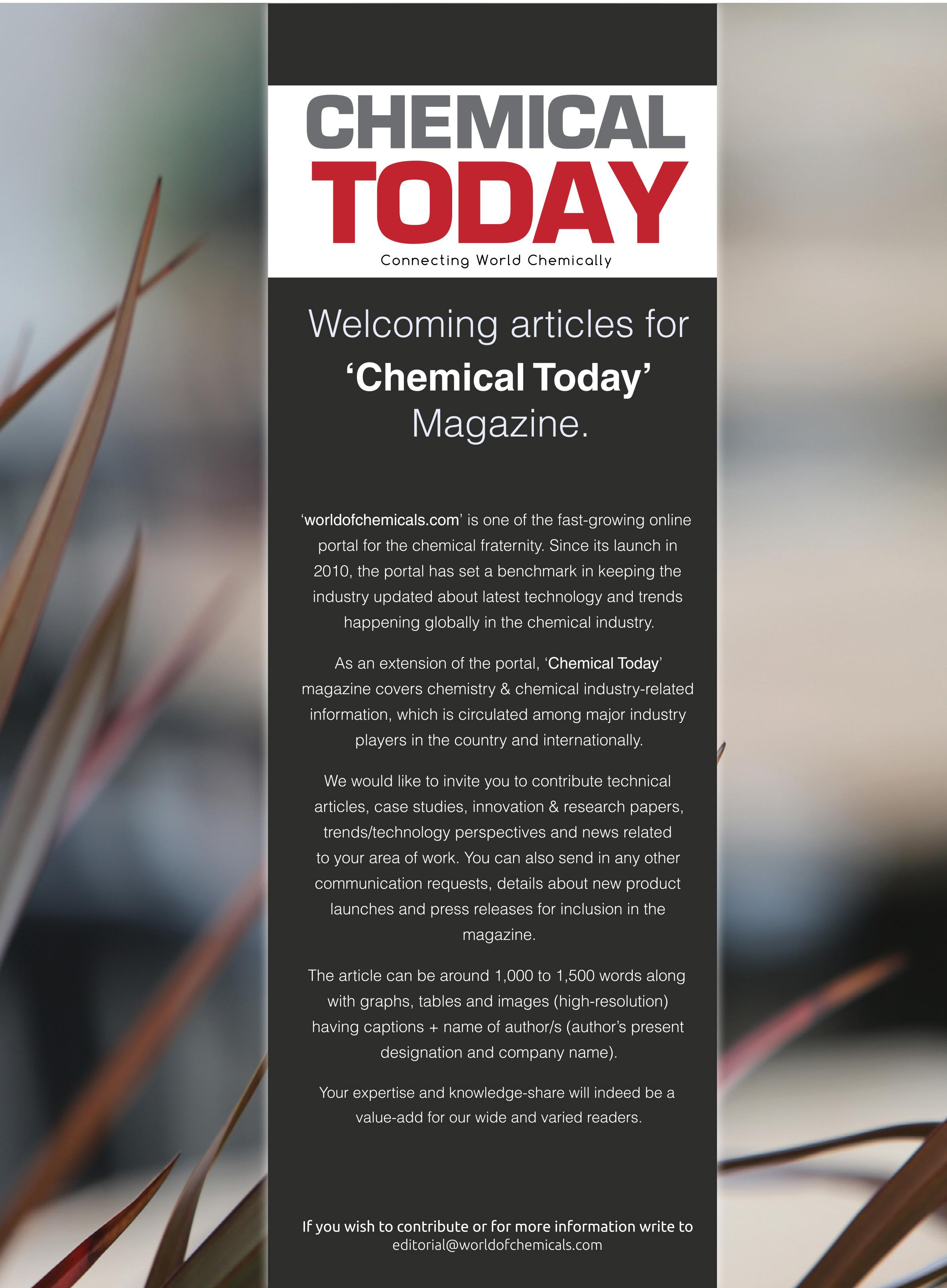










Nowadays, as we move across various cities and rural areas, there are signs of infrastructure development all over. Construction of buildings, flyovers, roads, metro development is a norm as the country moves towards faster economic development. While the sprawling commercial complexes, 90-floor buildings and skyscrapers amaze us all the time, it is important to note that there is a material that is helping these structures stick together and be strong over the years.
Although they remain as an invisible element in the objects they are used in, adhesives and sealants play a major role in the strength and tenacity of some of the fastest cars and tallest buildings ever designed.
The technologies in automotive adhesives has undergone a sea change in recent years. From use of solvent-based adhesives, the solutions have moved to solvent free adhesives. Also there is rising use of methyl methacrylate adhesives, eco-friendly automotive adhesives and water-based adhesives in vehicles.


Further the use of adhesives is increasing due to the demand of lightweight materials in vehicle manufacturing and replacement of mechanical fasteners with adhesives to make vehicles lighter and to meet higher fuel economy requirements.
Other than automotive and construction industry, use of adhesives is even becoming more prominent in the biomedical industry. Considering the internal wound applications, the demand will be a soaring market in the near future where bio-adhesives can play a major role in chronic organ leak repairs to limit bleeding complications.
Separately, looking at the paints & coatings industry, the industrial and decorative color tones have seen a paradigm shift. People are now looking at nature, comfort and balance to match their moods with the hues on their walls or their cars. New age colors are following the tones of harvested crops, creating a strong, long lasting connection among people and nature.
In Asia Pacific too people are looking for automotive colors that bring them happiness and spice, reflecting human individuality, which is gaining importance. These describe to people how to live gently and vividly with their own narratives.
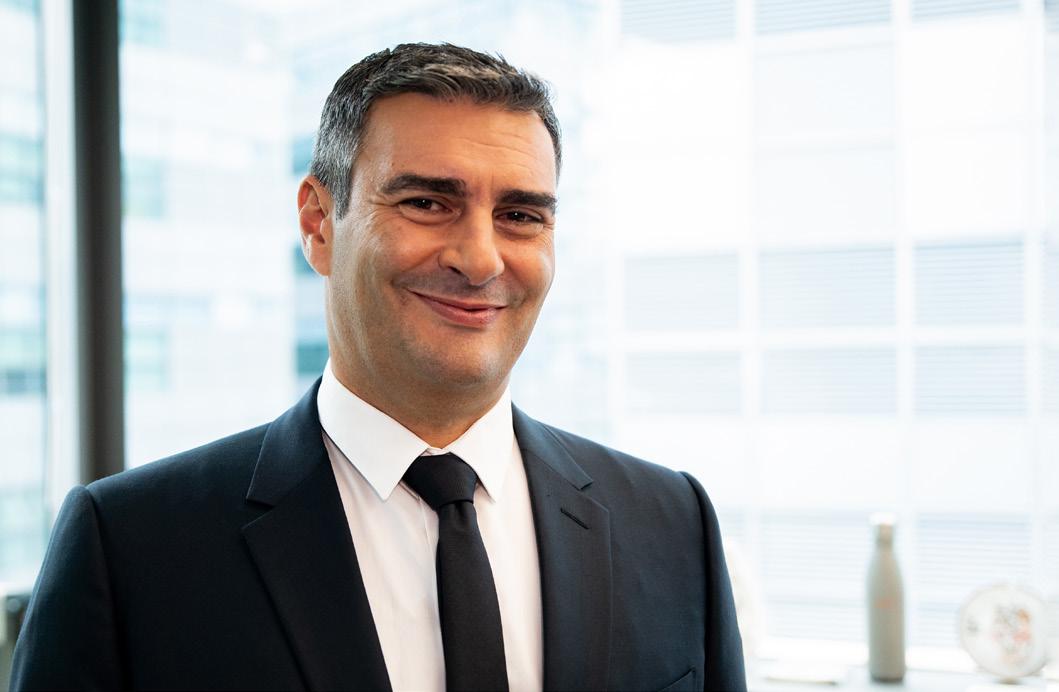

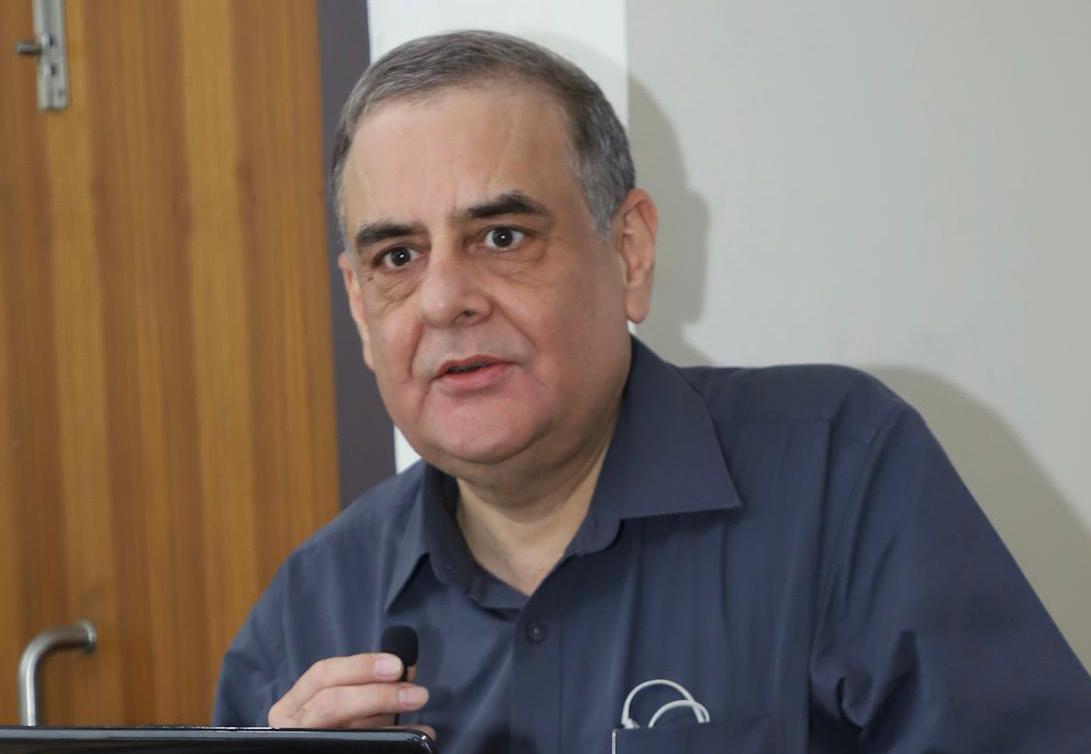
The rise of e-commerce and access to new technologies has accelerated counterfeiting and other forms of illicit trade. That makes fighting counterfeit medical products an ever-more urgent priority for pharma companies both in terms of patient safety and brand reputation.
Yann Ischi
Director, New Channels and Partnerships, SICPA

Within the Volkswagen Group, we have a clear strategy for how we want to put battery-electric vehicles into series production across our brands and in many different market segments. However, a major qualification for success in the volume market is more powerful battery concepts. In Volkswagen Group R&D we are focusing on close cooperation, not only with industrial partners but also with the smart minds of the scientific community.
Dr Ulrich Eichhorn
Head, Group R&D, Volkswagen AG.
India is a very important market for polyurethanes and has a wonderful potential for growth. When leaders of the industry from all over the world get together under one roof, it leads to better production and faster growth of the industry
R C Bhargava
Former CEO and current Chairman, Maruti Suzuki.
Indian Solar Manufacturers Association (ISMA) members have expressed positive sentiments as manufacturing and Make in India initiative gathered momentum. The phenomenal growth opportunity of Renewal Energy is unparalleled in the world today, looking at current and future energy consumption in India over the next 2-3 decades. All stakeholders have immense opportunities especially those who make and develop products in India.
K N SubramaniamCEO, Moserbear Solar Ltd and Treasurer, Indian Solar Manufacturers Association (ISMA)
FREMONT, US/BANGALORE, INDIA: Ohmium International, a green hydrogen company that designs, manufactures, and deploys PEM Electrolyzers, said it is collaborating with Shell India Markets Pvt Ltd, to evaluate hydrogen applications, markets and project opportunities in India and globally.
As part of signing an MoU, the companies launched joint working groups to assess opportunities from the technical, commercial, and safety perspectives. The collaboration would elevate Shell’s ambition to help build a global hydrogen economy by developing opportunities in the production, storage, transport and delivery of hydrogen to endcustomers.
“We have set an ambitious goal of becoming a net-zero emissions business by 2050 with a target to reduce absolute emissions by 50 percent by 2030. Green hydrogen has a critical role in helping the
world reach zero emissions. We plan to develop integrated hydrogen hubs to serve the industry and heavy-duty transport to be a leading player in this space,” said Nitin Prasad, chairman, Shell group of companies in India.
“We would like to work with Ohmium to make this a productive collaboration which would help us make our Hydrogen projects most competitive. We are keen to explore all opportunities to work with all our contract partners to continuously drive competitiveness in our projects,” said Prasad.
“We’re thrilled to collaborate with Shell to explore green hydrogen opportunities and solutions worldwide. Shell has demonstrated tremendous ambition to become a net zero carbon business by 2050– we believe that green hydrogen is a critical component of that transition,” said Arne Ballantine, CEO of Ohmium International.
“I am pleased to share that over the next 5 years, we will invest Rs 750 billion and expand capacities in existing and new value chains. In the polyester value chain, vinyl value chain and new materials,” said Mukesh Ambani, chairman & MD, Reliance Industries Limited, during the company’s 45th AGM.

Reliance manufactures polyester fibers and yarns under the Recron brand name, with a capacity of 2.5 million tonnes annually. Recron Partially Oriented Yarn (POY) products are produced using multiple process technologies like Barmag, Dupont, Toray, Inventa, and Zimmer to suit various customer requirements.
The Reliance Group chairman also unveiled aim to turn net carbon zero by 2035 as part of its commitment to support climate change by focusing on new and affordable climate friendly energy and materials.
MUMBAI, INDIA: Reliance Industries Ltd (RIL) said it will invest $9.4 billion (Rs 750 billion) in its petrochemicals and textile business over the next five years. The investment will be setting up a Purified Terephthalic Acid (PTA) plant, expanding polyester capacity and tripling the capacity of vinyl chain and a chemical unit in UAE
“In the polyester value chain, we will build one of the worlds’ largest single-train PTA plant of 3 million metric tonne per annum (MMTPA) capacity at Dahej. We will also invest in a 1 MMTPAPET plant at Dahej. Both PTA and Polyethylene terephthalate (PET) will be targeted for completion by 2026. We will also reinvest in Polyester Filament Yarn (PFY) and Polyester Staple Fibre (PSF). Polyester expansion with capacity of over 1 MMTPA will be completed in phases by 2026,” added Ambari.
MUMBAI, INDIA: Indian Oil Corporation Limited (IOCL) has awarded $75 million EPC contract to Thyssenkrupp Industrial Solutions India Pvt Ltd (tkIS India) to construct a 270 KTPA Catalytic Dewaxing Unit (CDWU) for Baroda Refinery, Gujarat.
The scope of EPC of this project includes Management, Procurement, & Supply, Inspection & Expediting, Fabrication, Erection & Construction, Mechanical Completion & Pre-commissioning of Plant, Commissioning, Start up, PGTR & Hand over of plant.
The CDWU is an important unit in the production of lube base oils and finds its applications in the manufacture of lubricants.
“This contract is a significant milestone in our refinery journey and of our association with IOCL. With this very important contract award, that serves as a strong motivation to all in the organisation, we are sure we are driven towards its successful implementation. The engineering of the unit will be based on the package received from Chevron Lummus Global. The scope of EPC work of this project includes detail engineering project,” said Rajesh Kamath, CEO and managing director, thyssenkrupp’s chemical plant business, India.
In the past, tkIS India has executed multiple refineries and petrochemical projects for IOCL. Currently, it is also implementing IOCL’s n-Butanol project on an EPC basis.
“The R&D Excellence Centre at Merck enables employees with an innovation-friendly environment, encouraging their curiosity. The Centre in Bangalore aims to establish a one-team culture, delivering critical responsibilities in the drug development journey as well as develop a valuable talent pool. The R&D Excellence Centre strives to bring the best of global practices and local talent to enable the vison of enhanced patient outcomes,” said Thatte.
The six different functions which the center constitutes from its inception in 2021 are:
• Global Regulatory Affairs (GRA) harmonizes and centralizes regulatory execution, driving deliverables in strong collaboration with the global R&D functions and other R&D hubs in healthcare.
• Global Patient Safety (GPS) monitors safety of Merck’s medicines throughout their use in healthcare practice. The team collaborates with the global R&D functions and plays a significant role in integrating deep knowledge of safety into early decision-making.
INDIA: Merck India inaugurated Healthcare Research and Development Centre facility in Bangalore, offering facilities and technical expertise to support the Indian life science community. Since 2020 the Excellence centre has onboarded around 300 employees and will continue its expansion over the next 2 years.

In July, Merck announced their first microbiology application and training (MAT) lab in Jigani with an investment of €200,000 in the infrastructure.
“India has a wealth of talent and expertise in Science and Technology. At Merck, we believe that curiosity is the key to driving innovations to address current and future challenges in the society. Through the Centre, we will strengthen our presence in healthcare R&D in India, while supporting Merck Group’s global efforts in drug discovery,” said Suneela Thatte, VP and head R&D Excellence Centre, Merck.
• Global Development Operations (GDO) in alignment with the global R&D functions delivers clinical study portfolio leveraging technology and digital innovations.
• Strategy, Portfolio & Innovation (SP&I) team is responsible for interfacing cross-functional management of the Development portfolio, along with R&D digital and data transformation.
• Global Scientific Exchange and Communication (GSEC) manages scientific exchange to enhance patient care by improving efficiency and ensuring quality and consistency.
• Global Biostatistics Epidemiology and Medical Writing (GBEM) team of medical writers focuses on bringing data to life in core decision making, consistently delivering on improving medicine.
KOCHI, INDIA: Bharat Petroleum Corporation Ltd (BPCL) has started work to set up an 8.40 MW solar power plant on its Kochi refinery campus in Irumpanam.
Once completed, the plant will spread across 25 acres and will generate 123 lakh units of electricity. The project is in tune with BPCL’s goal of building a strong renewable energy portfolio of 1 gigawatt of renewable energy by 2025.
“This is another step towards enhancing the green energy capabilities of Kochi Refinery. We are continuing efforts to generate green energy through roof-mounted and ground-mounted solar power projects. In 2018 we commissioned a roof-mounted 120 kwp solar power plant,” said Ajith Kumar, executive director, BPCL.
“An MoU was signed with Solar Energy Corporation of India for leveraging their expertise in developing solar power projects,” said Shelly Abraham, renewable energy wing head, BPCL.
NEW DELHI, INDIA: Cairn Oil & Gas, a unit of Vedanta Group, celebrated the 13th anniversary of successful operations from Mangala Oil field located in Barmer, Rajasthan.
Discovered in 2004, the field which was the largest discovery that year, still considered to be India’s largest onshore discovery. According to the Cairn Oil & Gas company, the first oil discovery of oil on 29 August 2009. Mangala oil field has produced 497 mmbbls till date.
“We are happy to announce that Mangala oil field has completed its 13th year of production. The field has been instrumental in supporting India’s domestic crude production and we are confident that the field will remain relevant in the coming years as India charts its path towards energy aatmanirbharta. The field has been home to some of the finest global partnerships that have propelled innovation in technologies of oil and gas exploration and production. At Cairn, we have announced our goal to double production capacities and contribute 50% to India’s domestic crude basket and in this mission, the Mangala field will continue to play a driving role,” said Prachur Sah, Deputy CEO, Cairn Oil & Gas.
Cairn Oil & Gas contributes 25 percent of India’s domestic crude oil production. Most of the crude oil will be extracted from Mangala, and its sister fields Bhagyam and Aishwariya. Collectively, they have contributed $21 billion to the national and state exchequer as on FY’22. The cumulative production from the block has crossed 660 mmboe. Now, Cairn Oil & Gas aims to double production capacities and contribute 50percent to domestic crude production. Here too, the Mangala field and Rajasthan block will play a driving role.
The Mangala field has also witnessed crucial innovation in Enhanced Oil Recovery (EOR), use of Alkaline Surfactant Polymer (ASP) technology and the Mangala pipeline which is the world’s longest continuously heated and insulated pipeline that traverses ~705 km carrying crude from the fields of Rajasthan to refineries in Gujarat. As per the company, the pipeline will be powered by solar energy in the future. Since Cairn commenced operations, the district of Barmer has registered a 650 percent increase in per capita income.
DELHI, INDIA: Avaada Group has entered into a memorandum of understanding (MoU) with the Department of Industries and Commerce, Government of Rajasthan, to set up a green ammonia facility and a renewable energy power plant in Kota, Rajasthan. The company plans to reach 11 GW by 2025 and 30 GW by 2030.
The MoU signed is part of the Investment promotion strategy for the Investment Rajasthan Summit. It proposes an investment of Rs 40,000 crore while providing direct employment opportunities to about 3,500 people and indirect jobs to over 10,500 people
“Green energy transition is vital to the country’s Atmanirbharta and will pave the way towards net-zero goals. Aligning with the nation’s vision of self-reliance, at Avaada, we aim to make India energy independent by focusing on green energy security,” said Vineet Mittal, chair, Avaada Group.
“At Avaada, we believe that business and sustainability go handin-hand. We are grateful to the Government of Rajasthan for this partnership. It will help strengthen India’s green energy revolution, led by prime minister Narendra Modi, as we make significant investment in innovative clean energy solutions to support the country’s exponential growth in the renewable energy (RE) sector,” he added
“For industries that require high-temperature heat, such as foundries and glass and steelmakers, this could be ground-breaking as it will not only replace fossil fuels with renewable sources but also produce green ammonia and a substitute for gas,” stated Mittal.
Elaborating on clean energy technology, Mittal further explained that the biggest advantage of green hydrogen is that it burns clean, leaving only water vapor behind.
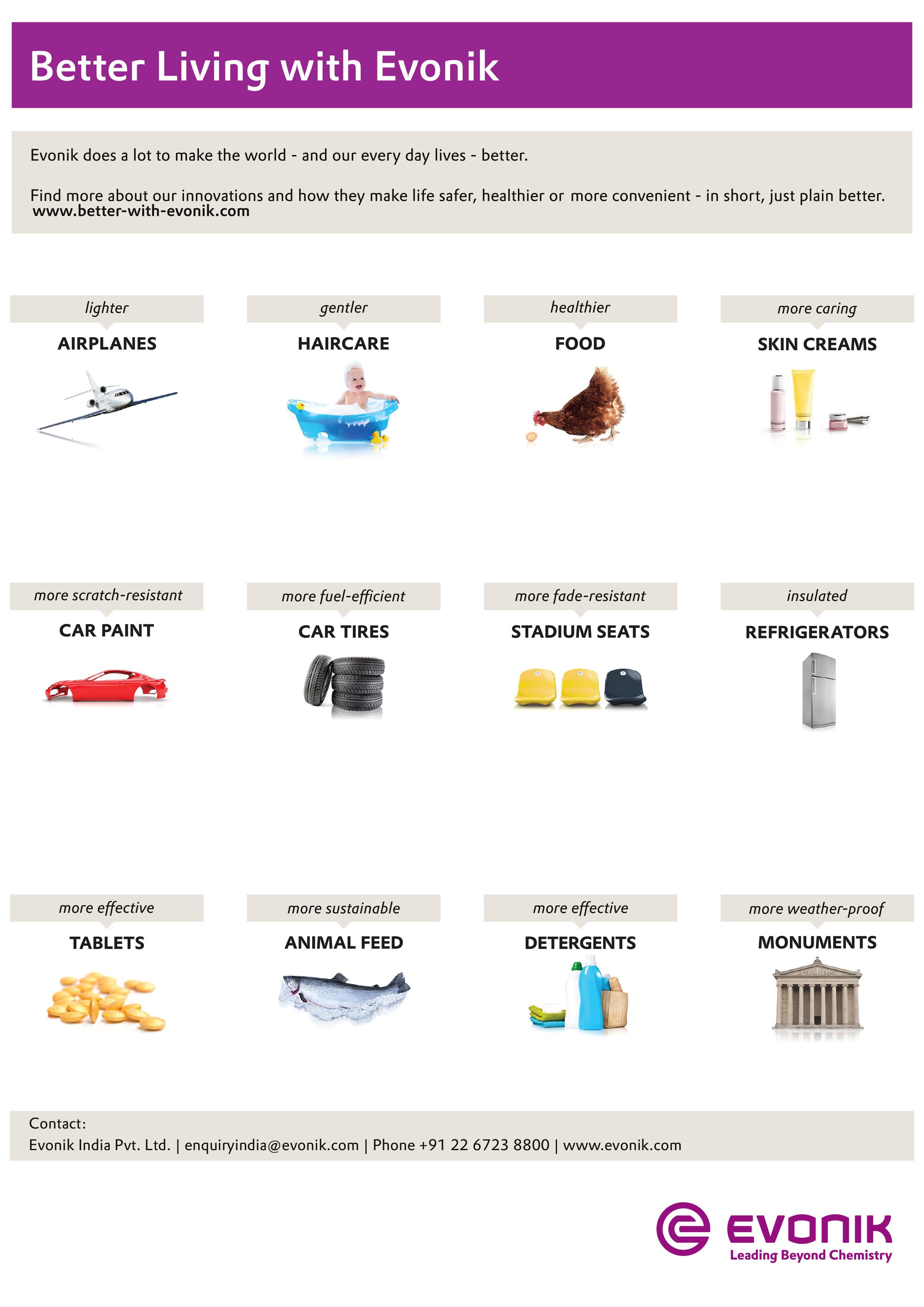
PARIS, FRANCE/ COURBEVOIE, FRANCE: TotalEnergies
announced that it has sold remaining 49 percent stake in the Russian company Terneftegaz, joint venture between TotalEnergies and Russian Company Novatek which operates the natural gas field Termokarstovoye, located in Siberia.
With this, Novatek will now own 100 percent stake in Terneftegas. This sale comes as a consequence of criticism on TotalEnergies’ in Russian business. The transfer of the share is expected to close in September 2022.
TotalEnergies will contribute their duty towards securing Europe’s gas supply from Yamal LNG plant as per the long-term contracts as long as Europe’s government do not take sanctions on Russian gas. In addition to divesting stake in Termokarstovoye gas, Total Energy unveiled their
plans to gradually suspends activities in Russia, which do not contribute to the Europe’s security of energy. This included assets producing oil (Kharyaga field) and gas for the local Russian market (Termokarstovoye field) as well as other local businesses (lubricants, batteries) which were mothballed in the first half of the year.
In July this year, TotalEnergies sold its 20 percent interest in the Kharyaga oil project to Zarubezhneft and the transfer was finalized made in August. Pursuant to Russian regulations, a request to authorize this transaction was addressed to the Russian authorities on August 8, 2022. On August 25, 2022, Russian authorities issued their agreement to the proposed sale. As a result, on August 26, 2022, TotalEnergies and Novatek signed the final sale and purchase agreement of TotalEnergies’ 49 percent interest in Terneftegaz.
concepts- direct and indirect heating- in parallel processing around 4 tons of hydrocarbon per hour and consumption of 6 megawatts of 6 megawatts of renewable energy. The demonstration plant aims to show that continuous olefin production is possible using electricity as a heat source.
“BASF’s mission is to achieve climate neutrality, and electrification of the hugely energy-intense steam cracker is a significant milestone in our transformation journey towards net zero,” said Dr. Martin Brudermuller, chairman of the board of executive directors of BASF SE. “We are proud that BASF has been granted project funding by the German Federal Ministry for Economic Affairs and Climate Action, as it is a testament to the support of our approach also by policymakers,” said Brudermuller.
commenced the construction of world’s first demonstration plant for large-scale electrically heated steam cracker furnaces at BASF’s Verbund site in Ludwigshafen, Germany. The start-up of the demonstration plant is targeted for 2023.
The project will use electricity from renewable sources instead of natural gas and reduce CO2 emissions of one of the most energyintensive production processes in the chemical industry by at least 90% compared to technologies commonly used today.
BASF will operate and invest alongside SABIC in the project and Linde will be engineering, procuring, and constructing, according to the company statement. The project also received €14.8 million ($14.8 million) in grants from German Federal Ministry for Economic Affairs and Climate Action under “Decarbonisation in Industry” funding programme. The demonstration plant will test two different heating
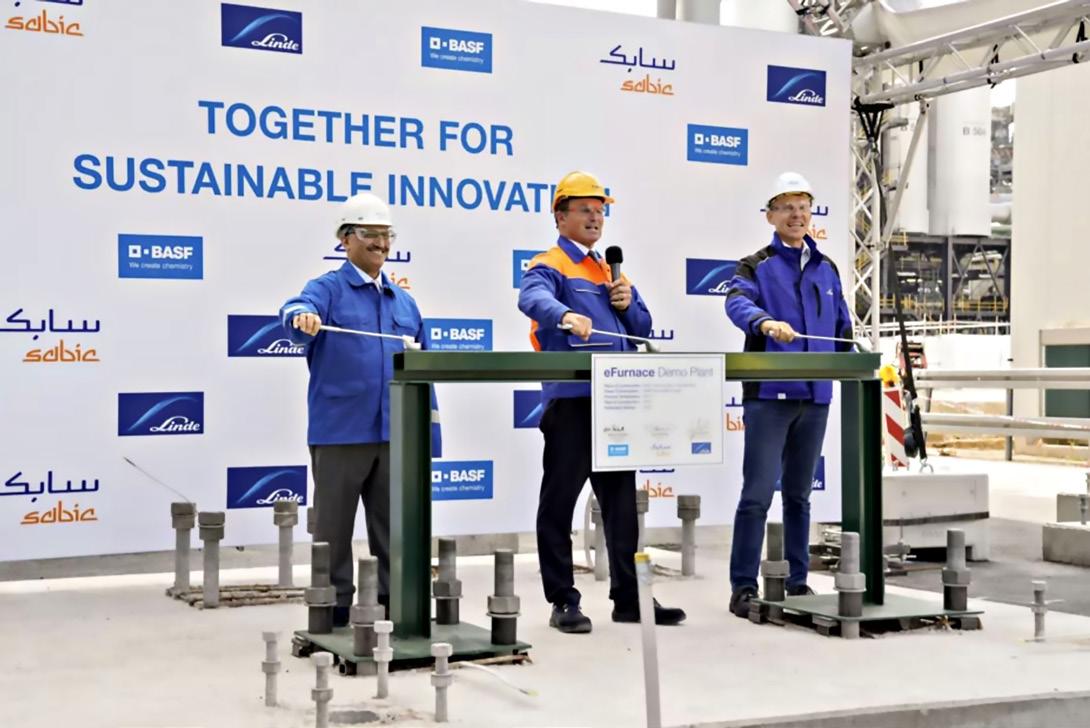
“Our vision is to transform our business and to help address urgent global challenges through efficient carbon management. This project holds huge potential for all of the petrochemical industry around the world in our drive for low carbon emitting processes. With the milestone we are jointly announcing today on the start of construction, we hope that our three-party collaboration can inspire many more collaborations that ultimately bring the world to net-zero greenhousegas emissions through a circular carbon economy, said Yousef AlBenyan, vice-chairman and CEO of SABIC.
“This project demonstrates how global companies can successfully collaborate by combining their expertise in technology development, engineering, procurement and construction execution and operation. The timely delivery of the demonstration plant will be a major milestone on the path to making sustainable solutions available to the petrochemical industry. We are proud to be part of this breakthrough project,” said Jurgen Nowicki, executive vice president Linde plc and CEO of Linde Engineering.
LUDWIGSHAFEN,GERMANY: BASF, SABIC and Linde Yousef Al-Benyan, Vice-Chairman and CEO of SABIC, Dr. Martin Brudermüller, Chairman of the Board of Executive Directors of BASF SE and Jürgen Nowicki, Executive Vice President Linde plc and CEO of Linde Engineering on the construction site of the world’s first demonstration plant for large-scale
GERMANY: Covestro announced it will receive two mass-balanced raw materials by INEOS Capital to produce polycarbonate plastics. Phenol and acetone, the two mass-balanced raw materials will be delivered from INEOS’ INVIRIDIS™ product range. These raw materials also support customers to achieve carbon emissions sustainability goals.
Polycarbonate plastics are used in headlights and other automotive parts and also in housings for electronic devices, light guides and lenses, medical devices, and many other high-value applications.

“As part of our sustainability strategy, we have developed these more sustainable phenol and acetone products, which we have named INVIRIDIS™. This new product range provides our customers with drop-in product options that meet their stringent quality and performance requirements. At the same time, we’re moving the industry toward a more climate-friendly economy for phenol and acetone without compromising its unique product attributes,” said Gordon Adams, business director, INEOS phenol.
INVIRIDIS™ brand phenol and acetone are produced from bioattributes cumene at INEOS Gladbeck and Antwerp sites. These both sides are certified and recognized by the International Sustainability
& Caron Certified (ISCC Plus) and Roundtable on Sustainability Biomaterials (RSB) standard. The raw materials have a lower-carbon footprint than petroleum-based products.
“By switching to mass-balanced renewable raw materials, we aim to significantly reduce our indirect emissions in the supply chain and offer products with a reduced carbon footprint,” said Sucheta Govil, chief commercial officer of Covestro. “In doing so, we’re helping our customers to meet their climate goals and advance the transition to a circular economy.”
Launched in June, these mass-balanced raw materials are the first of its kind range of bio-attributes products line for phenol, acetone alphamethylstyene(AMS). These materials are made without using fossil fuels as feedstock and they are sold under the Inviridis brand and helps in creating a lower-carbon product, noted INEOS.
“We offer them a drop-in solution that they can quickly and easily integrate into existing production processes without requiring any technical changes. The products show the same good quality as their fossil-based counterparts,” said Lily Wang, global head of the Engineering Plastics segment.
TOKYO, JAPAN: Toray Industries announced it has developed the world’s first 100 percent bio-based adipic acid, a raw material for nylon 66, from sugars derived from inedible biomass plant and crop residues.
The achievement came from using a proprietary synthesis technique combining the firm’s microbial fermentation technology and chemical purification technology that harnesses separation membranes.
It will test the polymerization of nylon 66, develop production technology, conduct market research, and take steps to commercialize applications
for this bio-based adipic acid by 2030. The firm highlighted that nylon 66 has been used for many years in fibers, resins and other applications due to its exceptionally durable, strong and rigid properties.
The company confirmed that they are the first in the world to discover microorganisms that produce adipic acid intermediate from sugars. The process led bioinformatics technologies to design optimal microbial fermentation for synthesis. Quantity of the intermediate synthesized by microorganisms has increased more than 1,000-fold since the initial discovery and the efficiency of synthesis has improved dramatically, it said.
CANADA: HUDSON Resources and Neo Performance Materials have signed a binding agreement under which NEO will acquire an exploration license for the Sarfartoq Carbonatite rare earth (RE) complex in Southwest Greenland.
The project hosts a mineral deposit that is enriched in neodymium and praseodymium, key elements for rare earth permanent magnets. These two essential elements are used in electric vehicles, wind turbines and high-efficiency electric motors and pumps that help reduce greenhouse gas emissions, the company said.
Located 60 kilometers from the international airport in Kangerlussuaq, the project is close to tidewater and a major port facility and is directly adjacent to some of the best hydroelectric potential in Greenland. The Sarfartoq carbonatite complex used to host two Hudson’s project- ST1 REE and the Nukittooq Niobium-Tantalum project in Greenland. The REEs on the property have a high ratio of neodymium and praseodymium at 25-40 percent of total rare earth oxides.
It has completed a Preliminary Economic Assessment on the ST1 project in November 2011 that outlined a National Instrument 43-101 complaint resource containing 27 million kilograms of neodymium oxide and 8 million kilograms of praseodymium oxide. Three kilometres east of the ST1 Zone is another high-grade zone (ST40) that contains highest-known ratios of neodymium oxide for rare earth oxide, Hudson said.
Through a special purpose entity (SPE), Neo stated it plans to develop the Sarfartoq project and expand the rare earth supply chains at their rare earth separation facility in Estonia. The Sarfartoq project also is a key element of Neo’s “Magnets-to-Mine” vertical integration strategy.
“We are very pleased to have signed this agreement with a global leader in the production of advanced materials. As the world faces critical shortages of rare earth elements outside of China, we are pleased to help bring the Sarfartoq project a step closer to commercial reality. This deal
provides a significant cash injection to the company and importantly, also gives Hudson shareholders potential significant upside in the future value of the Sarfartoq projects through equity or additional consideration,” commented Jim Cambon, Hudson’s president.
The key terms of the agreement are as follows:
- Hudson receives a non-refundable initial cash payment of $250,000 upon signing of the agreement.
- Upon receipt of approval from the Greenland government, Hudson will transfer the license to Neo or the SPE.
- Hudson will receive an additional $3,250,000 upon closing of the transaction.
“Neo continuously pursues supply chain optionality in order to ensure that our customers have a dependable supply of engineered rare earth products. Once in production, this project will significantly increase the diversity of global rare earth supply for our processing facilities around the world. It also is another step in our Magnets-to-Mine vertical integration strategy,” said Constantine Karayannopoulos, Neo’s president and chief executive officer.
“Based on our significant experience in assessing strategic mineral resources around the world, we believe the Sarfartoq resource in Greenland is a strategic asset that uniquely complements Neo’s European rare earth magnet growth strategy. This resource would supplement our current supply of rare earth concentrate from Energy Fuels in the US,” said Karayannopoulos.
Neo and the SPE to conduct additional exploratory drilling and other work to move the project forward to eventual commercial operation. Neo also intends to enter into an offtake agreement with the SPE with rights to purchase 60 percent of the ore or mineral concentrate produced from the project.
specialist Grupo Antolin and BASF subsidiary TrinamiX GmbH collaborated to develop biometric solution by integrating face authentication into new product lines.
The two companies will present automotive OEMs the solution to enhance future driving experiences.
Antolin will take advantage of its experience and knowledge in smart surface to offer exterior human machine interface (HMI) systems. On the other hand, trinamiX Face Authentication operates on claimed unique patent protected algorithms, which verify a person’s liveness based on skin detection.
The combination of software and hardware has the potential to authenticate drivers based on their biometrics as soon as they get close to their car. While allowing for a stronger data protection and premium
performance, the solution comes with low hardware requirements for a seamless and easy integration.
“By incorporating biometric solutions into our components, we can offer our clients added value systems that combine lighting, electronics, and smart surfaces with face authentication,” highlighted Marta Cuevas, Grupo Antolin Lighting & HMI business unit director. “trinamiX Face Authentication has proven to reliably keep up its high performance even under particularly challenging conditions. This trusted performance is what makes the solution the perfect addition to our growing, innovative portfolio.”
“Grupo Antolin and trinamiX share a common goal. Providing consumers around the world with higher comfort and security. We are happy that we can contribute with extensive knowledge and a strong network on this exciting path,” said Wilfried Hermes, director business development at trinamiX.
LUDWIGSHAFEN, GERMAN/BURGOS, SPAIN: Interiors
INDONESIA: Lenzing Group, leading provider of wood-based specialty fibers, said it is expanding its global clean electricity portfolio and reducing carbon emission at its production site in Purwakarta.
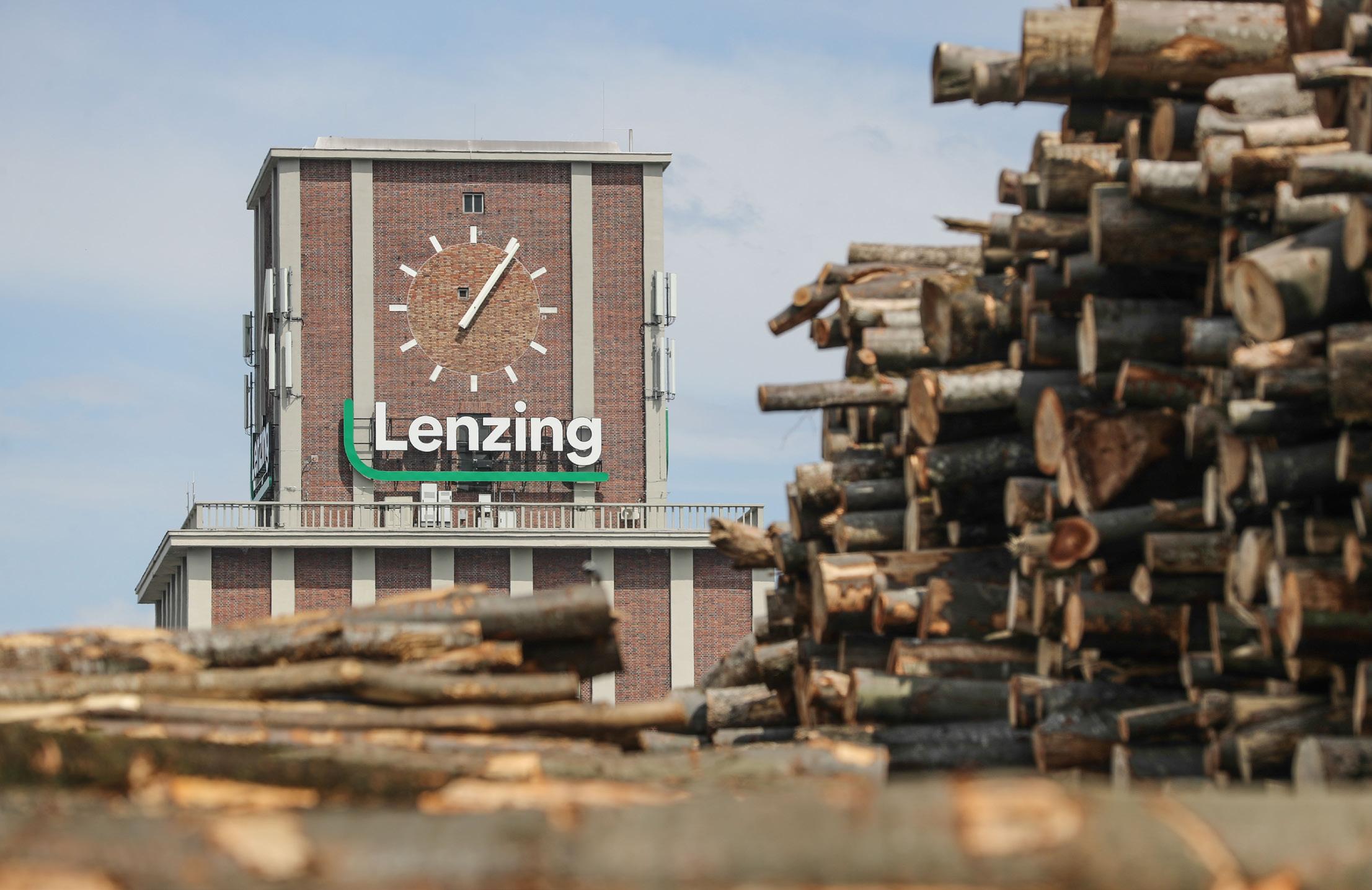
The Indonesian subsidiary PT. South Pacific Viscose (SPV) has been using electricity generated solely from renewable sources since July this year, which will reduce its specific carbon emissions by 75,000 tonnes annually.
Not just carbon emissions, Lenzing is aiming to reduce the air and water emissions by 2030 and become climate neutral by 2050. The company will invest 100 million Euros in Purwakarta area and gradually transition its existing capacities to LENZING™ ECOVERO™ and VEOCEL™ branded specialty viscose.
“Demand for our wood-based, biodegradable specialty fibers is constantly rising. We see enormous growth potential, especially in Asia.
The switch to green, renewable electricity marks a huge step forward in converting our Indonesian site into a specialty fiber supplier. This makes us better positioned to meet the growing demand for sustainably produced fibers,” said Robert van de Kerkhof, chief commercial officer for fiber.
Specialty fibers are Lenzing’s key strength. The company aims to generate more than 75 percent of its fiber revenue from the woodbased, biodegradable specialty fibers business under the TENCEL™, LENZING™ ECOVERO™ and VEOCEL™ brands by 2024.
With the launch of the lyocell plant in March, in Thailand and the investments in existing production sites in Indonesia and China, the share of specialty fibers in Lenzing’s fiber revenue is set to exceed the 75 percent target by a significant margin as early as 2023.


will replace professor Fei Fei Li, who stepped down from the board at the end of August due to personal medical reasons.
Since 2022, Mathisen has been a non-executive member of the board of directors of Aker Biomarine ASA in Norway. In 2021, she was CEO of HUB Ocean, an independent non-profit foundation, a joint initiative of Aker Group and World Economic Forum with a global ocean mandate. In 2016, Mathisen joined Microsoft Corporation as General Manager with responsibility for the company’s entire business in Norway.
In 2013, she was appointed CEO of the home & personal care division of the Norwegian branded consumer goods company Orkla. Before that, she joined the pharmaceutical company Eli Lilly and held a variety of positions with growing responsibility in the UK, Norway and Germany. She has also worked for Procter & Gamble in the US.
“We are delighted that we will be joined by Kimberly Mathisen. She is an outstanding personality who has more than 20 years of international experience in digitalization, technology, branded consumer goods and the pharmaceuticals business,” explained professor Norbert Winkeljohann, chairman, supervisory board of Bayer AG.

UAE: Evonik said it has appointed Joerg Syrzisko as the new president of Middle East & Africa (MEA), succeeding Hendrik Schoenfelder, who has taken the position of regional president for Evonik in Central and South America.
Prior to joining Evonik in 2017, Syrzisko held several international management positions in the healthcare and chemical industries since 1989.
Evonik opened its first offices in Egypt, marking the start of the company’s presence in the Middle East and Africa (MEA). As a cluster with over 150 employees covering the United Arab Emirates (UAE), Saudi Arabia, Iran, Egypt, Jordan, South Africa, Ghana and Kenya.
With a hydrogen peroxide plant in South Africa and a superabsorbent manufacturing facility in Saudi Arabia, Evonik also has animal nutrition activities in South Africa and Kenya, as well as silica activities which is also in South Africa.
AMSTERDAM, NERTHERLANDS: AkzoNobel announced that Gregoire Poux-Guillaume will become the company’s new chief executive officer, effective on 1 November. Poux-Guillaume will succeed Thierry Vanlancker, who has been CEO and management board member since 2017, as his office term is coming to an end.
Poux-Guillaume’s previous roles include CEO of Sulzer, CEO of GE Grid Solutions (previously Alstom Grid) and senior managing director of CVC Capital Partners.

“I would like to welcome Gregoire Poux-Guillaume, who is an experienced business leader with an impressive track record of delivering results, growth and building strong teams. His experience will play a key role in helping the company to further improve its operational excellence and performance,” commented Nils Smedegaard Andersen, chair of AkzoNobel’s supervisory board.
After becoming the president of ELANTIS, Kumar will also become a member of ALTANA’s executive management team, as of 1 January. Jan Behnke will fill in the position of Kumar in ELANTAS PDG as the managing director for sales and technology in the US company.
Kumar has been managing director of ELANTAS PDG in St. Louis, since August 2019. He has worked in the chemical industry for 26 years. In the first 15 years of his career, the chemical engineer held various sales and marketing positions at Asian Paints, BASF and Huntsman in India.
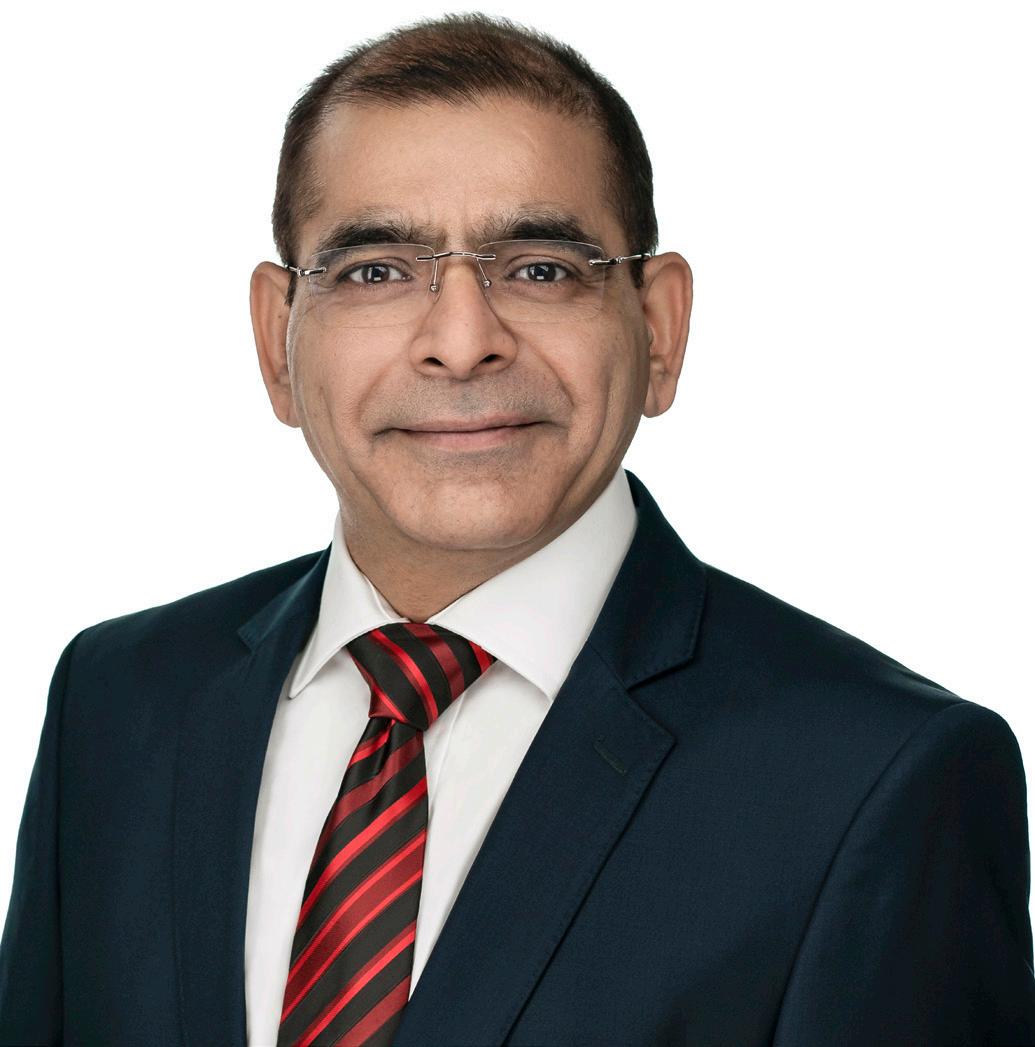
“Ravindra Kumar is distinguished not only by his excellent professional competence and international management experience; he is also a true team player who understands how to achieve top performances with good cooperation – in keeping with ALTANA’s corporate culture,” said Martin Babilas, CEO, ALTANA AG.
WESEL, GERMANY: ALTANA has announced a change in their composition of its presidentship at ELANTAS, division specializing in innovative insulating and protective coatings. By the end of the year, Dr. Guido Forstbach will retire and will hand over the worldwide leadership of ELANTAS to Ravindra Kumar, who is currently the managing director of ELANTAS PDG in St. Louis.
Forstback joined ATLANA group in 2000 as MD of ACTEGA Rhenania. He became president of the ACTEGA division in 2001. As part of the rotation of all four of ALTANA’s division presidents, Forstbach became head of ELANTAS in November 2012.
“Guido Forstbach has successfully managed two divisions over a period of more than 20 years and has thus played an essential role in helping to shape ALTANA’s sustained success,” said Babilas.
join the Nutrien board of directors. He brings more than 25 years of global management experience working across 60 countries and more in agriculture and mining sector.
Previously, Nutrien Ltd board of directors announced that Mayo Schmidt had left his position as president and CEO of Nutrien and had named Ken Seitz, EVP and CEO of Potash, as the company’s interim CEO effective January.

“Nutrien’s record performance and disciplined execution of strategy during some of the most turbulent times we have seen globally underscore the strength of Ken Seitz’s leadership. As the company’s president and CEO, Seitz will continue to drive positive outcomes for all our stakeholders as we strive to safely and sustainably feed the world,” said Russ Girling, chair, Nutrien board of directors.
SASKATOON, CANADA: Nutrien Ltd said it has appointed Ken Seitz as president and CEO, effective 8 August. Seitz will also
“Growing up on a dairy farm in Saskatchewan, I am honored to work alongside growers during these challenging times today and going forward. Nutrien is extremely well positioned to help meet the global goals of food security and climate action, partnering across the food system. Our purpose is to feed the future, and I am invigorated by the noble pursuit to help solve these critical world needs,” said Seitz.
KOLKATA, INDIA: Linde India Ltd said it has appointed Neeraj Kumar Jumrani as the chief financial officer (CFO) effective 9 August, as the earlier CFO has resigned from his position. He last worked in PT. Linde Indonesia as head of finance for Linde Plc’s gases business in Indonesia, Philippines and Vietnam.
Jumrani had joined Linde India Ltd in 2006 and brought in 18 years of experience in different sectors within Linde Plc Group of companies. He worked for 16 years in various finance department such as tax management, internal controls, financial planning & controlling with Linde India Ltd.
The board of directors of the company had on recommendation of the nomination & remuneration committee and audit committee of the board respectively approved Jumrani as the CFO of the company.


DOMO Chemicals is a key polyamide player equipped with one of the world’s most modern polymerization lines for staple fiber. The company is committed to achieving performance breakthroughs in polyamide 66 fibers. This is clearly shown by its new NYLEO® line of polyamide 66 value-added solutions. These include innovative products for flame retardancy, biodegradability and inhibiting bacteria.
The new brand name for DOMO’s Performance Fibers product line, NYLEO® represents the strong synergy of our rich heritage in the polyamide 66-based fiber market and an intense focus on innovation. Thanks to its unique properties, this pioneering fiber can be used in numerous applications in the textile, flooring, automotive and industrial markets. These offer consumers state-of-the-art solutions to meet their demanding requirements when it comes to health, safety and sustainability.
NYLEO® PROTECT fibers offer improved flame retardancy, NYLEO® 4EARTH® fibers provide enhanced biodegradability, and NYLEO® SAFE fibers feature bacteriostatic properties. The NYLEO® value proposition represents a new milestone in DOMO’s enhanced offering of sustainable solutions.
Based at our Valence site in France, our DOMO Performance Fibers teams work passionately to create unique fibers designed to meet key market needs. We have been producing world-class polyamide 66 fibers since 1955 for such industries as nonwovens for polishing, surface treatment, tennis balls and aerospace, worsted and semiworsted for flooring, flocked fabric for upholstery, automotive interiors, packaging, and many other consumer products.
The NYLEO® brand now represents the full range of polyamide 66 products, including staple fibers, crimped tow and tow for flock. These are well known for their superior resilience, outstanding abrasion resistance, higher tenacity, good dyeability and color fastness, consistent quality, and soft touch. NYLEO® now also means
cutting-edge innovation with our new line of polyamide 66 fibers. NYLEO® PROTECT for flame retardancy
With the aim to contribute to higher levels of safety in the clothing, furniture and transportation sectors, DOMO has developed a new flame retardant polyamide 66 fiber.
NYLEO® PROTECT combines all the advantages of polyamide 66, such as mechanical properties, comfort, low specific weight and outstanding abrasion resistance, with better flame retardancy. The limiting oxygen index (LOI) of NYLEO® PROTECT has been improved up to 28 percent, which is the level of typical flame retardant fibers.
Thanks to its unique properties, NYLEO® PROTECT offers a wide range of qualities to enhance product performance, including the workwear segment. Our global customers rely on DOMO’s performance fibers because they are particularly resistant and resilient, including for under and outer garments for firefighters, military, construction and trades functions.
Our fiber is antimony-, halogen- and bromide-free and is OEKOTEX® certified. NYLEO® PROTECT is available in a broad range of solutions, including staple fibers (from 1 to 30 Dtex; cut length from 38 to 155 mm), tow for flock or short cut fibers (from 1 to 30 Dtex) and crimped tow (from 2.2 to 6.7 Dtex). NYLEO® PROTECT has an outstanding density of 1.14 g/cm3.
In comparison to polyester FR, Modacrylic, Viscose FR, Metaaramid, cotton FR or wool, NYLEO® PROTECT polyamide 66 displays a higher tenacity, enhanced mechanical properties and excellent abrasion resistance.
More and more manufacturers are concerned about sustainability and the circular economy, and seek to reduce their impact on the environment through better waste management, among other actions.

This applies to the textile industry as well, since the pollution it generates has a significant impact on the planet and the textile value chain is a major contributor to landfills, where most clothing ends its life.
To be more sustainable, manufacturers will need to redesign production to make it easier to manage the end-of-life of products and waste. For this reason, DOMO has developed this new fiber, which demonstrates enhanced biodegradation when landfilled.
While a traditional polyamide 66 fiber decomposes in about 50100 years, NYLEO® 4EARTH® with enhanced biodegradability decomposes within only five years. Its unique composition allows bacteria to gain access to and digest the waste materials, thus accelerating the biodegradation process.
Like other biodegradable products, once landfilled, NYLEO® 4EARTH® polyamide 66 fiber with enhanced biodegradability breaks down into organic matter (biomass) and biogas (methane).
Within five years, more than 90 percent of the fiber is converted into biogas, with the remainder as biomass residues. Moreover, in well controlled landfills, methane is not released directly into the atmosphere, but burned or reused for power generation.
By offering enhanced biodegradability to safeguard the environment while maintaining all the standard characteristics of polyamide 66, including durability, long life, high tenacity, soft touch, and abrasion resistance, NYLEO® 4EARTH is the optimal solution for sustainable fiber applications.
With bacteria propagation becoming a health concern of increasing urgency, DOMO has developed NYLEO® SAFE fiber to fight this problem. A bacteriostatic agent is introduced into the polymeric matrix, creating a long-lasting effect to protect the fibers and
inhibit the growth of bacteria, while maintaining all the standard characteristics of polyamide 66 fibers like comfort, mechanical resistance and durability.
NYLEO® SAFE features a powerful and compliant solution of silverbased ions. Silver is widely used for human contact applications and is known to be effective against a broad spectrum of microorganisms that cause odor, discoloration, biofouling and other aesthetic problems.
Thanks to this technology, we can better control the level of bioactivity and the bacteriostatic properties, which are resistant to washing as the agent cannot wash out. NYLEO® SAFE provides a proven, longlasting effect even after 100 washing cycles, and a significant effect with a 20 percent blend of NYLEO® SAFE fiber with other nontreated fibers.
According to laboratory tests under the best standards, over 99.99 percent of bacteria are inhibited on pure polyamide 66 fabrics with bacteriostatic fiber after 24 hours of contact with bacteria like staphylococcus aureus or klebsiella pneumoniae.
DOMO Chemicals is a leading engineering materials company and highly integrated solution provider committed to the sustainable future of polyamides. Caring is our formula to create value – for our customers and consumers, for our teams and our people, for our shareholders as well as for the wider society and communities in which we operate.
The NYLEO® brand represents an important step in our quest to strengthen DOMO’s polyamide-based performance fibers business. It’s also a key milestone in our sustainability journey, as we endeavor to support our customers through our enhanced offering of sustainable solutions.

Author: Olivier Huang is Sales Director, Performance Fiber, Nyleo at DOMO Chemicals.

Every industry is looking for sustainability wins these days, so the latest innovation from DSM Engineering Materials should come as muchneeded good news for the markets we serve. The company has recently developed a 100 percent bio-based polyamide, one that performs just as well as its fossil-based equivalents whilst carrying a 50 percent lower carbon footprint.
For those in the automotive, electronics, and consumer goods industries, Stanyl Bio-Based Mass Balanced (B-MB) is a clear stepping stone on the path to net-zero, while for chemists in any sector, this new approach reminds us that a greener world is within reach.
This product is the latest – and most sustainable – addition to our Stanyl PA46 range. All solutions within the Stanyl PA46 portfolio offer three core properties: high-temperature mechanical performance, superior flow and processing, and distinguished wear and friction resistance.
What is unique about Stanyl B-MB, however, is a substantial reduction in planetary impact. This sends a message to the rest of the value chain: we have a solution, and it works. We hope this resonates with organizations trying to meet ambitious climate targets of their own. All our connected industries are under similar pressure to make business operations more sustainable, so adopting a 100 percent bio-based polyamide can make a significant contribution to meeting these goals.
Since the 2015 Paris Accords, the world has agreed on a clearly defined climate target – net-zero by 2050 – and many governments have subsequently enshrined this into law. Product and operational innovation are essential to meeting these targets. To make the world habitable for generations to come, we need everyone in the value chain to play their part in radically transforming industrial production.
In over three decades at DSM, I’ve seen the company become a true sustainability frontrunner. Since closing our last coal mine in 1973, the company has evolved dramatically by placing ever-greater focus on planetfriendly solutions and technologies.
In 2018, we defined our official purpose as “creating brighter lives for all”, directly aligning our executive pay and strategy with the UN’s Sustainable Development Goals and how much progress we make toward them. We at DSM Engineering Materials have also made a binding commitment to providing bio-based and recycled-based alternatives for our entire product portfolio by the year 2030.
As part of this endeavor, DSM Engineering Materials has been tackling the challenge of de-fossilizing polyamides – an issue with ramifications all along the value chain. Our latest product, Stanyl B-MB, is a major step forward in the field of sustainable high-performance polyamides.

Like most innovations, this one did not happen overnight. Stanyl PA46 has a product history stretching back more than 30 years. Ever since its launch, it has been the world’s most widely used high-temperature polyamide, and today, it can be found in multiple applications across the automotive, electronics, electrical and consumer goods industries.
Creating a bio-based Stanyl alternative that retains the aforementioned core qualities of PA46 has involved years of sustained effort. We had a breakthrough in 2019, when we first developed a 40 percent bio-based mass balanced Stanyl B-MB. This was a big step toward sustainability: of the two monomers used in our process, we had successfully made one of them available via the bio-based mass balancing route.
Soon after that, we discovered how to derive the other monomer from natural sources via the mass balancing route. But even with the chemistry figured out, there was still a way to go before launch. We needed to offer decisive proof that our method is, indeed, 100 percent bio-based.
And so, the amount of bio-based materials in Stanyl B-MB is verified based on the International Sustainability and Carbon Certification (ISCC plus)-certified mass balance approach. The extensive ISCC certification process was at least as challenging as the product research – if not more! But it was a crucial step. Resolving this issue has given us a firm foundation to make our case to our customers and partners across the value chain.
Same high performance, enhanced sustainability
In using this renewable feedstock for Stanyl B-MB, the performance, quality, and durability of the final product are unaffected: the monomers function the same as if they were derived from hydrocarbons. Stanyl B-MB offers the same high levels of crystallinity that have made previous editions of the product so valuable.
Switching to 100 percent bio-based feedstocks has cut the product’s carbon footprint in half. For every ton of Stanyl B-MB produced, we have achieved a 3.3-ton reduction in CO2 emissions. That is the equivalent of charging 420,000 smartphones or powering a home for half a year!
Inspiring the value chain to make a difference Stanyl is an essential component in the electronics and automotive industries. Our product is used in almost every smartphone device, and in nearly 40 million gears in 100 million automotive actuation systems each year. Both industries are acutely aware of the need to move toward netzero, and this pressure is especially intense for the automotive value chain.
In December 2020, the European Commission presented its Strategy for Sustainable and Smart Mobility, stating that “we must shift the existing paradigm of incremental change to fundamental transformation” – in other words, that the automotive industry needs to move faster on sustainability.
For this to be successful, the Commission maintains, manufacturers need to do more to internalize external costs. Other industries have already taken this step, accepting that sustainable solutions carry a slightly higher price (at least for now). Within the broader context of the European Green Deal and stronger climate legislation around the world, we hope that forward-thinking members of the auto industry will embrace Stanyl B-MB, incorporate it into their designs, and enjoy the same high performance whilst contributing to a greener world.
The average car has 30,000 parts, often from dozens of different countries. Stanyl B-MB is just one of these many parts, and therefore offers only part of the answer when it comes to environmental compliance. But its development shows the automotive industry, and other sectors too, that biobased products can take the place of traditional fossil-based solutions without sacrificing performance.
Beyond that, it can inspire other component manufacturers to redouble their efforts and achieve similar innovations. We hope that, before long, every component in a car will be produced as sustainably as Stanyl B-MB.
Further innovations on the horizon Achieving net-zero emissions and creating a circular economy are two enormous challenges, and our work is far from over. The manufacturing process for Stanyl B-MB still emits some carbon, so our next goal is to reduce this as much as possible. Furthermore, DSM Engineering Materials is making good progress on other problems, such as implementing recyclingbased solutions. Like many in the industry today, I am fascinated by the development of pyrolysis oil as derived from advanced recycling of mixed plastic waste – another crucial piece of the sustainability puzzle.
In the medium term, I also expect other chemical recycling methods to continue working their way up the agenda. With so many developments and innovations occurring, it is an exciting time to work in this field. Let’s hope we can report a new breakthrough within the next five to ten years!
Author: Bert Havenith is Sustainability Director and Strategic & Market Intelligence Director at DSM Engineering Materials.


Lean and efficient kitchen designs are making a comeback to reflect the current trend for practicality and healthy living. Thus, convenience and safety are prioritized in modern yet functional kitchen designs.
Here the global TPE manufacturer of a diverse range of thermoplastic elastomer products and custom solutions for a variety of industries KRAIBURG TPE, offers the THERMOLAST® K FC/AD1 and FC/AD/ PP series of TPE compounds for kitchenware applications.
Based on this, ergonomic kitchenware is designed to help make food preparation less of a chore and more of a joyful experience. For this reason, advanced materials such as thermoplastic elastomers (TPEs) are becoming more popular as kitchen utensils. The company offers highquality and custom-engineered TPE compounds that allow kitchenware manufacturers to benefit from the food-safe, flexible and soft-touch feel of TPEs.
THERMOLAST® K compounds, offerings from the company have exceptional durability and mechanical qualities. It gives products a
unique smooth touch and silky surface, anti-slip qualities, with varied color options.
Additionally, its high elasticity; heat resistance and good abrasion, as well as flexibility makes it ideal for a wide range of utensils, such as spatulas, spoons, colanders and many more.
Similarly, the TPE material’s tactile nature and anti-slip properties improves the grip of implements such as kitchen knives and kitchenware handles.
With outstanding adhesion qualities to polar thermoplastics such as ABS, PC, and PC/ABS, the THERMOLAST® K compound is able to adhere to a variety of materials, allowing for flexibility in designing kitchenware products.
KRAIBURG TPE’s FC/AD1 series of compounds’ feature a dry haptic advantage, allowing a silky surface and comfortable grip for kitchenware such as the handles of knives and food-cutting scissors; grips for bottles, spatula grips, and other utensils.
The food-approved series complies with a wide range of regulations including EN71-3, Regulation (EU) No 10/2011, US FDA CFR 21 (raw material conformity), and UL 94 HB. The FC/AD1 series also adheres well to PC, ABS, PC/ABS, ASA, SAN, PET, and PETG, and offers a wide hardness range of 30-90 Shore A, making it excellent for use in a number of kitchenware applications.
Meanwhile, KRAIBURG TPE’s FC/AD/PP series of compounds conforms to known food contact regulation such as China GB48062016, US FDA CFR 21 and Regulation (EU) No 10/2011, as well as the regulatory norms of the Asia Pacific market.
Other features include the good mechanical properties and a silky, nonsticky surface, which is especially useful in food preparation applications such as chopping boards. With a hardness of 30-90 Shore A, this series is the choice material for most everyday applications.
In addition to ensuring product quality and safety, KRAIBURG TPE’s compounds are highly colorable, adding an aesthetic dimension to the overall product design.
The company’s in-house coloring team can provide the correct shade of colors and promptly distribute color samples with excellent delivery times with guaranteed color quality consistency all over the world.
Besides the materials for kitchenware, KRAIBURG TPE’s recent sustainability innovations include a specially developed material solution for automotive, medical, and industry applications comprising post-consumer recycled (PCR) and post-industrial recycled (PIR) content.

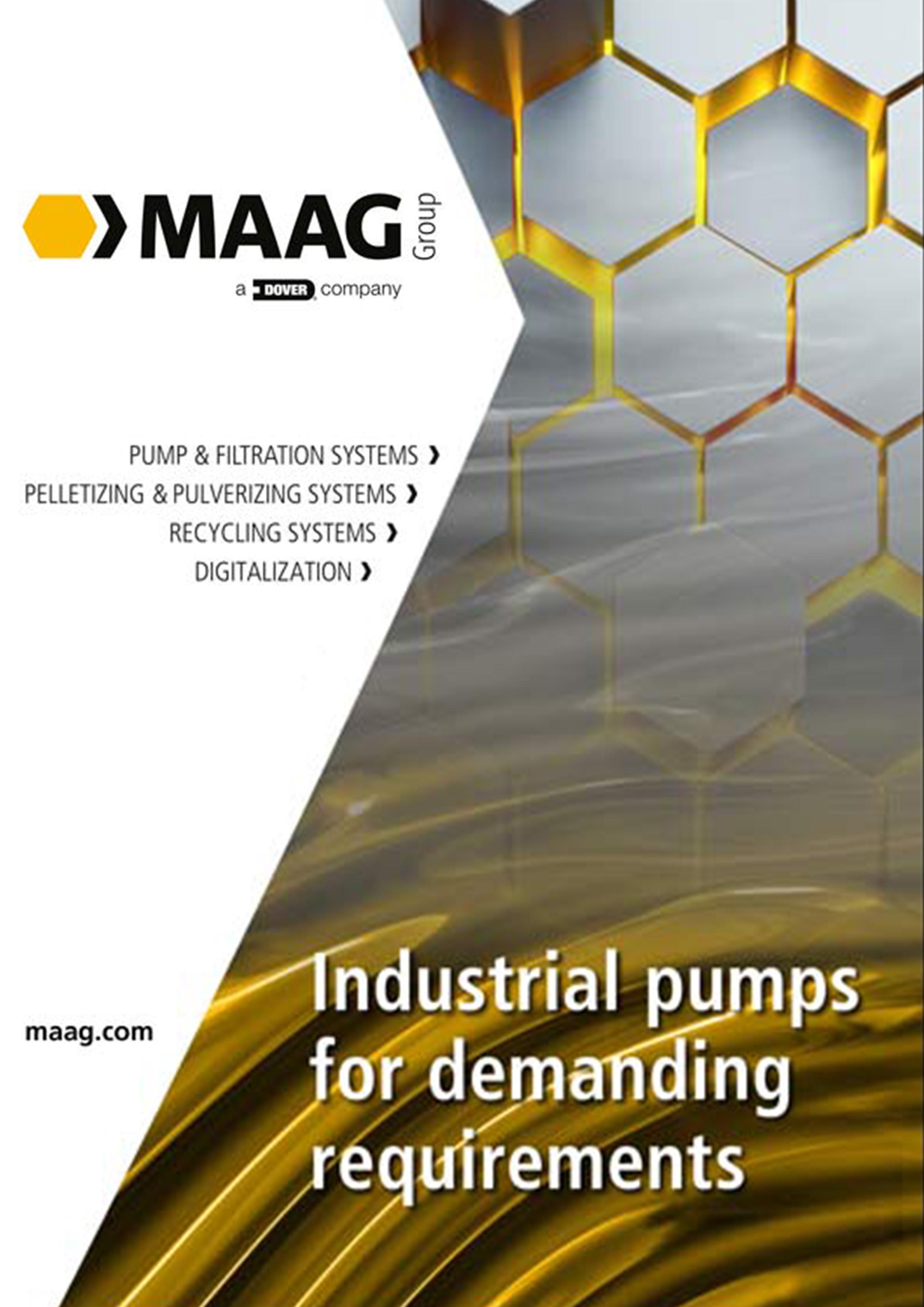
Digital technology for chemical distribution, supply chain in Asia Pacific and India.
Digitalization and data driven insights are key drivers of growth for the industry, and are ways of ensuring the ability to meet customer demands and business needs. At Azelis, our digital strategy has allowed us to keep a closer, real-time connection with customers and principals.
We have rolled out customer-facing digital platforms such as the Customer Portal and e-Lab, which provide customers with insights into trends, product information, and 24/7 access to our innovation capabilities and technical expertise. All this is supported by a cloudenabled technology backbone comprised of a centralized data lake, product information management solution, and customer relationship management tool.
Utilizing our master data management team based in India, Azelis leverages data to assist in pinpointing where our innovation efforts should focus to support the sustainable growth of our business. Data gives us a clear understanding of the needs of our customers, and allows us to better understand where we can improve our systems and increase global efficiency.
Company’s future strategies and roadmaps for growth.
Our mergers and acquisitions (M&A) are part of our group strategy to accelerate growth in the region and complete the lateral value chain
(LVC) in each of our strategic markets through strategic acquisitions. We actively search for the right acquisition candidates in target geographics and industries. This allows us to offer a larger coverage for our principals and enhance the portfolio offered to our customers.
We look for companies with a strong focus on specialties, technical expertise, formulation, and application development. What is essential is not only commercial strategic fit, but also the company must share our values and ambitions.
To support our M&A strategy from sourcing to integration, we have created new positions in our regional headquarters in Singapore and hired employees to ensure a successful end-to-end M&A plan. This also allows us to focus on integrating companies successfully into Azelis, finding synergies and creating a stronger combined company together.
R&D and innovation in chemicals distribution and supply chain.
Azelis’ ambition is to develop a globally connected network of innovation through our labs, that allows us to leverage insights and trends and enhance our formulations and technical expertise for all the markets we serve in the chemicals industry.

In Asia Pacific, we have over 20 dedicated application laboratories across market segments including Personal Care, Food & Nutrition, CASE and more. We recently inaugurated our Regional Innovation Center for Food & Nutrition in Singapore, that will articulate and orchestrate innovation across Asia Pacific for that market segment, collaborating closely with our local application labs to work as one team with one goal: to develop innovative formulations.
Thanks to our combined technical knowledge across the region, we are able to deliver ground-breaking formulations matching the unmet needs of the consumer market, and with our network of laboratories, we will be able to pro-actively develop conceptual formulations that allow manufacturers to tap into new markets and opportunities, while also providing localization of trends for specific countries. Our vision is to be a driver for positive and sustainable change within the chemicals industry through innovation.
Sustainability strategies for chemicals distribution and supply chain.
We are honoured to be awarded the EcoVadis Platinum rating, which puts us in the top 1 percent of companies assessed, and is a strong reflection of our commitment to sustainability. In tandem, we have developed our sustainability strategy, Action 2025, which is an integral part of our identity and business model.
As part of our Action 2025 plan, we have four pillars (People, Products & innovation, Governance and Environment), and we actively work across all four towards goals such as increasing our gender diversity ratio for senior management, increasing the percentage of our revenue that is covered with ESG assessed suppliers, reducing our carbon intensity, and ensuring zero material breaches in laws and regulations.
We also partner with Together for Sustainability (TfS) to assess the sustainability protocols of our suppliers, and help them develop their own sustainability practices and improve standards across the value chain. Being part of TfS and assessing our suppliers allows us to take action to influence sustainability within the chemicals and supply chain industry. Our sustainability goals are also linked to our innovation capabilities.
We aim to advance the sustainability agendas of our stakeholders, by leveraging our LVC and technical expertise to develop new or alternative sustainable formulations, cascading sustainable materials into the supply chain and innovating for a better tomorrow.
Opportunity for sourcing of renewable, recyclable, biobased chemicals for distribution and supply chain.
Sustainability is engrained in everything we do, which is why
we are actively reviewing our portfolio to identify sustainable products, which can then be used to develop sustainable formulations, and also allow us to suggest sustainable alternatives to our customers. This is especially important as consumers are increasingly more conscious about climate change and desire a more sustainable lifestyle.
Consumer demand focuses on products that support or minimize their own impact on the environment, especially eco-friendly products. We partner with blue-chip principals to ensure our portfolio contains a range of sustainable products to meet this requirement from consumers. We see strong demand for sustainable formulations, especially in Asia Pacific and India, from the Personal Care, Agri and Food & Nutrition market segments especially.
Our team of experts have already been working on plantbased alternative concepts, for example we recently assisted a customer with developing and launching a new oat milk for the Indian market. We plan to continue on this path, exploring further options to provide plant-based alternatives, which is also in line with our sustainability ambitions.
Challenges faced in chemicals distribution and supply chain in Asia Pacific and India.
Markets have been impacted by raw material shortages, supply chain disruptions, inflation, and price increases of raw materials. This has led to more instances of shortages of certain ingredients, increasing demand across the industry. Many other elements are also influencing these shortages, including geopolitical situations, which is affecting access to raw materials.
For Azelis, this presents an opportunity to focus even more on providing innovative and sustainable solutions to support customers with their challenges in this area. By combining our extensive portfolio of products and deep technical expertise, we are able to offer complementary products for formulations or sustainable alternatives to ensure customer requirements for certain products are met, assisting with business continuity.
Our team proactively proposes alternative products or formulations to address these issues, while working in close collaboration with our principals and suppliers to ensure their requirements are met. Innovation through formulation is our tagline and our mindset, where we demonstrate the value we bring by providing innovative solutions.
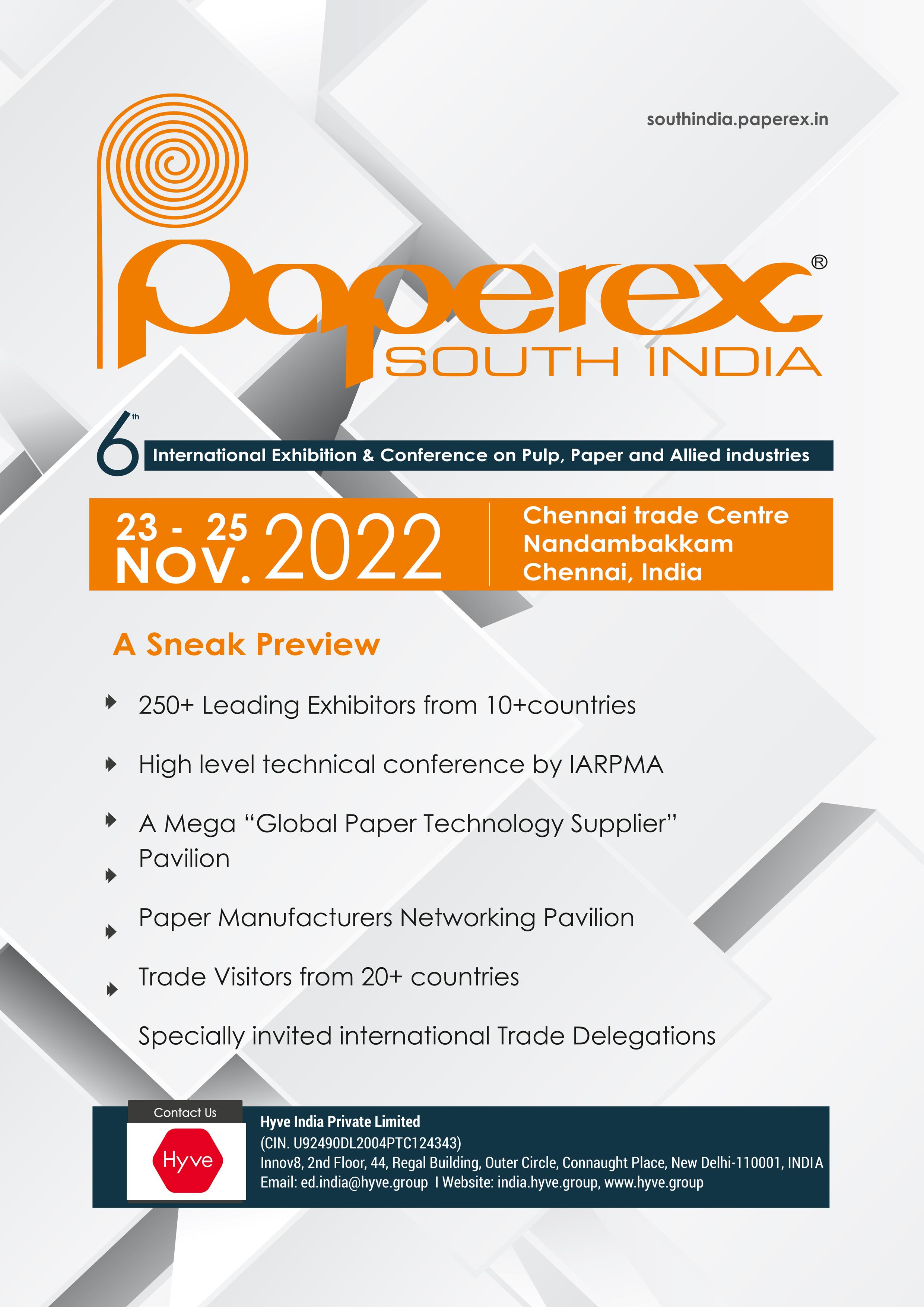 BY SHIVANI MODY
BY SHIVANI MODY
Macro economic trends, future dynamics in pulp & paper industry.
Global economy is passing through a challenging phase with threats of inflation looming large and rising interest rates. Russia-Ukraine conflict has queered the pitch putting paid to the post pandemic recovery. There is all round uncertainty in the global economic environment. Supply chain disruptions following the pandemic were already a drag on the economic recovery.
With threat to energy security and soaring commodity prices following the Russia-Ukraine conflict, the challenge for all the economies have gone up multifold, India being no exception. Though based on economic parameters, the Indian economy appears to be better cushioned against the uncertainties as compared to other large economies.
As a leading manufacturing sector, pulp & paper industry in India is also facing the onslaught especially since the sector is energy intensive and also import dependent for several raw materials and inputs. Major impact has been on the availability of pulp and wastepaper, and also coal.
However, the domestic demand seems to have revived after two years of disruptions. After the opening of schools and colleges, there has been a positive impact on demand for writing & printing paper. Office paper consumption is also witnessing recovery. A major shot in the arm has been the continuing demand for packaging paper and paperboard following the e-commerce revolution sweeping the country.
On a long-term basis, India’s paper industry is in a sweet spot. The consumption is projected to go up with the growth of the economy. The per capita consumption of paper in India is a low 15 kgs as compared to the global average of 57 kgs and 200+ kgs in developed
Rohit Pandit, Secretary General, Indian Paper Manufacturers Association (IPMA) delves into the journey of the pulp & paper industry and the opportunities that the tides of economic disruption can bring for this industry to sail through.

countries. Therefore, growth is bound to take place as the Indian economy grows.
The sustainability of paper is also being recognised. The ban on single use plastic has led to increased demand for paper for several applications. On its part, the industry is innovating to produce paper for all different requirements. With Government’s sustainability drive gathering momentum and consciousness to use sustainable products growing, paper as a biodegradable and recyclable product will benefit in the times to come.
Opportunities for the pulp & paper industry in India.
Paper industry is one of the traditional manufacturing sectors in the country having played a key role in India’s independence as paper was the medium through which our freedom fighters reached out to people at large and mobilised opinions. In independent India, the industry has continued to play a distinct role in meeting national objectives of education for all (Sarv Shiksha Abhiyan) and rural employment notwithstanding the challenges. As India completes 75 years of independence, it is important to recognise the unique contribution of the paper industry.
Agro / farm forestry is the principal source of wood for the paper industry in India, whereby over 1.2 million hectares of largely degraded land of the farmers has been brought under pulpwood cultivation. Over 5 lakh farmers are involved in the paper industry led agro-forestry programme. The paper industry is intensely involved in R&D. Pioneering work has been carried out by the industry over the last three decades in producing tree saplings which are disease and drought resistant and can be grown in a variety of agro climatic conditions.
Improving international trade with Asia Pacific and global markets.
For widening its export footprint, paper industry in India needs a level playing field available to its counterparts in other major paper producing countries. These include adequate availability of raw materials at competitive prices, export incentives to increase international trade, and also a level playing field domestically to compete with duty-free imports coming into India under the different free trade agreements.

No doubt, the paper industry is energy and water intensive. However, the industry, especially the organised players, have been working on reducing the environmental footprint. The industry has worked hard on reducing specific energy consumption. Under the PAT (Perform Achieve Trade) scheme of the Government, under the National Mission for Enhanced Energy Efficiency (NMEEE), the Paper Industry has been one of the top performing sectors, and has over-achieved the mandated stiff targets.
In fact, the industry has managed to bring down its energy consumption by about 20 percent in the last five years. Integrated paper mills in India generate over 40 percent of the power they use by utilising the biomass from the pulping process. Till a few years ago, the industry used to consume 200 cubic metres of water to produce a tonne of paper. Now, the integrated mills have reduced that to under 50 cubic metres.
A rising tide lifts all the boats. As the industry grows in size and scale, all the associated sectors, including chemicals used by the paper industry will find new avenues for growth. Indian manufacturing has received a fillip with the Government putting some checks on indiscriminate imports for realising the vision of AatmaNirbhar Bharat. The rules of origin have been tightened under the free trade agreements.
Directorate General of Foreign Trade (DGFT) has introduced a Paper Import Monitoring System (PIMS) by amending the import policy of major paper products from ‘Free’ to ‘Free subject to compulsory registration under PIMS’. Steps are being taken to curb dumping of paper and paper products in the domestic market by way of unfair means such as under-invoicing, mis-declaration, rerouting goods through other countries in lieu of trade agreements etc, while imparting a push to domestic manufacturing. Challenges faced by pulp & paper industry in India.
Yes, the industry has its share of challenges too. India is a fibre deficient country. Inadequate raw material availability domestically is a major constraint for the paper industry. Unlike its peers in other countries, paper industry in India doesn’t have access to industrial plantations around the mills making the cost of accessing pulpwood higher.
Secondly, the wastepaper collection / recovery mechanism (another source of fibre) is also not very strong in the country. Indiscriminate import and dumping of paper from low-cost producing nations is a continuous concern.
IPMA to support members, enhance effectiveness on a global level.
As a national industry body, Indian Paper Manufacturers Association (IPMA) represents the resurgent and organised face of the paper industry in India. IPMA provides an effective platform for interface with government, media, opinion leaders, NGOs, etc. so as to present the perspective of the paper industry and thereby participate in the policymaking process.
IPMA also provides opportunities for networking with international paper industry / forestry organisations. Industry’s collaboration with research institutes is a must for shaping future growth. IPMA provides a platform for industry-research collaboration besides offering avenues to sponsor and participate in events, workshops, seminars, exhibitions, delegations and promotional activities related to the paper industry.

BASF and footwear design house Maddy Plant have collaborated to explore the possibilities of BASF’s innovative material solutions and use industry-leading technologies that enable energy-efficient production, for its concept athleisure shoe ‘MADGAMMA - Intertekk Saturn’.
“The concept shoe features our winning ideas to make footwear sustainable and at the same time high performing. Our ambition is to bring these advanced technologies into mainstream footwear production,” said Minli Zhao, vice president, Consumer Industry, Asia Pacific, BASF Performance Materials.

Key features of the MADGAMMA - Intertekk Saturn are:
Upper of the shoe made with the 100 percent recyclable monofilament fiber Freeflex™ thermoplastic polyurethane (TPU): Freeflex conforms to the foot using minimal seams and stitch lines to provide superior comfort and maximum performance. It is also lightweight. Additionally, its transparency enables design flexibility.
Tongue of the shoe made of polyethylene terephthalate (PET) fiber knitted with Freeflex TPU elastic fiber: Freeflex TPU elastic
fiber is used as an alternative to dry spandex for its soft stretch performance. It is eco-friendly as it is made without organic solvents and uses cost-efficient manufacturing processes.
Replaceable midsole made with the lightweight, high-rebound, and bio-based Elastopan® N polyurethane (PU) series: Compared to conventional midsoles, the PU is made with bio-circular material, providing superior cushioning and durability while being more sustainable. Another replaceable midsole option is made with TPU foaming, which has a lower density, high energy return, and is recyclable. With the replaceable midsoles, users can choose a midsole for different occasions – the lightweight and high-rebound Elastopan midsole for sports performance or the TPU foaming midsole for casual wear.
Shank of the shoe made with bio-based Elastollan® N TPU series comprising 35 percent bio-content: Elastollan provides great stiffness and complements high-performance sport shoe components such as the torsion system for improved stability.
Outsole and cage made with bio-based Elastopan PU: The outsole made with Elastopan incorporates a high-grip tread pattern to optimize traction and provide maximum surface contact. The high-performance material also consists of 30 percent bio-content.
Two of The Coca-Cola Company’s biggest brands in North America are taking major steps to support a circular economy for plastic packaging. DASANI is rolling out bottles made from 100 percent recycled PET plastic (excluding caps and labels), and Sprite is transitioning from green to clear plastic to increase the material’s likelihood of being remade into new beverage bottles.
A majority of DASANI bottles in the United States—from 20oz. and 1.5-liter singles to 10-oz. and 12-oz. multipacks—will be offered in 100 percent recycled plastic rolling out this summer. In Canada, this innovation spans all DASANI bottles. The shift supports both DASANI’s pledge to remove the equivalent of 2 billion virgin plastic bottles from production by 2027 compared to 2021 levels and the company’s World Without Waste goal to use at least 50 percent recycled material in its bottles and cans by 2030.
The DASANI announcement follows a successful launch of 100 percent recycled plastic bottles in New York, California and Texas, which also included Coca-Cola Trademark 20-oz. bottles. The launch helped the Coca-Cola system identify the bestquality sources of recycled PET (rPET) and fine-tune production processes needed to make 100 percent recycled plastic bottles.

The initial launch helped drive consumer awareness through the bold, on-pack “100 percent Recycled Bottle” and “Recycle Me Again” calls-to-action also used on retail signage and other communications. DASANI bottles will continue to feature this messaging.
“Demand for rPET currently exceeds supply, so the first step to scaling up use of 100 percent rPET across our portfolio is building a sustainable pipeline of high-quality material,” said Chris Vallette, senior vice president of Technical Innovation and Stewardship, Coca-Cola North America. “We do this by working with communities to boost PET recycling and collection;
collaborating with recycling partners; and, finally, securing rPET to help ensure the material for our bottles is used again and again.”
“We saw how much the 100 percent recycled PET message truly resonates with our customers and consumers, particularly DASANI fans whose sustainability expectations are especially high,” Vallette added.
New Bottle, Same Sprite Sprite, meanwhile, is shifting all of plastic PET packaging from its signature green color to clear, beginning Aug. 1. Although green PET is recyclable, the recycled material is more often converted into single-use items like clothing and carpeting that cannot be recycled into new PET bottles. During the sorting process, green and other colored PET is separated from clear material to avoid discoloring recycled food-grade packaging required to make new PET bottles.
“Taking colors out of bottles improves the quality of the recycled material,” said Julian Ochoa, CEO, R3CYCLE, which is working with Coca-Cola Consolidated to enable bottle-to-bottle recycling across the largest US bottler’s 14 state-territory. “This transition will help increase availability of food-grade rPET. When recycled, clear PET Sprite bottles can be remade into bottles, helping drive a circular economy for plastic.”
In addition to transitioning to clear bottles, Sprite is introducing a new visual identity system featuring a revamped logo and packaging design to provide a consistent look and voice around the world. Sprite’s packaging graphics will retain the brand’s recognizable green hue and include prominent “Recycle Me” messaging.
Coca-Cola North America’s entire green plastic portfolio— including packaging for Fresca, Seagram’s and Mello Yello—will transition to clear PET in the coming months.
The BMW Group has implemented several projects in its packaging logistics to further save resources. With these projects, the Group aims to work closely with suppliers to reduce carbon emissions and realize the principles of the circular economy as best it can. As part of this initiative, the European plants will use more recycled material in their packaging.

This will mean that, for newly awarded contracts, the proportion of recycled material in reusable packaging for logistics purposes will almost double this year from around 20 percent to over 35 percent. However, using alternative sustainable materials, reducing singleuse packaging, introducing lightweight packaging in certain areas and reducing transport volumes will also help cut carbon emissions.
The BMW Group is monitoring the impact of individual measures via a CO2 calculator for packaging. The group’s overall aim is to reduce CO2 emissions in the supply chain by 20 percent per vehicle (compared to 2019).
“Our ‘re:think, re:duce, re:use, re:cycle’ approach is being implemented consistently in packaging logistics, too. We’re using innovative strategies to consistently reduce the volume of resources we use, thus reducing our carbon footprint. We in Logistics are also doing our part to get the BMW iFACTORY up and running –with a particular focus on the ‘green’ side of things,” said Michael Nikolaides, head, BMW Group Production Network and Logistics.
BMW iFACTORY. LEAN. GREEN. DIGITAL. is the strategic vision for the global production network, with an emphasis on flexibility and efficiency, sustainability and digitalization. It provides an answer to the challenges involved in the transformation to e-mobility and takes a global approach. ‘Green’ means leveraging the latest technologies to create a production process that uses minimal resources.
One example of how the BMW Group is fulfilling the criteria of a circular economy is the use of recycled material in EPP packaging (EPP = expanded polypropylene). Currently, our newly developed EPP packaging already contains 25 percent recycled material.
EPP is used in special containers as its shape can be adapted to the components being packaged, allowing them to be transported safely. Around 360,000 of these containers are needed each year. Using 25 percent recycled material allows us to save almost 280 tons of CO2 annually.
There are plans to increase this proportion of recycled material even further, with the first pilot schemes with 100 percent recycled material currently underway. If these tests are successful, this configuration will become standard for new contracts from 2024.
An additional 680 tons of carbon emissions savings can be made every year by using covers and so-called small load carriers with 50 percent recycled contents. As things stand, these measures are focused within the European markets due to the current waste management situation and available recycling infrastructure. We are currently working towards expanding to our locations in Mexico, the USA and China.
The BMW Group is introducing something that will have an even greater impact on emissions: folding large load carriers. As of this year, instead of pallet cages made of steel, we will be using folding plastic alternatives made from over 90 percent recycled material. These work in a similar way to the collapsible shopping crates that most people are familiar with: when they are empty, they can be folded up, making them easier to transport. Using 15,000 of these new containers reduces CO2 by around 3,000 tons per year.
Kuraray Co Ltd announced that CLARINO™, a man-made leather has been chosen by Lenovo Japan for the top panel of its ThinkPad Z13 laptop computer series. This is the first time that CLARINO™ has been used in a Lenovo laptop computer.

Lenovo has been developing new ThinkPad laptop products for users who are not only concerned with performance and design but are also environmentally conscious. For this project, Kuraray’s environmentally friendly CLARINO™ man-made leather made from recycled plastic aligned with the product concept and was adopted for the ThinkPad Z series, Lenovo’s flagship notebook PC.
The base material used in this CLARINO™ microfiber nonwoven fabric is recycled PET resin derived from recovered plastic drinking bottles (the ratio of recycled raw microfiber material is over 95 percent).
This high-end man-made leather is used in luxury applications; it has scratch resistance, abrasion resistance, chemical resistance, good stamping workability, and other functionalities required for the top panel of the ThinkPad laptop computers, which are characterized by high durability, as well as an irregular surface that creates a beautiful finish.
“The ThinkPad Z13 is a product that aims to be functional and beautiful, yet sustainable at the same time. Kuraray’s CLARINO™ was the best material to achieve these goals,” said Yasumichi Tsukamoto, executive director, Yamato Research Institute, Lenovo Japan.
Kuraray has launched its medium-term management plan, “PASSION 2026,” as a five-year plan through 2026, the 100th anniversary of its founding. To realize our long-term vision “Kuraray Vision 2026” we will strengthen internal and external organic collaboration and create innovation.
boron-free Bonderite portfolio of solutions for cleaning, lubrication and cooling for metalworking ensures that the sustainable path can be taken without compromise.

Boron- and bactericide free, innovative products such as the Bonderite L-MR 21718 lubricant and Bonderite C-NE 10640, provide a safer working environment that also reduces waste and energy consumption for example by recycling the cleaner in the lubrication process.
“At Henkel we strive to be leaders in sustainability, not only through our own business practices but also by creating high performing solutions that empower our customers to forge more sustainable paths forward and shape greener and cleaner value chains,” commented Martin Desinger, technology manager for Cleaners & Lubricants, Henkel.
“The key to effecting this vital change is innovation that makes the sustainable choice also the smarter business choice - where the solution that protects the environment is also a cost-effective one that delivers exceptional performance. With our boron-free product portfolio, we are offering state of the art solutions that help businesses gain a competitive edge while optimizing their environmental performance,” said Desinger.
Boron has been conventionally used in metalworking products to inhibit the proliferation of bacteria and as a fungicide, yet these biocidal qualities also present environmental risks and risks to workers. However, Henkel’s boron-free formulations deliver exceptional stability without these added risks, while providing a skin-safe option for greater workplace safety.
Henkel’s emulsifier system adds greater lubricity to increase tool life while reducing the oil content of products – providing equivalent or greater lubricity and more dispersion. This delivers the added advantage of reducing consumption levels by around 30 percent on average and up to 50 percent – reducing waste and water consumption, while reducing CO2 emissions by cutting fossil fuel use.
Boron and bactericide-free, this water-miscible coolant is ideal for the general machining of steel, aluminum, and grey cast iron materials (alloys) as well for non-ferrous metals in a material mix. The “Allrounder” for nearly all machining operations (grinding, turning, drilling, milling, threading, honing, etc.).
The high lubricity of Bonderite L-MR 21718 extends tool lifetime and reduces process costs. Its excellent cleaning performance keeps machines clean, while reducing maintenance costs.
This boron and bactericide-free, biostable cleaner is suited for nearly all materials with corrosion protection, useful at low temperatures, for spray and emersion cleaning processes. At the end of the cleaner bath life, the product can be recycled into the L-MR emulsion to reduce waste, water, and product consumption, as well as CO2 emissions.
With the new European legislation (17th ATP) coming into effect December, Henkel’s Bonderite boron free product range ensures compliance with the product chemical composition.
and dairy dessert company, Lactalis Nestle, has become a pioneer in incorporating recycled plastic from Repsol Reciclex® range to manufacture its chilled dairy product bottles, thus taking another step in the transition towards the circular economy.
Yogurt
To manufacture of this circular plastic, we use cuttingedge technologies that allow us to give new life to plastic waste that until now could not be mechanically recycled and enable its use in food containers. In addition, all our circular materials have the ISCC PLUS certification that ensures their traceability.
Since June this year, Lactalis Nestle, the yogurt and dessert division of the Lactalis Group, has been using recycled plastic in its chilled dairy products bottles, which are made with our Repsol Reciclex® circular polyethylene. The company is a pioneer in using this material in the chilled dairy products category. This initiative constitutes an additional step towards the circularity of food contact packaging.

Both companies are committed to sustainability and promoting the implementation of circular packaging for the food sector, one of the industries with the most technical and safety demanding requirements.
Thanks to this agreement, the Nestle Kefir range bottles
produced in Guadalajara for Spain and Portugal are made with 30 percent recycled material. Similarly, the material used for the Yoggi brand drinking yogurt bottles, marketed in Portugal, contains 10 percent recycled material. Furthermore, these contents are certified according to the ISCC PLUS mass balance approach.
To manufacture these circular materials, we use advanced recycling technologies that allow its use for food contact. This cutting-edge technology makes it possible to reuse plastic waste unsuitable for mechanical recycling, thus giving it a second life.
Therefore, this waste becomes a new raw material for our processes, allowing the us to produce new circular materials with the same quality and functionality as virgin plastic but more sustainably. For this reason, these circular materials meet the food industry’s highest quality and hygiene standards.
The entire value chain, our company, as the supplier of the material, through Logoplaste, the manufacturer of the bottles in the Lactalis Nestle factory in Guadalajara, and Lactalis Nestle, as responsible for the product and the filling of the containers in Guadalajara, has the ISCC PLUS certification, which ensures traceability of the recycled materials used throughout the process.

Adhesive is a chemical mixture that is used to join two surfaces, whereas a sealant is used to prevent fluid leakage. However, the technology that goes behind making adhesive and sealants is much more than just the sticky job. Next-gen adhesives and sealants need to provide the right strength, be weightless and also significantly reduce the environmental impact on its usage.
Although they remain as an invisible element in the objects they are used in, adhesive and sealants play a major role in the strength and tenacity of some of the fastest cars and tallest buildings ever designed.

Adhesives and sealants technology finds its use in a wide range of sectors, such as paper packaging, woodworking, footwear manufacturing,
building & construction, electrical & electronics, automotive and even medical sectors.
According to Allied Market Research, the global adhesives and sealants market which was valued at $51.9 billion in 2020, is projected to grow at a CAGR of 5.1 percent to reach $85.0 billion by 2030. The adhesive segment accounts for 86.04 percent of the adhesives and sealants market share in 2020 and is projected to grow at the CAGR of 5.0 percent.
Among these sectors, construction has always been the biggest growth sector in this industry. However, the pandemic had a major blow on this segment wherein the adhesives and sealants market were negatively impacted owing to its over-dependence on the sector.
Other sectors, like automotive, aerospace etc too witnessed a steep decline during this period. Despite being negatively impacted in the past two years, the adhesives and sealants market is picking up pace again with the growth in construction, automotive etc. The industry is now diversifying itself to new applications to expand its market. Here are some new sectors which is boosting the growth of adhesives and sealants:
Automotive Adhesives: Although the automotive industry received a huge hit during the pandemic which significantly affected various segments including the adhesives and sealants segment, the industry is in a post pandemic recovery mode. With reviving numbers
of automotive manufacturing, various segments are also seeing growth. In the adhesives and sealants segment, the industry is aiming for high performance adhesives which are also environment friendly.
According to markets and markets, the automotive adhesives market is projected to grow from $6.6 billion in 2020 to $9.3 billion, at a CAGR of 5.9 percent between 2021 and 2026. The growing trend for lightweight and low carbon-emitting vehicles and the high demand for automotive adhesives from APAC are the drivers in the market.
The major trend is towards sustainability where the industry demands a shift to more environmentally friendly vehicles, materials and processes. This is also driving the adhesives and sealants market.

The technologies in automotive adhesive have paradigm change in recent years. From solvent-based adhesives, the solutions have moved to solvent free adhesives and water-based adhesives. There is a rising use of methyl methacrylate adhesives, eco-friendly automotive adhesives, and water-based adhesives in vehicles.
This is because of the increasing demand for lightweight materials in vehicle manufacturing and replacement of mechanical fasteners with adhesives to make vehicles lighter and to meet higher fuel economy requirements.
Water-Based Automotive Adhesives are becoming the preferred choice for automotive interior assembly application as they are versatile and provide advanced bonding to meet the requirements of the automotive market. Water-based adhesives are developed using a combination of water, polymers, and additives. It also has other benefits like lower costs, lower VOCs and safer for the environment.
Green Automotive Adhesives is also on the rise. Green adhesives mainly refer to the adhesives produced by removing all chemicals. Companies are replacing solvents with environmentally compatible solutions. These adhesives are rust free and also decrease the likelihood of water and snow penetration, making a stronger and long-lasting bond for vehicles.
Bio medical Adhesives: While we mostly talk about the superficial use of adhesive and sealants on objects and structures, biomedical adhesives and sealants market is fast becoming a strong area of growth for this industry where advanced adhesives for dentistry and surgical procedures are being used.
Traditional techniques such as sutures and staples are soon becoming obsolete as medical science is moving towards solutions that provide clinical safety, good cosmetic results, lower infection rate and ease of use.
Biomedical adhesives and sealants are not just the modern way of treatment but is also affordable, reduces healing time significantly and is fast becoming a preferred solution for sealing medical wound in surgical procedures.
According to Markets and Markets report, the medical adhesive market is projected to grow from $8.8 billion in 2021 to $12.3 billion by 2026 with medical implants market being the key growth area especially in the APAC region.
Adhesives and sealants in dental applications will be a major growth area with the rise in growing older population and growing need for dentures and dental caries. Adhesives in dentistry ascertain durability in dental procedures by providing effective bonding.
Biomedical adhesives and sealants market from internal wound applications will also be a soaring market in the near future where bioadhesives can play a major role in chronic organ leak repairs to limit bleeding complications. Such procedures require adhesives that are safe, effective, and non-toxic.
With increasing number of medical procedures and surgeries in cardiovascular and digestive systems, musculoskeletal system surgeries and accidents which require sutures etc, innovative and efficient adhesives and sealants materials can be a boon to the medical science.
Chemence Medical Inc, an Atlanta-based manufacturer and distributor of adhesive-based medical devices, has introduced its Exofin Precision Pen - which contains a skin closure adhesive, with high-viscosity, fastdrying adhesive with a 14-day microbial barrier, which enables doctors, and medical professionals to close wounds quickly while providing patients with long-lasting protection. The pen is glass-free and has ergonomic design, multiple application options, variable flow rate for the use of high-viscosity adhesive.
The company also recently launched an innovative two-part skin closure system, exofin fusion, which combines a self-adhering flexible mesh strip and a fast-curing 2-octyl cyanoacrylate topical adhesive to
close and seal incisions while forming an immediate microbial barrier to protect against infections and keeping the site comfortably sealed until post-surgical removal.
“We consulted with healthcare professionals across many different disciplines and found that the current wound closure devices all presented similar challenges, which were an increase in cellulitis as well as blistering of the skin, or skin shear,” said Jeff Roberson, president of Chemence Medical.
“We took their comments back to our scientists, engineers, and product design team and began the work of eliminating those parts that may be causing this elevation of adverse events. We feel that our newly designed product has successfully eliminated the factors that could lead to poor patient outcomes while still delivering on the great attributes that a product like this can offer.”
Henkel Adhesive Technologies recently announced its investment in Smartz AG (Smartz), a Switzerland-based medical technology start-up, to drive innovative smart adult care solutions.
“As part of our corporate venturing activities we are focusing on novel and scalable technologies complementing our existing portfolio in adhesives, sealants and functional coatings with data-driven business models”, said Paolo Bavaj, head, corporate venturing, Adhesive Technologies.
Adhesives for Electronics: Electronic and electrical device manufacturing is a huge industry which is globally witnessing a rampant growth. High grade adhesives and sealants are required in electrical & electronic devices such as tablets, smartphones, laptops, etc for bonding various components.
Dow launched its Flexible Silicone Adhesive for flexible and foldable displays of smartphones, wearables, laptops, televisions and other electronic device. This two-part primerless silicone adhesive is applied directly to thin metal surfaces and forms an elastic layer to protect the display from damage caused by folding and unfolding.
“Manufacturers of flexible and foldable devices need an elastic adhesive that is easy to process, cures at low temperatures and can withstand repeated folding and unfolding,” said Jayden Cho, global marketing segment leader for Consumer Electronics at Dow. “This breakthrough Dow adhesive speeds production with primerless adhesion, cures efficiently with mild heat and has the right modulus for an elastic layer within a foldable display.”
Packaging adhesives: Since 2020, increase in awareness for hygiene-related activities has surged the growth of the packaging sector where adhesives are widely used for packaging of drug delivery system, construction materials, automotive & logistics, and other consumer and industrial goods. This acts as one of the key drivers for the growth of the adhesives and sealants market.
3M launched a new manufacturing bonding solution that ensures elevated levels of automation, simplicity, and sustainability across industries. The high strength acrylic foam tape has the versatility of liquid adhesives in a single contained footprint enabling usage on any scale.
“It’s an entirely new category of product and bonding solution for manufacturing innovation. This bonding system creates endless design and application possibilities at scale -- whether you’re a global multinational or a local manufacturing business,” said Patrick Meifert, global portfolio director of 3M.
The technological evolution in the adhesive and sealants is constantly trying to align these ingredients for various industry segments. The opportunities for this market is immense, provided that next gen adhesive and sealants technology remain one step ahead of the future requirements of every industry.

Spread across a plush expanse of over 10 acres, Kluber Lubrication India’s Mysuru plant in Karnataka, India, promises world class lubricants for every industry. The 40,400 sq mts of factory buildings serves three brands of Freudenberg Chemical Specialities SE including Kluber, OKS and ChemTrend which also boasts of QMS and EMS Global Matric certifications.
The company focuses on creating tailor made solutions through innovation. “This is the core philosophy of both Freudenberg and Kluber and this foundation makes it a “frictionless” association. The advantage of being part of Freudenberg for starters, helps Kluber access a larger playing field in terms of geographies and markets. Moreover, being part of such a diverse group – there are also the synergies of shared services, shared customers and also a shared talent pool,” said Hitendra Bhargava, CEO & Regional Management Board Member, Asia Pacific, Kluber Lubrication India Pvt Ltd.
Kluber Lubrication which has been a pioneer in specialty lubricants since 1929 offers solutions for all industries including automotive, bearings, cement, chemical, food, metalworking, mining, oil & gas, pharmaceutical, railways, rubber and plastics, paper, textile, wind energy and many more industries.
“Speciality lubricants are at the core of our business. We offer our customers expert tribological solutions by supplying tailor-made speciality lubricants directly to customers in almost all branches of industry and regional markets. Our customers include producers of components, modules, machines and systems as well as companies using this equipment for their own production or processing activities,” said Bhargava.
Kluber Lubrication offers approximately 2000 different speciality lubricants, many of them developed and manufactured to specific customer requirements. With competent and customer-oriented consulting and wide-ranging services, the company has established its reputation as a partner to industry and trade.
With a global network and subsidiaries in 33 countries, the company still maintains a “global yet personal” motto in their functioning. The company offers personalised and customised solutions to each of its customers.
“We are in the business of speciality lubricants, and in this domain, we are the market leaders. With regard to industries, we are fairly diversified with more than 30 designated industry market segments. Looking to the future for Kluber India – we see a lot of scope for growth in the Automotive, Cement, Steel, Textiles and Renewables sectors to name a few,” said Bhargava.

As a specialty lubricants expert, Kluber Lubrication India offers customized solutions in oils, greases, pastes, bonded coatings, waxes and corrosion protection.
Kluber’s solution in oils include gear oils, adhesive lubricating oils, chain oils, compressor oils, solid lubricant suspensions, etc.
It’s solutions in greases include those for valves and fittings, gears, pneumatics, electrical contacts, etc. and, corrosion protection solutions include, storage rust preventives, rust removers, protection against contact or tribo-corrosion (fretting).
The company also boasts of 100 percent compliance with REACH, TSCA and many more certifications in the area of Quality management, Environmental protection and workplace safety.
Kluber Lubrication has globally more than 200 employees working in Research & Development and has development centres and production in 14 countries which includes state of the art laboratories with more than 110 test rigs, extensive analytical section and customized test equipment which provides expert consultation to their customers.
“We have development centers and production in 14 countries. We have state of the art laboratories with more than 110 test rigs at our headquarters. Many of these test rigs are as per industry standard but a number of them are even customized. Furthermore, we have an extensive analytical section which helps us provide expert consultation to our customers,” said Kanakaraju T, CTO & Regional Executive Board Member, Asia Pacific, Kluber Lubrication.
One of the breakthrough innovations from Kluber has been Hydro lubricants – an innovative solution of using water as a functional constituent for industrial applications. As water provides a natural cooling effect, it enables effective reduction of temperature in the components while increasing energy efficiency and component life considerably. Hydro Lubricants also help optimise the processes of occupational health and safety, opening up an environmentally sustainable path to the future. The company also won a German Innovation Award for this innovation.
Another innovation from Kluber India has been in the lubrication of continuous casters in steel plants. The lubricants in the casters are exposed to high temperatures, high loads, constant vibration, and contamination with water.
As a result, many a time the lubricant which is supplied through distributor pipes, tends to fail even before it reaches the bearings. The failure of the lubricant to not reach the bearings, puts the casters at risk and it also poses serious health hazards to the maintenance personnel. Kluber devised a novel formulation which not only solves these problems but also significantly reduces the lubricant consumption contributing to sustainability.
The automotive industry is undergoing a paradigm shift with the advent of e-vehicles. The role of lubrication will also undergo a huge change. Kluber however has a more positive approach towards this change.
“Needless to say, that new mobility in general and e-mobility in particular are bringing about a paradigm shift in the Auto sector. We commissioned a global research project some time back to assess the impact this would have on our business. The result was a mixed bag of positive and negative impacts,” informed Kanakaraju.

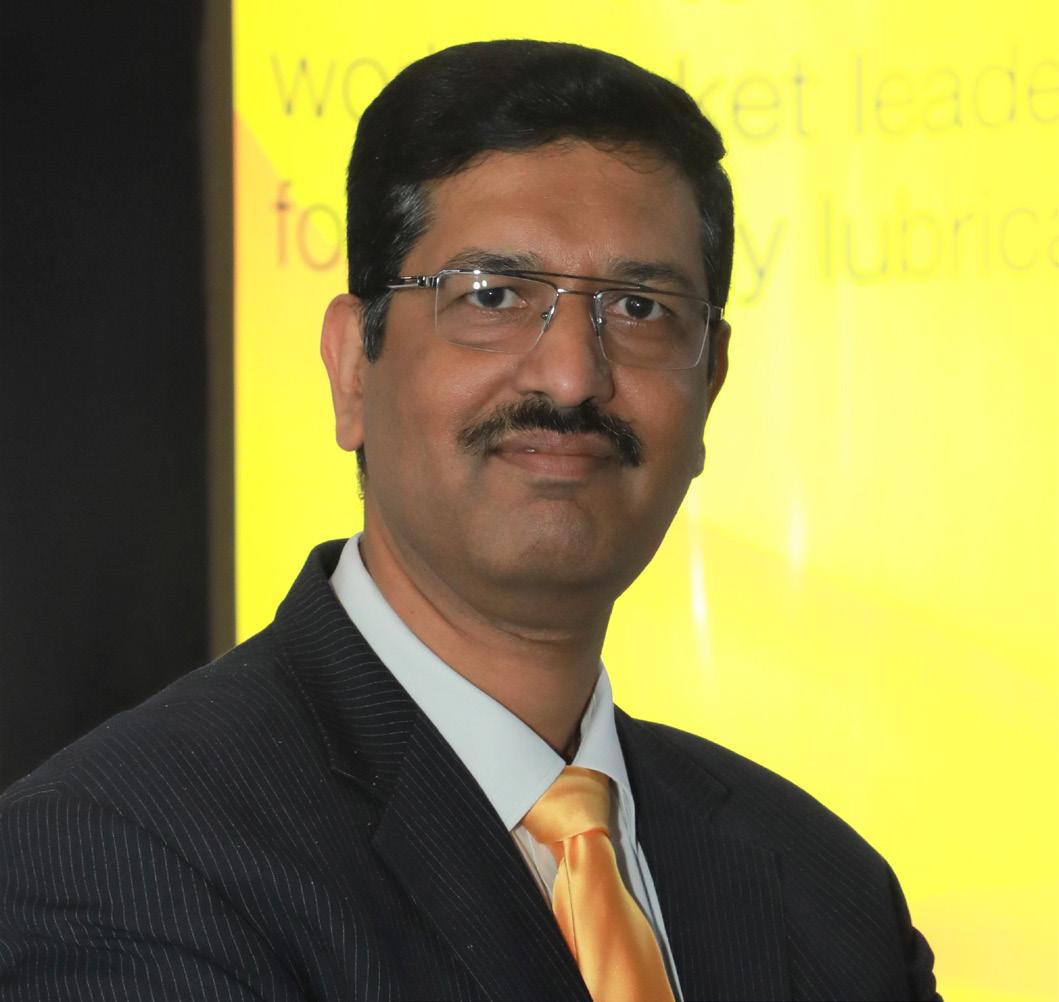
“But on the whole, given that our products are not heavily and directly linked to the combustion engine itself and are used in the automobile as a whole, we see a lot more opportunities than threats. We also have a complete product portfolio for new mobility solutions which makes us optimistic about our future business in the automotive segment,” he added.
“Together with our customers, we want to be sustainable in the long term. This involves using environmentally friendly raw materials, saving energy and resources at our sites, and reducing CO2 emissions through renewable energies. That’s how we reduce our own footprint. Here at our Mysore facility, we are already using more than 60% of energy in production from renewable sources. To this end, we have also installed a solar panel on the roof of our manufacturing plant,” delved Kanakaraju.
“With our products, we support our customers in achieving their sustainability goals. Our handprint, i.e. the impact of our products at the customer helps to reduce their footprint. We have a concept called energy efficiency in which we help customers to switch to lubricants which lower the energy consumption of their equipment. We also reduce the handprint by encouraging customers to use products which last longer thereby reducing wastage,” he added.
Hitendra Bhargava - CEO Kluber Lubrication India Pvt Ltd Kanakaraju T - CTO Kluber Lubrication India Pvt LtdKluber Lubrication’s efforts towards Sustainability have been recognized by being awarded a Gold medal by EcoVadis Sustainability rating.
Kluber has been working consistently energy reduction. In 202021, the company took several steps towards reducing energy consumption in the facility by implementing motion sensors, timers, LEDs at various locations. By 2025, the company aims to take several steps towards Energy Footprint Reduction to bring down energy consumption per ton by 5 percent.
“We save millions of Euros for our customers every year through efficient operation, energy saving, reduction of lubricant portfolio, reduced lubricant consumption, reduced downtime, increased system performance and increased safety and compliance,” asserted Kanakaraju.
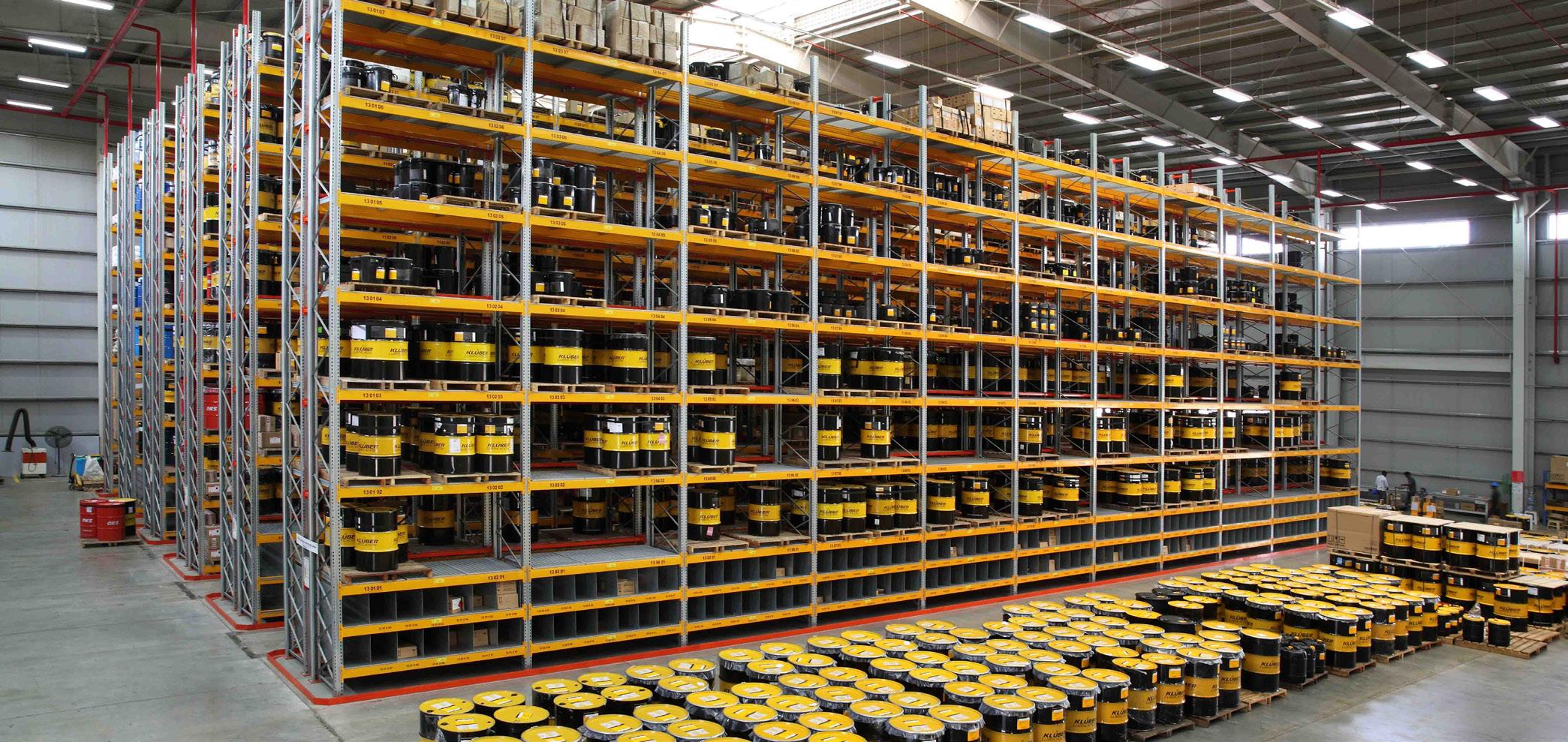

Undoubtedly, Kluber India is the market leader in the business of
speciality lubricants and their drive to cater to the unique needs of each of their customers is what makes their services unique as well.
“We create tailor made solutions through innovation – is the core philosophy of both Freudenberg and Kluber. This foundation makes it a “frictionless” association. The advantage of being part of Freudenberg for starters, helps Kluber access a larger playing field in terms of geographies and markets. Moreover, being part of such a diverse group – there are also the synergies of shared services, shared customers and also a shared talent pool,” pointed out Kanakaraju.
The company’s future growth will come from a few different segments like the new mobility in automotive, renewables, textiles, and heavy industry. “Our approach would be to offer a better value proposition through our well-packaged services backed by our digital tools for evaluating equipment performance. We see Sustainability to be an increasingly significant part of our value offering to customers through the use of our products,” he added.

WildWonder – a hue inspired by the warm tones of harvested crops – is AkzoNobel’s Color of the Year 2023. Its upbeat glow connects us with nature, creating a sense of energy and positivity.
As people search for support, connection, inspiration and balance in the world today, they’re diving into the wonders of the natural world to find it. Extensive research conducted by a team of in-house paints and coatings color experts and international design professionals found hope at the heart of global social, design and consumer trends.
“Wild Wonder speaks to us in a language we instinctively understand,” said Heleen van Gent, Creative Director of AkzoNobel’s Global Aesthetic Center. “Nature is what inspires us and makes us feel better in our lives and in our homes. That’s why, for the first time in 20 years, our entire color palette is inspired by the rhythms of nature.”
Four decorative paint color palettes have been designed around Wild Wonder: Lush Colors (the forest hues), Buzz Colors (meadow brights), Raw Colors (harvest shades) and Flow Colors (seashore tones). For consumers personalizing their homes and urban environments, the palettes make it easy to choose wall colors for a timeless look that’s also bang on trend.
“Our research insights are also invaluable for industrial customers looking for the perfect finish,” said Michael Friede, Chief Commercial Officer for Performance Coatings. “We develop market-specific offerings based in color and materials research and market analysis. I’m especially excited to share this bold, nature-infused color story with our customers. It’s what we’re all about: People. Planet. Paint.”
Color of the Year is the spark of inspiration that ignites a longterm design partnership with industrial coatings customers. Ontrend colors, textures and special effects have been designed for the aerospace, automotive, consumer electronics, metal furniture, lighting, cabinetry, flooring, building products and architecture markets, as well as decorative paints.
Using innovative digital tools such as the AkzoNobel Design app, coatings experts and customers work together to create the best finish for their products.
The year 2023 brings two major milestones to the Global Aesthetic Center. Its ColourFutures trend forecast will celebrate its 20th anniversary, while the team also reaches three decades of trend analysis, color research, color design and art direction at AkzoNobel.

Each year, designers for BASF’s Coatings division create a new collection to inspire automotive designers around the globe. The 2022-2023 collection is called NEW ARRAY, providing innovative shades with an increasing focus on sustainability and functionality, while still moving into new and exciting color spaces.

The collection title NEW ARRAY refers to the thoughtful process of ordering values and responding to new needs. Think of it like being on an escalator. It’s a mode of transportation that does not belong to the previous nor the next level, taking the rider to a liminal space inbetween. This collection immerses itself in that space to look forward at the future of mobility.
The colors of Europe, Middle East and Africa reach high chromaticity with spectacular new pigments – enabling beautiful and intense new shades.
The darker tones are fine and smooth. Neutral color shades play with a virtual look by adding subtle color information. Effects are there to support the idea and visual impression.
“Overall, identity is shown not only through uniqueness, but also in the ability to subtly extend the already unique character of diverse color positions or effects,” said Mark Gutjahr, head of Automotive Color Design, EMEA.
Standing in a liminal space, the colors of Asia Pacific bring us comfort, happiness, spice, and solutions reflecting human individuality, which
is expanding and gaining importance. They show people how to live gently and vividly with their own narratives.
“AP’s colors shape a positive and realistic future. They draw your own story allowing you to align with your colorful identity away from the social pressures,” said Chiharu Matsuhara, head of Automotive Design for AP.
Society is grappling with its directional pull, whether to move in a radically different aesthetic without losing touch with sophisticated appearance and compelling effects. Visions of progress emanate through the Americas colors with depth, texture, and compatibility. Expressions of natural and simplified options beckon both individuals and communities to embrace liminal spaces.
“Dealing with a plethora of emotions and conditions associated with both individual and communal identities, one may find solace and acceptance beyond the typical confines of tangible life,” said Liz Hoffman, head of Automotive Design for the Americas. “Moving through the liminal uncertainty may ultimately provide grounding and opportunities to see into the future.”
Every year, the designers of BASF’s Coatings division study future trends which they use as foundation for the development of surface, texture and color positions. They draw inspiration from industry, fashion, consumer products, nature, technology, and more. This research is shared with BASF’s customers, the automotive designers, to drive future mass production plans.


The Asia Pacific sealants and adhesives market attained a value of nearly $21.6 billion in 2020. It is expected to witness a steady growth in the forecast period 2022-2027 and is projected to reach $28.3 billion by 2026.

Globally, paper, board and related products along with building, construction, civil engineering, and craftsmen are the major end-use industries for adhesives. Construction is also a major end-use segment for sealants along with consumers and DIY. Silicones are the leading sealant types. Reactive systems and water-based adhesives, on the other hand, are the significant adhesive types.
Water-based and hot-melt adhesives are preferred for applications in paper and board, among other related materials. Adhesives are used for various paper and board bonding applications like lamination of sheets, constructions of corrugated boxes, and building packaging materials for a diverse number of consumer products like books, paper towels, and toilet rolls along with large industrial tubes utilised by manufacturers. In construction, a significant application sector for both sealants and adhesives, adhesives find their use in laying tiles and carpets, roofing, flooring, wall coverings, drywall lamination, and timber jointing, among other related applications.
The Asia Pacific is one of the largest markets for sealants and adhesives driven by the rapidly developing emerging economies within the region. China is the leading market in the region accounting for over a half of the regional industry. Japan and India are also some of the significant markets in the Asia Pacific. The healthy growth of the construction industry in China and India is expected to aid the sealants and adhesives market.
The global construction industry is projected to attain $15.5 trillion by 2030, with China and India along with the US accounting for almost 57 percent of the expected growth. The infrastructural growth in China is being driven by the expansions planned in the railway network by the China State Railway Group (CR). In India, the construction sector is buoyed by the planned investments into expanding the urban infrastructure and building affordable housing by the government.

The Asia Pacific sealants and adhesives market is being driven by the growing infrastructural developments taking place in the region due to the rapid urbanisation. Nearly 60 percent of the global population resides in the Asia Pacific region. By 2040, the population of the cities in the region is expected to exceed 2 billion.
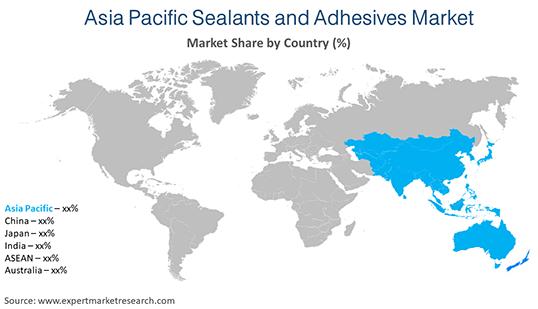
The construction industry is, thus, finding impetus for its growth in the rapidly rising population. The sealants and adhesives industry will find further impetus in the rising construction of smart cities in the Asia Pacific. The investments in smart city technologies are expected to attain $45.3 billion in 2021 (excluding Japan).
The healthy growth of the economy in the region is also aiding the market growth, as it is driving the revenue growth of the various end-use sectors of sealants and adhesives like the construction and automotive sector. Between 2020 to 2023, the GDP in the emerging nation in the country is expected to grow at an annual average of 6.1 percent. India is expected to witness a robust economic growth in the coming five years, with its economy growing at an average of 7.3 percent.
The Asia Pacific sealants and adhesives market is also being propelled forward by the rising demand from the growing packaging industry in the Asia Pacific. The packaging industry in the region is being driven by the rapid growth of e-commerce platforms and the rising consumption of packaged goods across food and beverage, and personal care sectors. Sealants and adhesive are also finding extensive use in the automobiles industry, especially in the manufacturing of light-weight vehicles. The thriving automotive market in China and India will aid the growth of the Asia Pacific sealants and adhesives.
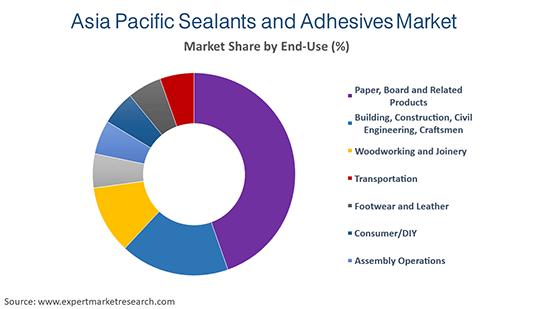
Sealants usually have paste-like consistencies and are used to fill in the gaps between surfaces and joints. Adhesives, on the other hand, are used to attach two surfaces with adhesion. While adhesives are stronger than sealants, sealants are more flexible of the two. Sealants are categorised as:
• Others
They find their applications in construction, consumer and DIY, transportation, and assembly, among others. Adhesives, on the other hand, find their applications in sectors like paper, board, and related products, building, construction, civil engineering, and craftsmen, woodworking and joinery, transportation, footwear, and leather, consumer/DIY, and assembly operations, among other sectors. They can be broadly be categorised as:
• Reactive Systems
Epoxy
Polyurethane Others
• Solvent Based Vinyl Acetate
PVA (Polyvinyl Acetate) Rubber Others
• Pressure Sensitive Acryl Rubber Others
• Water Based Acryl Emulsion Vinyl Acetate Others
• Hot Melt EVA (Ethylene Vinyl Acetate) Rubber Others
Some of the key players in the Asia Pacific sealants and adhesives market are: Henkel AG & Company KGaA, HB Fuller Company, Arkema Inc, Sika AG, Wacker Chemie AG, Saint-Gobain SA, Evonik Chemicals Ltd, Pioneer Adhesives Inc, Shandong Evergain Adhesive Co Ltd, ITLS (H.K.) Co Ltd, Pidilite Industries Ltd, among others.
•
•
•
•
•

The Asia-Pacific mining chemicals market was estimated to be $1,549.65 million in 2017. The market is expected to register a CAGR of 4.72 percent during the forecast period from 2021 to 2026. China is expected to lead the market, followed by India. By the function segment, floatation chemicals are expected to possess high share in the market.

Specialty chemicals are used in almost all the steps in the mining process. The mining industry has witnessed shifts in its production techniques, from tunneling to open pit mining, which has made it possible to mine ores of declining grades, and decrease the overall costs. In addition, specialty chemicals are also used in the later stages of production chain, like smelting, refining, manufacturing, and commodity trading.
Flotation Chemicals – the fastest-growing segment by function Collectors dominated the flotation chemicals segment in 2017, while dispersants are expected to register the fastest growth through 2023. However, certain factors, such as logistics and transportation costs of flotation chemicals and stringent regulatory policies, are expected to adversely affect the profitability margins of the players in the market.
China holds the majority share of the Asia-Pacific mining chemical industry. The Chinese mining industry has more than 10,000 mines, the majority share is held by the state. It is world’s largest producer of gold, coal, and other earth minerals. Moreover, it is also a leading consumer of mining products.

In addition to the existing wastewater treatment plants, there are ongoing advances, such as expansion of existing wastewater sewage treatment plants and establishment of new sewage treatment plants. Mining chemicals are largely used in the mining industry for recovering minerals from the slurry, separation of impurities, purification of certain minerals, and many other applications.
• April 2017: BASF to increase prices for flocculants for the mining industry worldwide.
• March 2017: Dow launched Sustainable Natural Solution to address mine-impacted water.
Major Players in the Asia-Pacific mining chemicals market are BASF SE, The Dow Chemical Company, Cytec Solvay Group, Clariant, among others.

The coating resins market is projected to grow from $53.9 billion in 2022 to $70.9 billion by 2027, at a CAGR of 5.7 percent between 2022 and 2027. The architectural, by application segment in Asia Pacific region is expecting a boom in the forecasted period and will lead to an increase in the demand for coating resins.


Drivers: Increase in demand from construction and automotive industries
The growth of the construction industry and various upcoming projects are the primary factors supporting the paints & coatings market. Construction spending worldwide has increased over the past few years; it was estimated at $11.4 trillion in 2018, up from $9.5 trillion in 2014.
This number is further expected to increase over the next few years owing to population growth, urbanization, and technological advancements. China, India, and the US are expected to drive the construction industry over the next few years. This can be attributed to the recovery from economic instability and rapid industrialization in developing countries.
Automotive OEM coatings are an integral part of automotive manufacturing. These coatings offer excellent quality and durability, and possess superior mechanical properties to protect automobiles from scratches, harsh environment, and chemical exposure. Interior automotive coatings improve the surface area of automotive. The increase in the disposable income of consumers in developing economies such as China has fueled the demand for passenger cars.
Automotive manufacturers are establishing manufacturing facilities in emerging countries such as China, India, Thailand, and Brazil due to low labor costs, favorable government regulations, and easy accessibility to raw materials. These manufacturers are increasingly shifting toward low-cost and high-performance OEM coatings. Automotive refinishing also serves the demand for coatings from OEMs, subsequently leading to the demand for coating resins.
The economic challenges in Europe, Japan, and the US are spilling over to developing countries through weaker demand for coating resins for their exports and heightened volatility in capital flows and commodity prices. The reduction in export demand from European countries has particularly affected the market for coatings in the automotive, industrial furniture, and white goods production industries. This scenario has led to rising raw material prices and fiercer competition from small, back-end companies in APAC, which operate at lower costs.
North America and Europe are highly regulated markets. Major manufacturers of coating resins based in these regions have to comply with stringent government rules and policies. However, the developing regions have fewer or no rules for this market. The coatings and coating resins markets in APAC and other emerging economies are less regulated, opening opportunities for the manufacturers.
Without any visible consultation among themselves, the coating resins industry negotiators in most countries have lobbied their legislature to avoid specifying a single compliance route. The industry strategy is that reduced emissions are desirable, but it
wishes to see regulations framed around air quality standards or emission limit values expressed as the mass of total emissions. This approach leaves the industry free to select the control option. Through this route, the best control option will be developed by competitive pressure.
The waterborne technology accounted for the largest share of 56.9 percent, in terms of value, of the overall market in 2021. The solvent-borne technology segment has lost its dominant position due to the growing trend of using solvent-free coatings. In 2021, the solvent-borne coatings segment accounted for a 25.9 percent share, in terms of value, of the coating resins market; however, its downward trend is expected to continue. In the next few years, waterborne, powder, and radiation-curable technologies are expected to gain a higher market share, in terms of value.
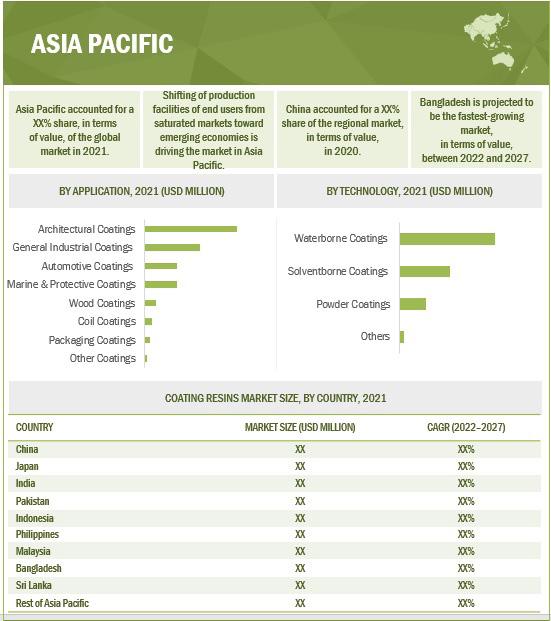
Asia Pacific is the fastest coating resins market in terms of value and volume during the forecast period. The region has witnessed significant economic growth over the last decade.
Arkema (France), BASF SE (Germany), Covestro AG (Germany), Allnex (Germany), and Dow (US) are some of the key players in the global coating resins market.
The global compressor oil market size is expected to rise at a healthy CAGR of 2 percent, according to a latest research report, for 2021 to 2027. High-performance lubrication is provided in a compressor by using a combination of paraffinic oil and additions. Usually, compressors with corrosion prevention, heat resistance and corrosion tolerance profit from it over the long run.
Various base oils, like synthetic, mineral, semi-synthetic, and biobased, are used in the production of this product. In addition, rotary compressor, screw, centrifugal, sliding vane, and rotary lobe compressors may all be lubricated by the completed product. This kind of compressor oil is used in a wide range of applications, from chemical manufacture to building hydraulics to oil & natural gas machinery to automobile engines to energy production.
The need for compressor oil will increase dramatically in commercial processes, particularly for the lubrication of heavy equipment, tools

and other equipment. The item has the ability to provide long-term anti-wear prevention, which aids in the reduction of compressor service and the extension of compressor life span. The need for needle compressors and rotating vane compressors is increasing in many businesses, which is rising continuously for compressor oil. Screws compressors and rotating vane compressors are becoming more popular.
While the market is expected to develop, the rising cost of artificial and bio-based compressors oil is expected to limit its expansion. A constraining factor in the market for this product is the emergence of oil-free compressors. The growing industries in the Middle East and Asia provide market companies with an excellent chance to roll over production capacity, which in turn raises consumer needs over the next 5 years.
 The global compressor oil market is segmented according to application including automobile engines, power generation, petrochemical production, oil & gas machinery, building hydraulics and mining equipment, and food & beverage machines. (Representative Image © Pixabay)
The global compressor oil market is segmented according to application including automobile engines, power generation, petrochemical production, oil & gas machinery, building hydraulics and mining equipment, and food & beverage machines. (Representative Image © Pixabay)
The coming of the new COVID-19 outbreak is predicted to substantially influence the development of the compressor oil industry in the years 2020 and 2021. The downturn in economic and trade activity is projected to be the primary source of demand constraint.
The decrease in building activity, particularly in commercial areas, combined with a prolonged decline in factory output, is projected to maintain compressor oil need at a low level for the foreseeable future. In spite of this, the sector is likely to return once trading operations resume and industry-specific government rules are established by the government for various businesses.
There is a clear relationship between the compressor oil industry and the usage of air compressors. Due to the increasing increase in industrial output, worldwide demand for lubricating compressor oil is predicted to increase as more and more businesses integrate the equipment into their manufacturing processes.
Furthermore, development in lubricant composition to extend the physical life of the compressor is also believed to be a contributing element to the compressor oil market growth for the respective product.
Compressor oil consumption is predicted to grow as a result of the introduction of novel production processes that lower production and operating costs while maintaining high-quality standards. Demand for novel compressor techniques, which are critical to enhancing productivity, is likely to continue to rise as a result of this growth.
Furthermore, since the oil-free compressor doesn’t need additional room for oil storage, it is more cost-effective than the greased compressor because it has a more straightforward functional requirement. As a result, the growing popularity of oil-free compressors is putting a damper on the expansion of the compressor oil industry.
Technological development and oil regeneration, on the other side, are projected to hinder the expansion of the compressor oil market. Furthermore, the industry for compressor oil is expected to be challenged by a rise in prices for oil-free compressors and the high costs involved with their manufacture.
In order to manufacture a wide range of petroleum and chemical product lines, such as detergents, lacquers, solvents, polyolefin, paints, dyes & adhesives, synthesized rubbers, fertilizers, textiles, various types and sizes of compressors are needed, as well as efficient production operation. Because of the great degree of warming variance that occurs in this industry, synthetic oils are the most often used.
Given their exceptional appropriateness for such endeavors and the rising need for chemicals as a result of increased consumer goods usage, it is projected that the total compressor oil market value will continue to develop at an impressive rate.
The global compressor oil market has been categorized on the basis of compressor types, applications, base oils and regions. The market has been segmented into five types of compressors that is screw compressors, reciprocating compressors, centrifugal compressors,
sliding vane compressors, and rotary lobe compressors. Reciprocal compressors are the most common kind of compressor.
The global compressor oil market has been segmented into four categories depending on the base oil used: synthetic oil, mineral oil, semi-synthetic oil and bio-based oil. In addition, the global compressor oil market is segmented according to application, which includes automobile engines, power generation, petrochemical production, oil & gas machinery, building hydraulics and mining equipment, and food & beverage machines, among other things.
The market is segmented based on compressor types, applications, base oils and regions. As a result, the global compressor oil market trends are expected to witness decent growth during the forecast period.
The application is segmented into automobile engines, power generation, petrochemical production, oil & gas machinery, building hydraulics and mining equipment, and food & beverage machine based on the application.
The market is segmented into synthetic oil, mineral oil, semi-synthetic oil and bio-based oil based on the propulsion types.
It has been determined that the global compressor oil market is segmented into five major regions: Asia-Pacific, North America, Europe, Latin America, and the Middle East and Africa. Since about 2017, Asia-Pacific has had the most significant share of this industry is anticipated to be the most dominating leading region throughout the projection period. In part, this is due to higher compressor oil consumption from automobiles, oil exploration and production (O&G), construction, mining, and chemical sectors.
In addition, the businesses in this area are growing their production facilities, necessitating the purchase of sufficient production equipment to match the end-user demand. As a result, the need for compressor oil is increasing. India and China are indeed the two most important emerging nations and their demand is predicted to grow significantly throughout the projected timeframe of 2018-2023.
Europe and North America are the primary locations for big manufacturers. The participants in the area are intensely focused on supplying sophisticated and high-quality lubricating oil for compressor purposes, which is a highly competitive market. The United States, France, Germany, and Italy are the leading nations in terms of both manufacturing and utilization of the commodity.
New releases, acquisitions, investments, acquisitions and mergers, partnerships, agreements, and R&D are some of the tactics used by the top players in the global compressor oil market to achieve substantial market positions. Other methods include product development and improvement.
Some of the key players are: Exxonmobil Corporation (US), Sinopec Ltd (China), Royal Dutch Shell Plc (Netherlands), BP Plc (UK), Total SA (France), Chevron Corporation (US), Croda International Plc (UK), Fuchs Petrolub AG (Germany), BASF SE (Germany), Sasol Ltd (South Africa), Lukoil (Russia) and Indian Oil Corporation Ltd (India), to name a few.
Market Research
The Europe hydrocarbon solvents market size to be valued at $1.93 billion by 2025 and is expected to grow at a compound annual growth rate (CAGR) of 5.1 percent during 2019 to 2025. Sustained consumption of petrochemical solvents in rapidly growing end-use industries such as paints & coatings, printing inks, metal cleaning and adhesives has primarily driven the market. This category of diluents also covers a large range of cleaning products including daily-use consumer products to several tailored industrial cleaners.
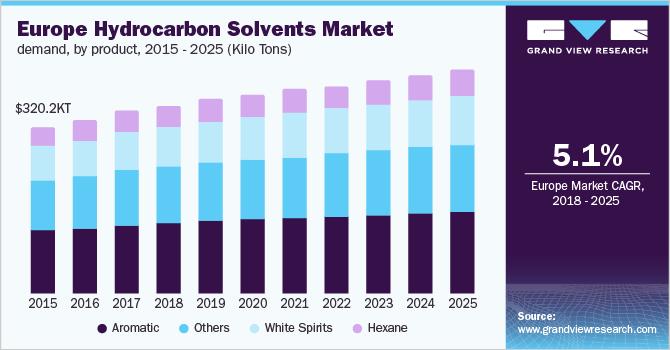
The stringent regulatory scenario and end-user industry preferences have driven the industry to develop and formulate multi-functional solutions. Strong demand from the building and construction industry in the region has been a major factor in the rebound in demand in terms of volume. Hence, the growth of the European paints & coatings industry is anticipated to drive the demand for hydrocarbon solvents.
The aromatic product category has witnessed varying applications in paints and coatings, printings, and several other end-use industries. Though oxygenated and bio-based solvents have been gaining importance in the present industry scenario, direct alternative to these diluents is not as compatible with them in terms of their characteristics and product desired output properties.
The products such as white spirits, hexane, and other aromatics are some of the most significant petrochemical derivatives. The Europe hydrocarbon solvents market has witnessed varying levels of value addition across different stages of the value chain. Raw material prices are one of the most crucial parameters largely determining the new production within the market.
The product portfolios of the key industry participants are also rapidly changing to adjust to the changing demand scenarios. The market is highly diverse and includes numerous individual compounds and chemicals. The chemical companies take a few basic raw chemicals and transform them into substances that are valuable to other end-use industries, such as pharmaceuticals and agrochemicals.
Automotive paint consumption is directly related to the development of new vehicles, particularly commercial vehicles, and two-wheelers.
The increased manufacturing of electric vehicles is increasing the use of automotive paints. This is expected to drive the demand for coatings and adhesives and fast-drying paints. As a result, the hydrocarbon solvents market is anticipated to expand during the forecast period.
In textile printing, hydrocarbon solvents are widely used as carriers. Printing inks are broadly used in the manufacturing sector, primarily for labelling, and printing on cartons. Increased trading activity and increased industrial production are both likely to drive the growth of packaging demand, thereby expanding the market for printing inks during the forecast period.

VOCs are hydrocarbon solvents, which are found in paints, inks, adhesives, and coatings. As a result, one of the major sources of pollution is VOC emissions from manufacturing processes. To limit VOC emissions from diverse sources, including items that comprise solvents, several governmental and regulatory bodies passed rules and regulations. This resulted in a negative impact on the global market for hydrocarbon solvents and are expected to limit growth during the forecast period.
In the past few years, the demand for oxidized and bio-based solvents has grown significantly. Although hydrocarbon solvents in Europe is diversified, the increased use of hydrocarbon solvents in the pharmaceutical and agrochemical industries is anticipated to fuel market expansion. Additionally, the advancements in products with negligible impact on the environment are expected to boost the market for hydrocarbon solvents in Europe.
White spirits are among the fastest-growing product type and the segment is estimated to expand at a CAGR of 2.2 percent in terms of volume from 2018 to 2025. These primarily consist of aliphatic compounds and in some amount contain aromatic compounds. The aromatics components typically include toluene and xylene. Such compounds find significant applications in industrial paints, adhesives, resins and detergents.
Aromatic hydrocarbon solvents are widely used for manufacturing several petrochemical-based formulations, as the product category possesses a very high degree of dissolution. It is the dominant product segment and accounted for around 35 percent of the market share in terms of volume. These diluents possess some exceptional chemical and physical properties compared to their aliphatic counterparts. However, when in contact with the atmosphere, the emissions from these compounds can be carcinogenic and fatal.
Paints and coatings are the largest application segment and held over 30 percent of the market share in terms of revenue in 2017. Paints make use of many organic thinners, such as aromatics, aliphatic, ketones alcohols and white spirits. These thinners are used as per the type of paint formulated, for instance, a solvent-borne paint would make use of more white spirits and high aromatic components than the water-based paints.
Paints and coatings are among one the most dynamic industries globally due to advancements in manufacturing technologies, evolving consumer preferences, and product formulations complying with various regulatory changes.
Printing ink is the second most significant application area for hydrocarbon solvents. In printing inks, diluters can account for approximately 40 percent of the total ink formulation. These are primarily used in printing inks to carry or dissolve particulate matters, such as pigments, resins and dyes.
Hydrocarbon solvents are used along with adhesives in applications ranging from vehicle tires to shoe soles. They are also widely used in industrial and household adhesives, as well as applications where high performance and durability are required, such as metal-to-metal bonding.

Germany holds the largest share of the market for hydrocarbon solvents in Europe. Germany is an attractive market for several industries and constitutes around 21 percent of European GDP. The nation’s welcoming attitude towards Foreign Direct Investment (FDI) and with business free from regulations of confining day-today business has made the German market open for investment in practically all the industry sectors.
Some of the growing end-use industries for petrochemicals include automotive adhesive, pharmaceuticals, and the paint industry. In addition, the country has rapidly developed in terms of the shift from commodities to specialty products.
France has also highlighted a broad prospect of growth for the chemicals industry ranging from specialty to fine chemicals. The industry in the country is strong in terms of consumer chemicals, such as cosmetics, detergents, and soaps. Thus, hydrocarbon solvent industry in the country is also growing at an optimal rate.
Some of the geographical advantages, such as the strategic location make it a brilliant trade destination with other European Union (EU) countries. This is further supported by excellent transportation infrastructure both domestically and internationally and cordial relationships with the Italy, Switzerland, and Germany.
The top players in the regional market have implemented sustainable solutions coupled with maintaining long-term profits and complying with manufacturing standards in the dynamic regulatory scenario. Some companies are now concentrating on sustainable approaches to manufacture chemical intermediates with very low Volatile Organic Content (VOC) to prevent serious environmental impact.
Mergers and acquisitions are some of the most significant strategic moves adopted by the companies to boost their market share. The European hydrocarbon solvent companies face stiff competition in terms of technological, raw material (crude oil) quality & supply, and new product innovations.
Some of the significant companies predominant in the region include multinational companies, such as Dow Dupont, Total SA, Royal Dutch Shell, Eastman Chemical Company, Chevron Corporation and Ashland.
Grand View Research

Global Adhesives and Sealants Market size is estimated to be $75.4 billion by 2027 and is forecasted to grow at a CAGR of 5.6 percent during 2022-2027. Major adhesives used in the industry are polyvinyl acetate, ethyl vinyl acetate, polyurethanes and others. Adhesives and sealants are chemical substances used to attach and seal objects.
Adhesive are materials that are used to hold two surfaces together firmly for a long time, while sealants are used to seal the two areas and fill the space between them to provide a protective coating. The growing demand for new consumer products coupled with technological advancement is driving in the global adhesive and sealants market.
The outbreak of COVID-19 has disrupted many supply chains around the world. This market is the same. In addition, the lack of consumers in the market has had a significant impact on businesses in the second half of 2020. However, certain adhesive products were proven a strong demand for their applications in paper and packaging, and in the healthcare industry. Many public projects of buildings, construction activities, irrigation projects, and industrial projects were suspended since the closure.
Also, COVID-19 has brought many challenges to the construction industry. Major economies around the world, such as North America, Europe, and Asia Pacific are among the regions most affected by the pandemic. Measures to disrupt the community, disruption of the supply chain, and removal of workers have led to the suspension of construction projects in many countries due to chain disruptions and a shortage of raw materials. The aforementioned developments during the COVID-19 pandemic have adversely affected the global adhesives and sealants market.
By Formulation: Water-Based, Solvent Based, Hot Melt, Pressure Sensitive Adhesives, UV Curing, and Others.
By Source: Synthetic and Natural.
By Component: One-Component Adhesives, Two-Component Adhesives, and Others.
By Substrate: Ceramic, Metals, Plastic, Wood, Glass, Paper, and Others.
By Product Type: Silicones, Phenolics, Polyamides, Polyvinyl Acetate, Polyurethanes, Acrylics, Epoxies, Polysulfide, Butyl, Polyisobutylene, and Others.
By End-use Industry: Building & Construction [Residential Construction (Independent Homes, Row Homes, Large Apartment Buildings, Others), Commercial Construction (Hospitals & Healthcare Infrastructure, Educational Institutes, Hotels & Restaurants, Banks and Financial Institutions, Airports, Shopping Malls, and Others), Industrial Construction, and Others], Automotive Industry (Passenger Vehicles, Light Commercial Vehicles, and Heavy Commercial Vehicles), Aerospace & Defence, Marine, Locomotives, Healthcare (Wearable Medical Devices, Diagnosis devices, Surgical Tools, Others), Textile & Apparel Industry (Clothing, Footwear, Others), Packaging Industry (Food Packaging, Beverage Packaging, Personal Care & Cosmetics Packaging, Medical Packaging, Homecare Packaging, and Other Packaging), Electrical & Electronics (Home Appliance Components, Telecommunication Components, Industrial
Electronics Components, and Others), Furniture & Woodworking, Power and Energy(Wind Energy, Oil & Gas, Solar, and Others), Leather Industry, Hygiene and personal Care, and Others.
By Geography: North America (USA, Canada, and Mexico), Europe (UK, Germany, France, Italy, Netherlands, Spain, Russia, Belgium, and Rest of Europe), Asia-Pacific (China, Japan, India, South Korea, Australia, and New Zealand, Indonesia, Taiwan, Malaysia, and Rest of APAC), South America (Brazil, Argentina, Colombia, Chile, and Rest of South America), Rest of the World (Middle East, and Africa).
• The global adhesives and sealants market is expected to grow at a moderate growth rate over the forecasted period. The major factor driving the market demand is the increased use of adhesives in various end-use industries including packaging, and building & construction.
• The effect of COVID-19 on the end-use industries has affected the adhesives and sealants market optimistically. Also, increased concerns for health coupled with the delicacy of handling the product has lagged the market in manufacturing plants.
• The global adhesives and sealants market is fragmented at the global level with small scale companies entering the market. The increased number of participants in the industry has positively affected the market value over a period of time. Major players have been competent enough with key strategies adopted to have a better market share at the global level.
Silicone held the largest share in the global adhesives and sealants market in 2021 and is expected to grow at a CAGR of 4.2 percent during the forecast period. Silicone is the most widely used for its multiple functions including glueing, and protective coating. Silicone is an important component in the majority of adhesives and sealants they offer benefits such as temperature resistance, oil & chemical resistance, flexibility, excellent binding properties, water resistance, and strength.
The widespread use of silicone is majorly by the construction industry and is expected to grow further in the forecast period due to global infrastructure development. In add-on, polyurethane has a significant share in the global adhesives and sealants market.
Both polyurethane and sealants are categorized under elastomeric materials and are used to fill gaps and keep water and air out. However, both sealants and adhesives have different longevity and chemical properties leading to fit in different applications. Polyurethane sealant is used in industries, such as the automotive industry due to its unique properties moisture resistance and rapid drying.
The building & construction segment held a share of around 35% in the global adhesives and sealants market in 2021 and is expected to grow at a CAGR of 4.1 percent during the forecast period. The building and construction sector has the largest share in the market. The segment is in the growth phase and continues to report significant gains in revenue owing to the high demand for building materials, thereby increasing the demand for sealants and furthering market growth over the years. Adhesives are found to be applicable to floors, walls, ceilings, glitter, and windows resulting in the continuous expansion of adhesive and sealants consumption in the building and construction industry.
Other major applications include the automotive industry and locomotives. According to The International Association of Public Transport, the global light rail transit was around 236.4 Kilometers in 2016 and has increased to 311 kilometers in 2018. The data depicts the increased urban infrastructure development across the globe leading higher volume of adhesives and sealants consumption. Also, Demand in the automotive and transportation sector is expected to grow exponentially leading to increased demand for adhesive and sealant products in the forecasted period.
Asia Pacific has dominated the market in terms of volume and revenue by 2021. In terms of revenue, the region held the largest share of more than 38% in the global adhesives and sealants market in 2021, owing to fast-growing end-use industries in recent years.
Currently, Asia Pacific is the largest market and is expected to capture the market better further in the forecasted time due to the growing demand for the building and construction, packaging and automotive industries. The market in this region is driven by factors, such as rising population and rising costs in the industrial sector. The increase in population increases the demand for cars, leading to higher demand for adhesive and sealant products in the automotive industry.
According to the International Organization of Motor Vehicle Manufacturers, in 2017, the total number of automotive vehicles produced in India is valued to be 47.81 million units and has increased to 51.21 million units in 2018. The increased production of automotives in the country is one of the major factors driving adhesives and sealants market growth in the region.
Furthermore, North America adhesive and sealants market is growing due to the high preference for paper packaging coupled with the change in consumer behavior in preferring recycled products have benefited North America adhesives and sealants market.
Increased demand for adhesives and sealants in the packaging industry is expected to drive market growth in the forecasted period. The increased use of packaging materials in various enduse industries including stationeries, Jewellery boxes, shopping bags, and cartons is the major driving force for adhesives and sealant products.
According to the food and agricultural organization (FAO), the shipment value of the packaging industry in Japan was around $49.85 billion in 2018 and has increased to $50.66 billion in 2019. Japan being one of the major countries exporting packaging has influenced the global adhesives and sealants market.
Also, according to FAO, the total production volume of paper and paperboards for the packaging industry of India has accounted for 15.43 million metric tons in 2015 and has drastically increased to 17.28 million metric tons in 2020.
The data implied expanding demand for paper and paperboards in the packaging industry leading to the need for adhesives and sealant products to glue and seal the packages. The aforementioned developments in the packaging industry are expected to drive the global adhesives and sealants market in the foreseen period.
The building & construction industry is one of the major consumers
of adhesives and sealant products. Building & construction spending includes construction projects in commercial real estate including both residential and commercial with infrastructure and industrial buildings.
Population growth and urbanization drive part of the construction of buildings & infrastructure in developing countries such as Vietnam, India, China, Indonesia, Brazil and Mexico. Moreover, there is also an increasing demand for housing in developing economies, which also contributes to the consumption of adhesives and sealants. The construction industry has grown at a considerate pace before the coronavirus pandemic and is expected to grow at a decent growth.
According to world bank data, the total construction industry spending worldwide has accounted for around $11.5 trillion in 2018 and has increased to $12.01 trillion in 2019 with a growth rate of 4.4 percent from 2018 to 2019. Hence increased spending in the building and construction industry will accelerate the market value for adhesives and sealant products in the forecasted period.
According to the National Library of Medicine, inhaling adhesives and sealants during production and final use can result in, confusion, inconsistent speech aggressive behaviour, hallucinations, vomiting, mood swings, darkness, and difficulty breathing. They can also cause the heart to beat faster and can lead to heart attacks. Additionally, according to the National Library of Medicine since 1993, about 0.17 percent of all unnatural deaths in the United States are considered to be associated with a variety of chemical odors including adhesive glue.
In add-on, the production of adhesive products emits large amounts of chemical gases, which are fatal when inhaled. Therefore, the regulations imposed on their use are very strict. In addition, growing employee awareness of health and the environment has become a major problem for producers. The above factors related to the health risks of adhesive products are expected to restrain the global adhesives and sealants market in the predicted period.
Technology launches, acquisitions, and R&D activities are key strategies adopted by players in the Global Adhesives and Sealants Market. The top 10 companies in the market are: Henkel AG, HB Fuller, Sika AG, Arkema SA, 3M Company, Huntsman Corporation, Illinois Tool Works Inc, Avery Dennison Corporation, GE Sealants and Adhesives, Wacker Chemie AG, to name a few.
• In November 2020, H.B. Fuller has launched its new product named Full-Care 5885 adhesive. The product offers a better bonding with a competitive price advantage in the industry.
• In February 2020, Henkel AG has inaugurated its new production facility in India. The company has invested USD 57 million, for the faculty intending to cater to demand from Indian infrastructure development companies and the packaging industry.
• In January 2020, GE Sealants & Adhesives has launched its product portfolio with nine products of Siliconized Acrylic Latex sealants. The products are designed for house rejuvenation and repair work of infrastructure projects.


The global pharmaceutical sector has witnessed tremendous growth recently. The industry’s immediate response to the pandemic has shown the world the capabilities of medical science and research. In these last two years, India too has emerged as one of the leading providers of drugs and medicines to countries across the globe.
Over the last two years, India has supplied 23.9 crore COVID-19 vaccine doses to 101 countries to combat COVID-19 pandemic and has justified its position as the ‘Pharmacy of the World’. The Indian Pharmaceuticals Industry has paved their way towards a bright future.
Not just India, if we look at the graph of the world, pharma industry is scaling high. Be it India or any other country in the world, things have changed for good. More experiments, research and clinical trials have made this industry prepared for the future.
The pharma industry has inked many milestones and earned a worldwide reputation for producing high-quality, low-cost generic drugs within these two catastrophic years. India travelled a long way and overcame several bottlenecks over the years. With each passing day, India gained a strong hold in the world market in the domains of generic drugs, OTC Medicines and API/Bulk Drugs, vaccines, research & manufacturing and last but not the least Biosimilars & Biologics.
In the recent Union budget of 2022, the industry was recognized as “sunrise sector” for the Indian’s economy as it is expected to grow furthermore over the next decade. The urgent need to understand the Covid-19 virus drove the pharma industry to create quick solution in the form of reliable vaccines and medicines.
The pharmaceutical industry not only provided a continuous supply of medicine, but contributed to significant preventive healthcare, quarantine facilities and sanitization. The future models for pharma companies may or may not be crystal clear but it is true that the market efficiency, ability to serve more patients are much better.
Speaking about the world, new technologies, drugs, models and their implementation are done to bring the best to overcome the effects of the pandemic. In our journey to become the global leader, we need to cross every hurdle that fall in our path which will lead us to be one step ahead with the competitors.
Hence, Worldofchemicals.com and Chemical Today magazine organized a virtual conference – Pharma Connext: Formulating for Future on 12th August, 2022 to mitigate the issues that the industry faces and delve into the opportunities for the Indian pharmaceuticals industry.
This virtual conference opened a lot of platforms and connected with different minds all over the globe to help pharma company to align its organizational goals with the global competition.

The virtual conference focused on Pharma Research and Innovation in APIs & Formulations, and had eminent speakers including Dr. Vivek Jha, Head - Strategy and Operations, Global Drug Development, India from Novartis; Dr. Rima Jaber, Global Product Manager, Lipids, Business Line Health Care from Evonik; Dr. Arani Chatterjee, Joint president, Cadila Pharmaceuticals Ltd and Dr. Tausif Ahmed, Vice President & Head - Biopharmaceutics & Bioequivalence, Global Clinical Management Group, Dr. Reddy’s Laboratories Ltd.
Moving from a time of transition to a bright future will depend on how the Indian pharma industry can tap into the short and longerterm opportunities. It is quite clear that the time is right for all stakeholders, from government, academic and industry to invest in the pharma industry.
Risk is inevitable and to dodge that risk, India’s Pharma companies should improve their process, focus on discoveries and clinical trial to regulatory approval making the process faster and cheaper than what is currently possible. Embracing the opportunities and risks will only make the future bright and more professional.
Speaking about the global aspect, healthcare is projected to be the largest R&D spending sector in the few years, and it will continue to do so. It is an inevitable fact that there has been a surge in healthcare spending for the past ten years due to the burden of trending untreatable disorders and chronic diseases.
Economic and demographic changes and increasing patient expectations have led to the launch of innovative digital technologies that have been the primary motive. With robotic process automation (RPA) and artificial intelligence (AI), the growing numbers of inpatient health services is now effectively delivered. The algorithm globally has changed the pattern of disease diagnosis, thus promoting smart hospitals and telemedicine.
Covid-19 pandemic all over the world has created an inflection point at which companies have the license to reconsider where they are investing time and resources. Reorganizing field work and catalysing a new engaging model every now-and-then can be helpful. From this virtual conference, it can be stated that investing in theories, internal collaboration tools and forecasting a situation may deliver massive benefits.
If Faith is the lock, then Hope is our Key! Pharmaceutical Industry will be progressing, protecting and upgrading itself for a better and brighter future.
The market forecast expects to get around $1.5 trillion by 2026 by the entire pharma market.
There are four business elements in Biopharma or any other field:

- Focus: Researchers should be clear about the section they need to focus on. The world needs to believe that ‘there is hope’! Researchers should shift their focus on sub-sectors too. Predicting won’t help, but working together as a team, investing money, and performing with the right intention will help overcome any difficulty and lead us to the right course.
- Technology Upgrade: Acceptance is the key! From taking appointments of the doctors to medical treatment, things have changed drastically. Now, multiple platforms are available to opt from. There are more choices today and these choices are making all the differences. The customers made it possible; they took the first step and opened up to digitization. Making digital transformation will continue. Almost 88 percent of the population have smart phones, and this has led to the upgradation of healthcare units with the help of Artificial Intelligence.
- Therapies: Solutions beyond small or large molecules are created every single day. People are looking beyond antibiotics.
- Prices: Change in perception along with the pricing is important. Stakeholders need to change their strategy and the pricing giving the credit that science deserves. In 2013 the Department of Pharmaceuticals (DoP) fixed the price of the scheduled medicines as per provisions of the Drugs (Prices Control) Order. But things have changed due to the pandemic, the price and demand of certain drugs have changed.
Even the central government reviewed a proposal from the pharmaceutical industry regarding trade margin rationalization on non-scheduled drugs. If we look on the other side, there are persistent gap in access to affordable medicines. We need to bring supply and demand along with the pricing under one scale to make it affordable, accessible, and suppliable.

Note: Worldofchemicals and Chemical Today Magazine organized the Pharma Connext 2022: Formulating The Future virtual conference on 12th August. The conference gave a national & international pharma perspective, research & innovation ideas in APIs & formulations and pharma industry potential in India.
After decades of research and accumulation of theoretical knowledge, the Covid-19 has brought mRNA to the forefront as a new modality and finally reached the tipping point in demonstrating its utility in infectious diseases.
Lipid based particles technology is a proven science and 20 drug products are already in the market, out of which 75 percent contain products which contain Lipid Nanoparticles and they can be considered safe.
- mRNA technology revolutionizing the pharma Industry: Gene-modifying therapies include chemical and cell-based guide RNA (gRNA), as well as cell-based plasmids can either alter or correct the native target gene, or introduce a missing gene, thereby cutting off the root of the disease. The messenger RNA (mRNA) technology encode route for protein synthesis into the patient’s cells.
- Typical composition of a lipid nanoparticles (LNP): The core of LNPs contains mRNA, an ionizable, cationic lipid, a neutral lipid and water. This process stored should be in (ultra) low temperature. However, drying techniques, such as lyophilization are promising options still to be explored.
Role of ionizable cationic lipids in LNPs: Ionizable Cationic Lipids are known to be critically important in LNP structure and stability. However, their distribution inside the LNPs and its exact role in cytoplasmic delivery remain unclear.
- Case study of vegetable-derived synthetic cholesterol vs animalderived cholesterol: Based on the case study it is proven that there was no difference observed in the physical characterization between these two. Hence, it can be concluded that LNPs prepared with animal-derived cholesterol and PhyroChol showed similar in-process characteristics, final products characterizations.
However, studies show that ultra-low endotoxin cholesterol provides a first-rate alternative to traditional animal- based cholesterol. PhytoChol® is Evonik’s high-purity, vegetal- derived cholesterol suitable for parenteral applications.
Evonik contributed to the value chain of mRNA-LNP therapeutics by providing health care and service to the pharma industry. Manufacturing high quality lipids, helps to develop and produce drug products. Evonik Vancover labs have been operating for 30 years with a focus on formulation development. The lab has worked with 90 percent of the companies who are active in nuclear acid field currently.
Note: Worldofchemicals and Chemical Today Magazine organized the Pharma Connext 2022: Formulating The Future virtual conference on 12th August. The conference gave a national & international pharma perspective, research & innovation ideas in APIs & formulations and pharma industry potential in India.
Over 12 billion doses of vaccine have been administered so far worldwide. In India, 44 million confirmed cases of Covid-19 with 526,879 deaths were reported by WHO. As of 8th August, a total of 2,070,198,438 vaccines doses have been administered.
Focusing on the Virtual clinal trials, platform trials have not been conducted or implemented, but it is expected to open that arena. Due to social distancing almost all biopharma and CRO companies have stated disruption to ongoing and planning clinical trials. Keeping this in mind, new sites and patient recruitment is generally on hold, except for key focus areas.
Existing trials and on-going process with modifications where necessary to ensure continuity especially in India. Challenges were faced by the vaccine companies, but in most cases, those regulations acted as a shield. The regulatory drug authority was very proactive during the pandemic time with new regulations to facilitate the process and supply pan-India. Even before the pandemic, the DCGI took the right step and rapid responses.
The Rapid Response Regulatory Framework for Covid-19 vaccine development on 26th May, 2020 stated applicant may submit parallel application for conducting appropriate phase of clinical trial to CDSCO for consideration PCT studies based on proof of concept, data on clinical studies generated outside India statement was regulated for all the manufacturers.

The trails which were made during the pandemic was commendable where the overall development of vaccines was completed in just a matter of months (10 months to 1.5 years total). Based on pre-existing data from SARS-Cov and MERS-Cov and later in two phases, three vaccines - Sputnik, Covaxin and Covishield underwent clinical trials. These three vaccines are marked safe.
Today, 65 percent of kids across the globe receive one or the other vaccine manufactured by India. More than 170 countries across the globe took vaccines saving millions of lives. Over 2 billion doses have been administered to people making India a vaccine manufacturing destination of the world.
Summary or key points to be noted:
- A worldwide priority to increase the speed and accuracy of the drug discovered.
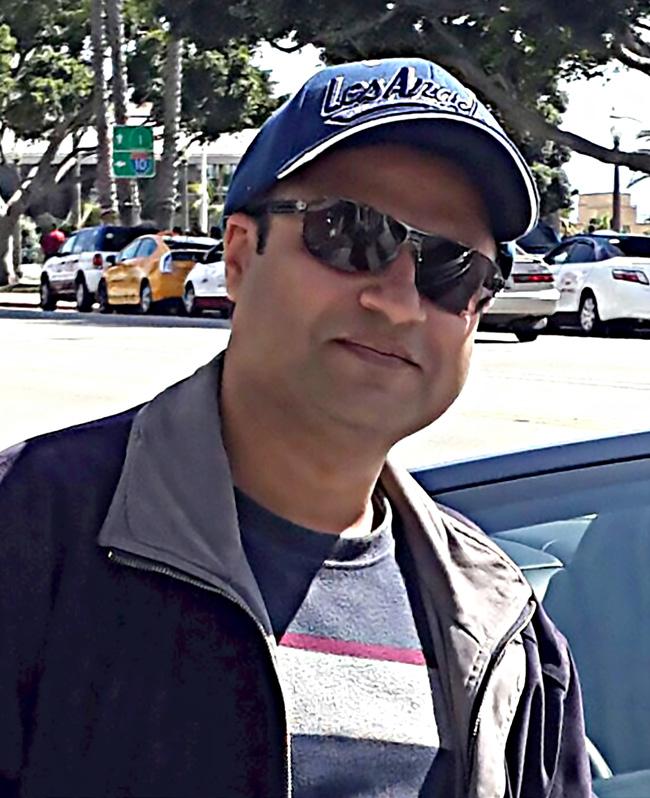
- Regulatory collaboration has created new guidelines to advance clinical trials for treatment.
- Process acceleration through shared information and technologies decrease the constraints during trails.
Note: Worldofchemicals and Chemical Today Magazine organized the Pharma Connext 2022: Formulating The Future virtual conference on 12th August. The conference gave a national & international pharma perspective, research & innovation ideas in APIs & formulations and pharma industry potential in India.
Digitalization and Innovation are the key in the clinical research where Modelling and Simulation (M&S) is the upcoming topic in generic clinical research. Modelling and Simulation consists of the numerical integration of differential equations that coordinates a set of well-characterized physical phenomena that occur and interact as a result of drug transport, dissolution/precipitation, luminal degradation and ADME.
GastroPlus, Pheonix, SimCry are advanced software used to simulate gastrointestinal, ocular, and nasal & pulmonary absorption pharmacokinetics and optionally, pharmacodynamic effects for drugs dosed in humans and animals.
M&S is used to predict many crucial drug development decisions. It has become more accessible and widely utilized in the last 15 years as we gain a better understanding of human biology, the role of DNA in the key biochemical systems and processes, and disease progression, along with increased availability of large amounts of clinical data.
The availability of greater computing power has enabled the efficient solving of key mathematical equations underlying the models to make M&S much more usable and costeffective.
M&S can deliver significant business, scientific, and clinical value to biopharma companies which can be fully integrated in their drug development and regulatory strategy to reduce costs, accelerate time to filing, and improve the likelihood of regulatory approval. Using models is demonstrably more efficient and less costly and time-consuming than traditional clinical and regulatory studies.
The use of M&S is becoming more pervasive throughout the development process; for example, 90 percent of the 2015 new drugs and biologics approved by the FDA leveraged M&S for dose selection, safety determinations, trial design, bridging studies, and other drug label information. The use of these tools will only continue to increase over time as the value proposition becomes clearer and biopharma leaders more fully appreciate its strategic value. Technological advancement may take a further step to infuse ‘Chips in Human.’
Note: Worldofchemicals and Chemical Today Magazine organized the Pharma Connext 2022: Formulating The Future virtual conference on 12th August. The conference gave a national & international pharma perspective, research & innovation ideas in APIs & formulations and pharma industry potential in India.
Dr. Arani Chatterjee, Joint President, Cadila Pharmaceuticals Ltd.
Dr. Tausif Ahmed, Vice President & Head-Biopharmaceutics & Bioequivalence Global Clinical Management Group, Dr. Reddy’s Laboratories Ltd.

Antibiotics, Antiseptics. Pain Killers. Disinfectants
All these pharmaceutical products are manufactured in a pool of solvents in which all the chemical reactions take place. Solvents also determine the drug purity and hence form a key ingredient to ascertain health and wellness of the medicines.
Manufacturing of almost any and every pharmaceutical product, be it in the form of tablets, syrups, ointment or liquid, will not be possible without the use of solvents as they help dissolve drugs safely and effectively into various medicinal formulations.
According to Coherent Market Insight report, the global pharmaceutical solvent market is projected to surpass $4.3 billion by the end of 2027 growing at CAGR of 4.4 percent between 2020 and 2027.
Various factors such as growing aging population around the globe, rising use of pharmaceutical solvent in the medicine encapsulation and packaging, introduction of liquid additives for pharmaceutical solvents and medical devices will accelerate the market growth.
However, rise in the use of solvents has also led to a major issue – ie, the rise in the use of low-quality solvents which is affecting the overall quality of drug manufacturing. Purity of solvents
is an extremely important parameter to determine the quality of the drugs, be it active pharmaceutical ingredients (API) or generic drugs.
Moreover, factors such as high cost, absence of proper government regulations and rise in unethical practices have led to the rampant use of low purity solvents in the market which can lead to a dangerous drug manufacturing disaster.
Herewith, aiming to spread awareness, understand and know compliance requirements in drug manufacturing, Worldofchemicals.com and Chemical Today magazine along with presenting partner Deepak
Fertilisers and Petrochemicals Corporation Ltd (DFPCL) are organising a virtual conference - Solvents Pharmacopeia, on September 29th.
The event focuses on Raising Awareness on Ingredients and Compliance requirements for the pharma industry. Global leaders and experienced industry professionals will share their expertise and technological knowhow to boost the use of high purity solvents and discuss how to resolve the issues that cloud the growth of the pharma industry.


When it comes to designing ultrabright solid-state fluorescent materials, bridged crystal designs might be the key to enabling monomeric emission and accessing novel crystalline systems, reveals a new study.
In the study, a research team from Tokyo Institute of Technology prepared ultrabright fluorescent dyes using di-bridged distyrylbenzenes (DSBs) with flexible alkylene bridges, using a novel crystal engineering study. The findings are sure to have important implications for the field of photofunctional materials.
Fluorescent solid organic dyes have an array of applications ranging from functional nanomaterials and organic light-emitting diode (OLED) displays to lasers and bio-imaging. These molecules have excellent versatility, adaptable molecular designs, and excellent processability. Improving the luminescent properties, crystallinities, and emission colors of these solid-state fluorescent dyes is a key area of research in the field, especially for the design of advanced OLEDs. However, developments to this end are limited by three major factors.
One, most fluorescent dyes experience concentration quenching (a reduction in fluorescence when the concentration of the fluorescing molecule exceeds a certain level) in the solid state.
Two, the tendency of dye molecules to aggregate in the solid state and produce fluorescence of different colors due to the resulting intermolecular electronic interactions. And three, crystal design strategies that can ensure monomeric emission (essentially, emissions of a single wavelength, ie, color) are underdeveloped.
To address this, a research team, led by associate professor Genichi Konishi of Tokyo Institute of Technology, developed a novel crystal design strategy using flexible molecular bridges. The study, published in Chemistry - A European Journal, describes the preparation highly fluorescent monomeric emissive dibridged distyrylbenzenes (DSBs) with controlled electronic properties and luminescence.
“A typical approach to crystal design for fluorescent solid dyes is the steric-hindrance-based strategy, where we manipulate the bulk of a molecule to cause congestion around the reactive atoms and suppress intermolecular interactions. But a frequent disadvantage of this approach is an increased distance between the chromophores (fluorescent molecules). Our design strategy successfully avoids this side effect,” explained Konishi.
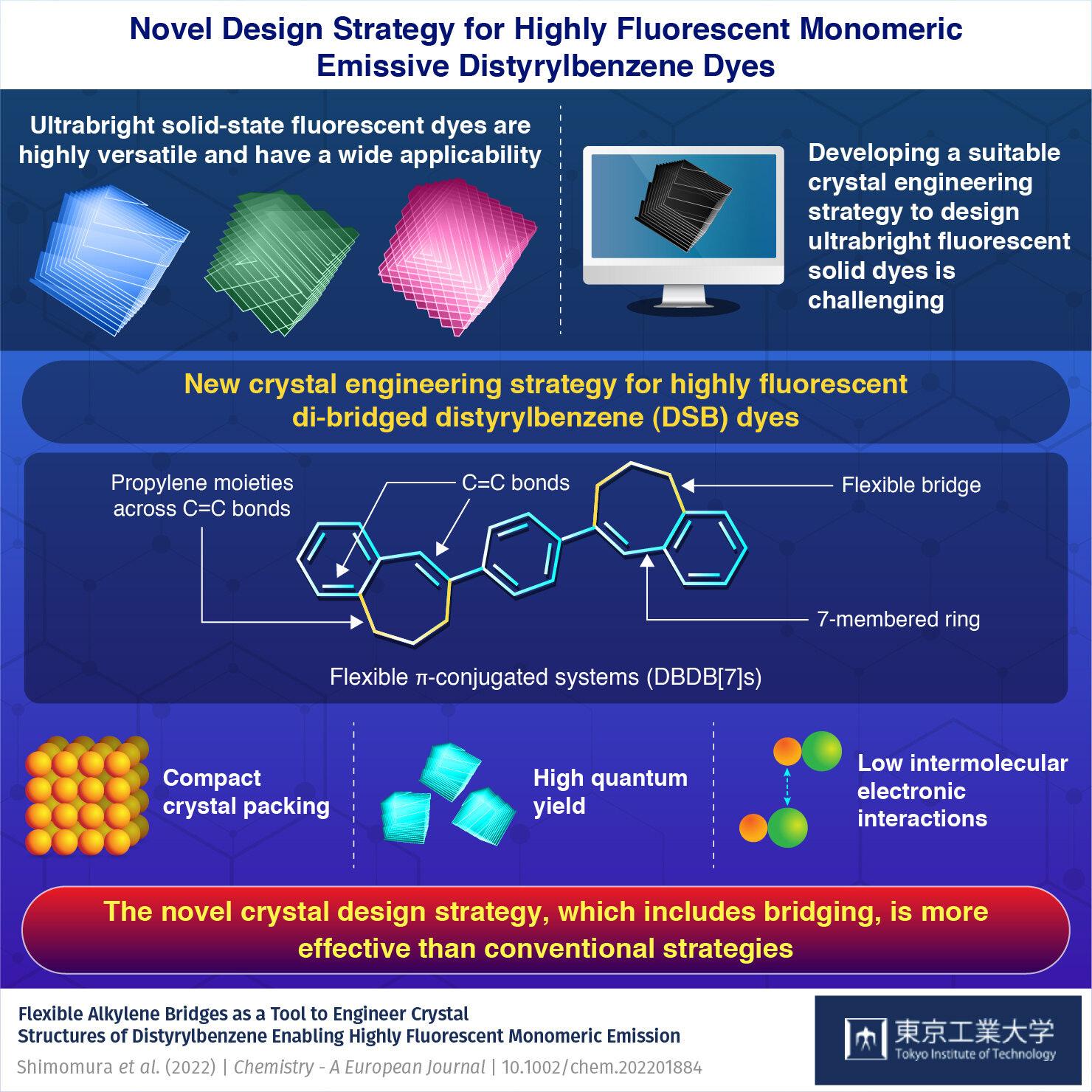
In this study, the research team prepared a highly dense crystalline structure called DBDB[7]s. DSBs and DBDB[7] s are π-conjugated systems, meaning these organic molecules
have alternating single bonds (C-C) and double bonds (C=C) in their structures. The team introduced an organic functional group called propylene as bridge molecules in between the six-membered rings on either side of the double bonds in the DSB structure. This addition gave rise to a new compact crystal structure with suppressed intermolecular interactions and lower distances between the chromophores. “Essentially, the introduction of seven-membered (after bridging) rings to the DSB core created a moderate distortion and steric hindrance in the π-plane of DSB, which allowed us to control the molecular arrangement without increasing the crystal density,” said Konishi.
The team further investigated the photophysical properties of DBDB[7]s and discovered that small size of the bridge molecules used in this study aided monomeric emission in the solid-state. They also saw that DBDB[7]s was ultrabright with high quantum yield and emitted similar colors in both unaggregated dilute solution and in solid-state.
“The bridged DSB crystal structure described in our study allows access to novel crystalline systems,” concluded Konishi. “Our strategy has far-reaching implications for how we approach the design of photofunctional molecular crystals.”

The chemists Philipp Dabringhaus, Julie Willrett and prof. Dr. Ingo Krossing from the Institute for Inorganic and Analytical Chemistry at the University of Freiburg has succeeded in synthesizing the low-valent cationic aluminum complex [Al(AlCp*) 3 ] + by a metathesis reaction. The team presented their research work in the journal Nature Chemistry.
“In chemistry, cationic low-valent aluminum compounds are highly sought after because of their potential transition-metal-like ambiphilic reactivity. However, numerous attempts to date to synthesize cationic, lowvalent aluminum compounds using oxidative or reductive processes have remained largely unsuccessful,” explained Krossing.
So far there is only one example of a cationic, low-valent aluminum compound, which cannot be prepared by a rational synthesis. “We are now showing that there is an unexpectedly easy access to low-valent aluminum complexes with metathesis,” said Krossing. In metathesis, partial structures are simply exchanged between the reaction partners.
The Freiburg chemists produced the salt [Al(AlCp*) 3 ] + [Al(OC{CF 3 ) 3 } 4 ] – from the Schnöckel
tetramer (AlCp*) 4 , in which aluminum was already in the + oxidation state 1 is present. The (AlCp*) 4 reacted with Li[Al{OC(CF 3 ) 3 } 4 ] and the reaction mixture immediately turned from yellow to red. Upon crystallization of the reaction mixture, the scientists obtained the [Al(AlCp*) 3 ] + [Al(OC{CF 3 ) 3 } 4 ] --Salt as dark purple crystals. “X-ray, UV spectrometric and computational studies indicate the existence of the dimeric structure both in the solid state and in solution at high concentration and low temperature, but at low concentration and room temperature the monomer forms. This clearly indicates an ambiphilic reactivity of the cation,” said Dabringhaus. “Consequently, this salt can potentially be used as a building block for a [:Al(L) 3 ] + salt, which due to its cationic character might be able to perform reversible oxidative additions and reductive eliminations of small molecules,” explained Krossing. “This brings us one step closer to our long-term goal of achieving catalysis - which is currently being done with expensive and rare transition metals - with aluminum in the long term. Aluminum is the second most common element in the earth’s crust and is in principle capable of doing so, as our work shows. Unfortunately, it will probably be at least 20 years before our research is applied to this.”
Rare earth metals, when linked, can act as a conduit for energy flow, and show promise for the development of novel materials.
Scientists have connected two soft crystals and observed energy transfer between them—a finding that could lead to the development of sophisticated, responsive materials. The study, by scientists at Hokkaido University in Japan, was published in the journal Nature Communications.
Soft crystals are flexible molecular solids with highly ordered structures. When they are subjected to external stimuli, such as vapour or rubbing, their molecular structures get reordered and they respond by changing shape, colour or luminescence.
“We wanted to know what would happen if we merged soft crystals at the molecular level to connect them,” said Yasuchika Hasegawa, a materials chemist at Hokkaido University and lead author of the study. Hasegawa and his team used rare earth metals called lanthanides, whose ions have similarly large radii and therefore form similar structures. Lanthanide compounds, of which there are 15, are interesting because they can luminesce.
The team studied the structures of crystals made from the lanthanides terbium (Tb), which luminesces green, and dysprosium (Dy), which luminesces yellow. The team first linked the crystals of each lanthanide separately and observed the structures and energy transfer within the compounds. They then used this information to merge Tb(III) and Dy(III) crystals together through a pyridine bond and examined the molecular structure of an energy transfer within the merged ‘molecular train’.
When they excited the dysprosium end of the train using blue light, they observed green luminescence at the opposite terbium end. Their calculations revealed energy was transferred from one crystal to the other over a distance of 150 micrometres. “This energy migration distance is the longest reported for lanthanide coordination polymers or complex systems,” said Hasegawa. The terbium end continued to luminescence for 0.60 milliseconds.
Connecting soft crystals could lead to the formation of novel crystal structures that could have applications in semiconductors, lasers, optical fibres and printing.

team led by professor Seo Dae-ha of the Department of Physics and Chemistry at DGIST (president Kuk Yang) developed an optical microscopy that can control and observe electron transfer and transfer in complex chemical reactions occurring in nano-catalysts. This technology is expected to provide an experiment strategy based on system chemistry, a new experiment strategy for precisely studying photocatalysts at the single particle level.
Plasmonic metals at the nanometer level, such as gold, exhibit high light absorption rate in a wide place within the range of visible light. They are combined with semiconductor photocatalysts to act as a medium to increase light absorption. Excitation occurs in which electrons gain energy and move as a reaction to light absorption, and it appears through various paths depending on the size of the metal and the wavelength of the light.
There are various hypotheses on the effect of this electron movement as a catalyst. The research team was able to test the hypotheses and reveal how electrons transfer by developing a new microscope that is experimentally simpler and more sophisticated than the conventional method of observing chemical reactions.
Professor Seo Dae-ha’s research team developed hybrid nanoparticles (for example, ‘gold/copper oxides’, a combination of gold and copper oxides), and lasers of different wavelengths (colors) (ie, lasers A, B, and C are A+B, A+C ... A+B+C) were combined into a new form, respectively, to investigate the reaction between them to test various hypotheses on the electron excitation phenomenon through experiments and verify them one by one.

Through this process, the team was able to selectively induce electron excitation in gold nanoparticles, and quantitatively analyze their contributions by evaluating the increase in the reactivity of the catalyst. In addition, the team confirmed that these excited electrons were transferred to the semiconductor to increase stability and reactivity at the same time.
“The observational technology reported here is a technology that observes chemical reactions with high precision, efficiency, and low cost,” said Dae-ha, while adding, “It is expected that it will contribute to the sophisticated design of catalysts and will be applied as a sophisticated evaluation and control technology using nanoparticles for pharmaceuticals.”
Electrical energy from wind or sun can be stored as chemical energy in hydrogen, an excellent fuel and energy carrier. The prerequisite for this, however, is efficient electrolysis of water with inexpensive catalysts. For the oxygen evolution reaction at the anode, nanostructured nickel silicide now promises a significant increase in efficiency. This was demonstrated by a group from the HZB, Technical University of Berlin and the Freie Universität Berlin as part of the CatLab research platform with measurements among others at BESSY II.
Electrolysis might be a familiar concept from chemistry lessons in school: Two electrodes are immersed in water and put under voltage. This voltage causes water molecules to break down into their components, and gas bubbles rise at the electrodes: Oxygen gas forms at the anode, while hydrogen bubbles form at the cathode. Electrolysis could produce hydrogen in a CO2-neutral way - as long as the required electricity is generated by fossil free energy forms such as sun or wind.
The only problem is that these reactions are not very efficient and extremely slow. To speed up the reactions, catalysts are used, based on precious and rare metals such as platinum, ruthenium or iridium. For large-scale use, however, such catalysts must consist of widely available and very cheap elements.

To accelerate the oxygen evolution reaction at the anode, nickelbased materials are considered as good candidates. Nickel is resistant to corrosion, hardly toxic and also inexpensive. Until now, however, energy-intensive high-temperature processes have been mostly used to produce nickel-based catalyst materials.
A team led by Dr. Prashanth Menezes (HZB/TU Berlin) has now
found a “soft chemical” way to produce an efficient catalyst based on nickel-silicon intermetallic nanocrystals.
“We combined the element nickel with silicon, the second most abundant element in the Earth’s crust, and achieved nanostructuring via a chemical reaction. The resulting material has excellent catalytic properties,” said Menezes. The crystalline Ni2Si served as a precatalyst for the alkaline oxygen evolution reaction at the anode and undergoes surface transformation to form nicke(oxy)hydroxide as an active catalyst under operating condition.
Remarkably, the water electrolysis was further paired with value added organic oxidation reaction in which electrosynthesis of industrially valuable nitrile compounds were produced from primary amines with selective and full conversion under mild conditions. Such electrosynthetic methods can boost up the hydrogen generation at the cathode and can simultaneously provide access to valuable industrial products at the anode.
Compared to modern catalysts based on Nickel, Cobalt, Iron, Ruthenium and Iridium, the nanoporous Ni2Si is significantly more active and remains stable for longer reaction time at industrial-level conditions.
To understand the behaviour of Ni2Si in more detail, the team combined different measurement methods, including elemental analyses, electron microscopy and modern spectroscopic measurements at BESSY II. “In the future, even industrial alkaline water electrolysers could be equipped with a coating of this nanoporous nickel silicide,” said Menezes.
North Carolina State University researchers have demonstrated that a synthetic polymer can remove certain dyes from water, and that the polymer can be recovered and reused. The findings offer a new potential method for cleaning wastewater after use by textiles, cosmetics or other industries.

“Dyes are used everywhere, including in the textile industry, as well as in pharmaceuticals, cosmetics, paper, leather and even in medicines,” said Januka Budhathoki-Uprety, lead author of a paper on the work and an assistant professor of textile engineering, chemistry and science at NC State. “If these contaminants aren’t properly removed from wastewater after dyeing and finishing, they can be a significant source of environmental pollution and pose risks for human health.”
In the study, published in ACS Applied Polymer Materials, researchers made a synthetic polymer called polycarbodiimide. The researchers then tested the material’s ability to clean wastewater first by dissolving it in a solvent, and then mixing it with water contaminated with dyes.
They tested the polymer solution against a series of 20 anionic dyes, also called acid dyes, which are used in the textile industry. For initial assessments, the researchers did a visual test with the naked eye to see if the polymer worked. The researchers later quantified how well the polymer removed the colorant using UVVis spectroscopy.
“We mixed the polymer solution and dye-contaminated water so the polymer in the solution can grab on to the dye. This is a two-
phase solution, just like oil and water. The polymer part of the solution grabs onto the dyes,” Budhathoki-Uprety said. “Then we were able to easily separate the clean water from the contaminated solution mixture by draining it out, similar to separation of water from a mixture of oil and water.”
The polymer solution removed all but four of the 20 acid dyes they tested. In addition, they found it was easy to recover the polymer within minutes. They found characteristics of the dyes – related to their molecular structures – that contributed to whether the polymer worked or not.
“We found that the polymer solution can remove dyes from contaminated water, and we can recover the polymer and use it to remove dye from contaminated water again,” Budhathoki-Uprety said.
In future studies, researchers are planning to develop a library of polymers that would have the potential to work with more types of dyes. In addition, they want to develop a more practical mechanism for using polycarbodiimide to clean wastewater.
“We are working to develop materials that can do the same work without having to use the polymer in the solution phase,” Budhathoki-Uprety said. “If you have dye spill, you don’t want to have to use a flammable solution – you want a solid material that is easier to handle.”
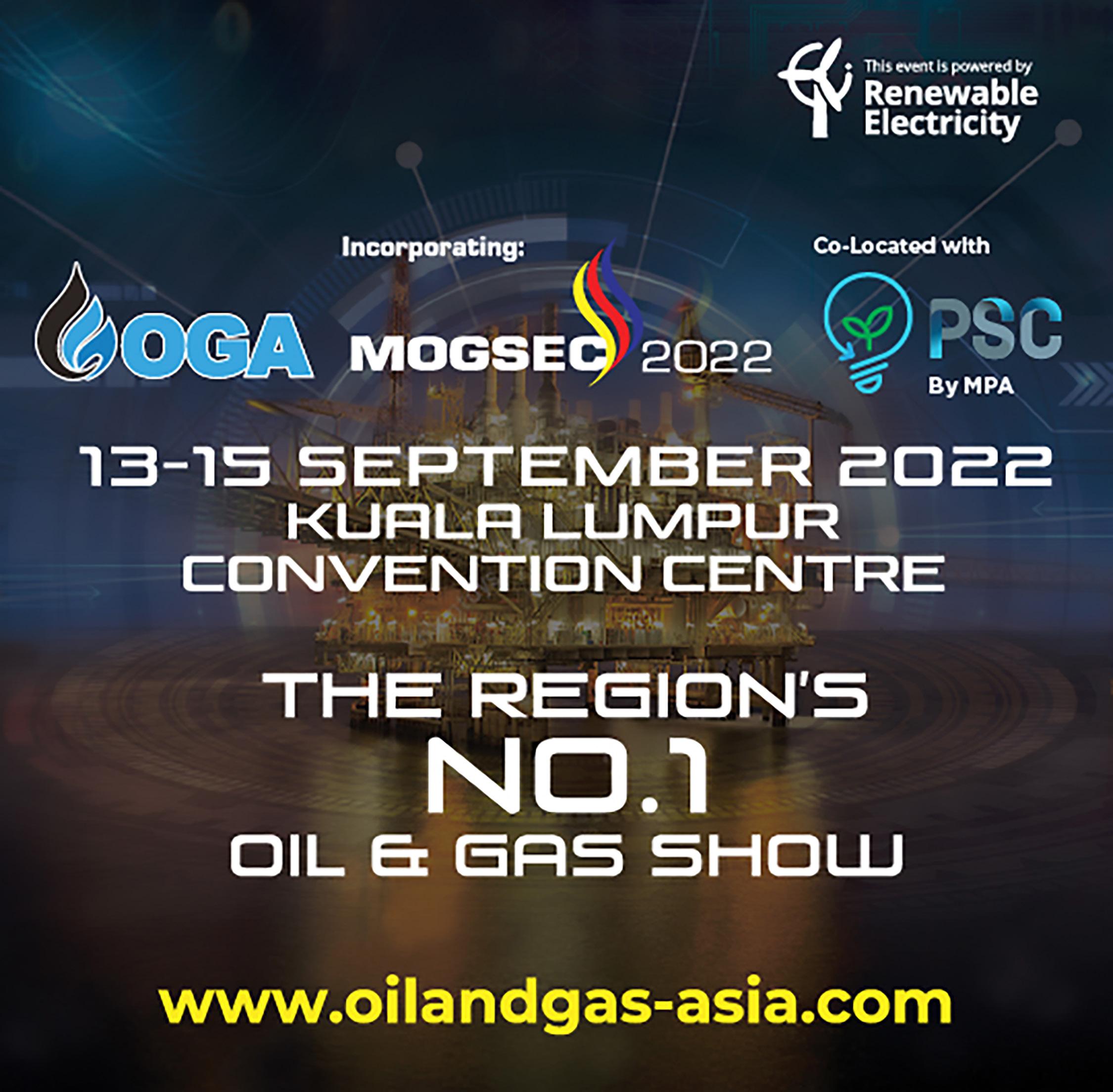

The concept of the internet of things (IoT) has been around for decades. Innovators have been waiting for technology to evolve far enough to put it into practice since its inception.
Objects can be controlled remotely over a network. This also opens up the possibility of direct physical world integration with computer-based systems. This leads to increased efficiency, accuracy, and economic profit, as well as a reduction in human interference.
Once the sensors and machines are installed, IoT becomes one of many different types of cyber-physical systems. Smart grids, virtual power plants, energy-efficient homes, smart transportation and smart cities are all included.

The term IoT in Construction has been recently developed so as the application. This simply speaks of the use of technological equipment or Internet of Things and modern-day internet software in the process of construction to be able to maximize the efficacy of the project. However, as the technology is new and not adapted by majority in the industry, project managers and contractors are still unwilling to use it.
The construction industry is currently undergoing critical adjustments that will improve efficiency, well-being, process improvement, and the introduction of new tools. In civil engineering, the Internet of Things (IoT) considers the incorporation of simple low-control sensors that can successfully transmit data at a cheap cost.
As IoT solutions for the construction sector become more omnipresent, they are having a huge impact on how the construction industry pivots. IoT enables each partner to understand what is happening at each stage of the real-time development process, from planning to positive development, post-development, and how the structure functions during administration.
Low profitability, reduced margins, increased schedule overruns, and increased challenge are just a few of the compelling reasons why construction companies should consider embracing IoT technology and digitization. Data & Information have evolved into a vital company asset, and hence only data-driven decisions should be taken into consideration.
Here’s how the Internet of Things (IoT) works and what it can do for the construction industry now and in the future.
Security and safety are two of the most challenging issues to deal with on a construction site. Any material or item theft can be readily rectified with IoT-enabled tags because these sensors will notify the current location of the materials or object. It is no longer essential to dispatch a human agent to conduct a thorough inspection. IoT enables the production of a digital real-time job site map, complete with updated dangers associated with the activity, and alerts every worker when they are approaching a risk or entering a dangerous environment.
IoT technologies will not only protect employees from risky situations, but they will also be able to detect those situations before or as they occur. Workers can be more proactive about job-site difficulties and avoid scenarios that could result in a safety incident and lost time using real-time IoT data. Workers may become fatigued as a result of handling equipment and machinery for an extended period, which disrupts their focus and productivity. The Internet of Things allows for the monitoring of signals of distress such as aberrant pulse rates, elevations, and user position.
Drones may be used to collect accurate survey maps and aerial photos of a job site as well as track progress remotely which saves time and money on a project. Aerial photographs can also provide project managers with a distinct viewpoint on the project, allowing them to notice possible issues that might not have been seen from the ground. Construction organizations may prevent theft, enhance efficiency, and control expenses by using real-time tracking and cloud-based data sets.
Deadlines and targets govern the building industry. Backlogs must be avoided at all costs because they result in budget rises. IoT can improve production by increasing readiness and efficiency. To ensure the smooth running of the project, it is necessary to have an adequate supply of materials.
However, due to poor scheduling caused by human error, materials are frequently delivered late on the job site. If the supply unit is equipped with an appropriate sensor, it is feasible to determine the quantity automatically, place automatic orders, or raise alarms using IoT. IoT enables stakeholders with more time to connect with project owners and each other, producing new ideas to increase project delivery and customer satisfaction.
If power and fuel usage are not proactively managed, waste will occur, increasing the project’s overall cost. It is now feasible to know the state of every asset, arrange maintenance pauses or refueling, and turn off idle equipment thanks to the availability of real-time data. Furthermore, field sensors aid in the prevention of problems, which lowers warranty claims, improves the bottom line and keeps customers happy.
Sensors can be used to monitor materials’ condition, such as the suitability of the item, temperature, environment or humidity, handling issues, damage, and expiration, in addition to receiving stock-depletion warnings. Equipment suppliers have had to expand from simple vendors to partners who monitor and maintain equipment constantly, allowing clients to concentrate on their primary business.
Most construction companies find it challenging to stick to the budget. Frequently, available resources are not handled in line with their true worth, workers are idle, and the true value of the use of rented equipment is not correctly assessed.
IoT can assist real-time business owners in tracking and generating a clear plan of complex budgeting in a single step. Using the most widely used and effective techniques to reduce project costs by ensuring timely delivery of new equipment and other resources. IoT also assists in making plans by keeping track of available resources and ensuring that their maximum benefit is realized without wasting them.
The use of IoT in concrete curing is another fascinating technology that is shaking up the construction business. Sensors are inserted in concrete during the casting process and track concrete curing in real-time, allowing the construction management to keep track of and plan their schedules with confidence.
A precise in-situ estimate of concrete’s compressive strength allows for the optimization of important construction processes such as formwork removal, bridge/road traffic opening, pre-stressed cable tensioning time, and concrete mix design optimization. Managing labor and formwork expenses is one of the most difficult aspects of construction. Knowing the maturity of concrete enables formwork scheduling and cycle, as well as labor optimization.
IoT is utilized in structural health monitoring to identify vibrations, cracks, and states of essential building members and civil structures.
Waste management is a significant factor on a modern construction site, especially in light of the increased focus on the construction process’ carbon impact. To generate space and avoid hazards on a job site, it’s also critical to clean waste as soon as possible. Trash levels must be tracked and cleared within a specific amount of time. It is also necessary to enforce proper garbage disposal methods. IoT trackers may now be used to monitor garbage disposal bins or trucks cost-effectively. Authorities may impose penalties on the contractor if garbage is not handled appropriately.
The continuous flow of real-time data from IoT sensors combined with historical data from other projects can be used not only to monitor current job sites but also to provide an ever-growing dataset that can be combined with machine learning to perform predictive analytics, making construction even smarter.
The true value comes from transitioning or adapting from a BIM model to a digital twin, ensuring that real-time data from sensors are incorporated into the model to create a realistic simulation. The construction sector is incorporating new technology and communication strategies, but it should not be overlooked that this is still a somewhat slow process. Many builders and contractors are oblivious to the need for such devices and are unwilling to invest in them. However, if used correctly and with heedfulness, these tools can play a critical role in creating a location where everything is coordinated to a central area and everything is recorded.
IoT applications can support keeping track of fresh and imminent construction-related expenses on and off the job site. They provide precise and accurate data that may be recorded and tracked. The ideal way for construction organizations to incorporate technology is to prioritize investments based on areas where IoT may have the biggest impact right away, as determined by their specific requirements.
Construction is poised for digital transformation, and companies that fail to adapt quickly risk being left behind. The future of IoT in construction industry appears bright.

QC/QA Analyst Company: Ashland Global Holdings Inc
Date Posted: 15-Sep-2022
Country: UNITED STATES City: Assonet, MA
Date Posted: 15-Sep-2022
Country: UNITED STATES City: Freeport TX
Research Analytical Chemist Company: Eli Lilly and Company Limited
Date Posted: 15-Sep-2022
Country: UNITED STATES City: Indianapolis, IN
Associate Process Engineer Company: Air Liquide S.A
Date Posted: 14-Sep-2022
Country: UNITED STATES City: High Springs, FL
Manager-Process Safety Company: BASF SE
Date Posted: 14-Sep-2022
Country: INDIA City: Navi Mumbai
Research Chemist Company: Eastman Chemical Company
Date Posted: 14-Sep-2022
Country: UNITED STATES City: Kingsport, TN
Process / Analytical Chemist Company: TPC Group
Date Posted: 05-Sep-2022
Country: UNITED STATES City: Houston, TX
Research Associate (Resin) Company: Axalta Coating Systems
Date Posted: 05-Sep-2022
Country: UNITED STATES City: Philadelphia, PA
Principal Chemical Engineer Company: Bayer AG
Date Posted: 05-Sep-2022
Country: UNITED STATES City: Muscatine, IA
Job Description : Perform a variety of routine tests or experiments within parameters defined by supervisors. Observe and adjust variables as necessary. Operate a wide range of analytical equipment including GC’s, HPLC’s, FTIR, UV/Vis spectrometer, auto-titrators, particle size analyzers, viscometers, pH meters, Nitrogen Analyzers etc. Provide analytical support to production operations and becomes familiar with basic process chemistries to put analytical testing into the proper context.
Job Description : Oversee daily operation of the assigned pilot or mini-plant unit, providing input and support for operating technologists. Demonstrate strong engineering skills to appropriately identify and validate opportunities based on data analysis and interpretation. Maintain, own, and review daily Key Process Indicators (KPI’s)/trends to ensure optimum performance of assigned pilot plant.
Job Description : Develop analytical methods to support progression of the synthetic molecule portfolio. Evaluate and/or implement new analytical technologies and methodologies to advance Lilly’s current analytical capabilities for product testing. Generate key data and information applying HPLC, UHPLC, GC, and LC-MS in collaboration with engineering, chemistry, and pharmaceutical teams.
Job Description : Support Capital, CI, Safety, Quality, reliability projects. Develop FEED packages, perform process engineering calculations and documentation (e.g. PFDs, P&IDs, specifications, material balances, eBOMs, interlock matrix) in support of Process design package (PDP) development according to department guidelines. Support procurement, construction management, commissioning and start up activities from a process engineering standpoint.
Job Description : Facilitate and coordinate SHE review process (SHE 0 to SHE 4 – Facility siting till Pre startup safety review) for new capital investment projects in India or in Asia Pacific region as requested according to the BASF Group EHS requirements and guidance documents using ICI HAZOP or equivalent techniques. Facilitate and coordinate periodic hazard analysis (“Revalidation” and “Clean Sheet” SHE Reviews) for existing plants in India or as requested by regional office as per relevant mandatory requirements using ICI HAZOP or equivalent techniques.
Job Description : Collaborate with product development, process development, marketing, and business partners to provide commercially viable solutions for key business and corporate opportunities. Design and synthesize new molecules. Design synthetic routes to new and existing target molecules. Develop new polymer recycling strategies.
Job Description: Ensure safe and reliable operation in the lab, driving high safety standards. Actively participate in site safety programs and leads in safety initiatives. Work as a member of a crossfunctional process team to monitor the production process, troubleshoot production issues, and identify and champion process improvements. Partner with production engineer to help monitor and optimize unit performance.
Job Description : Generate innovative approaches to designing new polymers that provide superior performance over existing systems and deliver competitive advantage. Define synthesis strategies for new polymers for use in advanced coatings. Ensure on time delivery of new polymer designs through effective project management discipline, including project planning, collaboration, technical reviews and communication. Rational design of polymer architectures to achieve targeted properties.
Job Description : Evaluate tactical decisions and long-term direction to the direct area performance goals related to safety. Ensure process compliance with Process Safety Management (PSM) and Risk Management Plan (RMP) guidelines, pressure safety design, and site safety standards. Develop strategies for improving Process and Plant Safety performance for the site by working with the corporate safety team. Lead and Support Process Hazard Analysis activities or the site and help with proper closure of recommendations.
Website: http://www.worldofchemicals.com/chemical-jobs.html
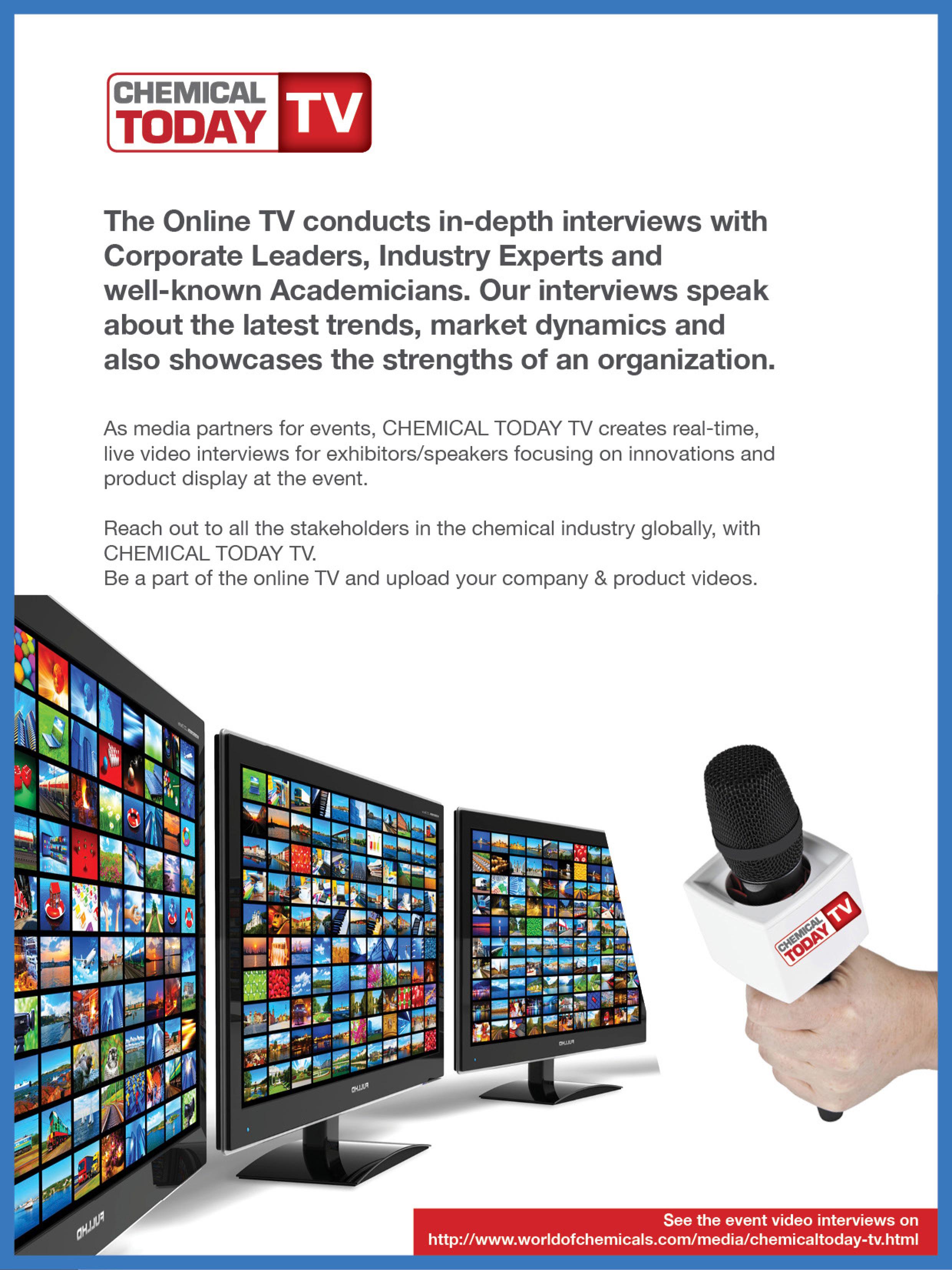
introduced ULTEM™ 3473 resin, its first polyetherimide (PEI)-based material with surface mount technology (SMT) capability. This new product addresses the growing trend toward smaller, lighter 5G macro cells by providing a possible replacement for metal. For example, ULTEM 3473 resin can help reduce the weight of an aluminum radio frequency (RF) cavity filter by up to 40 percent. In a typical macro cell with 64 filters, this weight saving can be significant. Furthermore, this new resin can help facilitate the design of new, integrated antenna filter units (AFUs), which is not achievable with metal.


Contact: SABIC PO Box 5101, Riyadh 11422, Saudi Arabia
Tel: +966 (011) 225 8000 Web: www.sabic.com
Master Bond EP40ND is a two component epoxy system, designed for bonding, sealing and coating applications. It is a non-drip, toughened system with an easy to use 1:1 mix ratio by weight or volume. EP40ND meets NASA low outgassing specifications and has a high elongation of 80-90 percent at 75°F. It adheres well to many plastics, such as polycarbonates and acrylics, making it appropriate for applications that use substrates prone to stress cracking. Serviceable from -100°F to +250°F, this electrically insulative compound can withstand rigorous thermal cycling, vibration, impact and shock.
Contact: Master Bond 154 Hobart Street Hackensack, NJ 07601 USA
Tel: +1-201-614-5856
Web: www.masterbond.com

Sapphire Blue is the first pigment from ECKART with an anti-fading effect. It ensures that the highly chromatic blue tone that the pigment creates is equally intense from every viewing angle, even from very flat angles. This distinguishes EDELSTEIN Sapphire Blue from conventional effect pigments, whose hue changes to pale color spaces when the perspective changes. These properties make the pigment the ideal solution for dark shades. In addition, there is the extraordinary depth effect, an extremely high opacity and noble glitter effects. The unique shade of blue is equally suitable for paints, printing inks and plastics and can be used in all systems or coating processes (coil, pneumatic, electrostatic painting) and printing technologies. Its shelf life is ten years.
Contact: ECKART GmbH Guentersthal 4 91235 Hartenstein, Germany

Tel: +49 9152 77-0
Email: info.eckart@altana.com Web: https://www.eckart.net
With ELASTOSIL® LR 3078, WACKER is expanding its portfolio of self-adhesive liquid silicone rubber with a product line that adheres specifically to polycarbonate. The grades in this series are formulated in such a way that, as they cure, chemical adhesion builds up to the substrate, but not to the injection molding tool. To this end, WACKER uses a newly developed and patented self-adhesive technology that does not contain any bisphenol A structures. By eliminating this substance class, the company increases occupational safety and contributes to consumer protection. All grades of the new product line can be easily processed by two-component injection molding.
Contact: Wacker Chemie AG Hanns-Seidel-Platz 4 81737 Munich, Germany
Tel: +49 89 6279-0
Email: florian.degenhart@wacker.com Web: www.wacker.com


Maintaining its position as an industry leader while advancing its technology to constantly innovate and introduce new ingenious products & solutions, UFlex has announced an array of exciting launches. The flexible packaging giant has always had a multi-pronged goal of providing top notch end-to-end value added packaging solutions while also setting high standards for sustainability in the industry and making the product grab attention.
FLEXBOND SF WET LM 35 Water-based Adhesive for Wet Lamination Application: UFlex has developed FLEXBOND SF WET LM 35, a water-based synthetic adhesive designed mainly for wet lamination of clear BOPP & PVC films to paper or duplex board applications with manual or semi-automatic machines. This adhesive when used on paper or duplex board offers excellent gloss and bond strength and can be applied via a smooth roller-coater.
Retort grade 2K PU Adhesive FLEXCOTE HP 875/ FLEXCOTE HP 75: With growing demand for ready-to-eat food, the need for retort packaging formats is witnessing a sharp surge. Retort packaging formats allow packed foods to be warmed within the pack to be made ready for consumption. However, to strengthen the structure, adhesives play a major role in keeping retort properties intact, even when it comes in contact with boiling water. Understanding the requirements of retort pouching, the company has developed a 2-pack solvent-based PU adhesive specially designed for high-end retort pouch applications. This development is most suitable for food and pharma packaging applications.
3D Pouch with Registered Window Metallization for Premium Brown Sugar by Triveni Engineering: After its recent success with Triveni Engineering for the packing of its premium crystal sugar, UFlex has come up with a three-layered 3D
pouch with registered metallization for their premium brown sugar. The pack’s structure is made of PET / Window MET PET and NAT PE.
Profile Spout Pouch with Re-closable Option & Easy Pour Experience for BB Royal Cold-press Cooking Oil: Conventionally, edible oil has been packed in either a regular pouch or a rigid bottle. Such packaging formats often offer limited differentiation on the shelves for buy as well as its use that sometimes could be quite cumbersome with oil spilling while pouring it. This development made by UFlex for BB Royal Organic Edible Oil is a unique offering for edible oil packaging applications in which the structure is made of PET / BON / PE with a spout for easy pour experience.
3D Pouch with Paper-based Barrier Laminate for Beachville Coffee Roaster: Around the world, coffee lovers have known to form an initial connect with their favourite coffee by its aroma. With the growing need for sustainability across the segments, coffee brands are turning towards more eco-friendly packaging formats like paper-based ones with attractive designs that make them stand out on the retail shelves.
PET-based Silica Master-batch Solution for BOPET film: The packaging films business has enhanced the handling methodology of BOPET films with the development of a new PET Silica masterbatch solution that controls anti-blocking properties in BOPET film development. With the development of this value enriched Silica Masterbatch solution with upto 40,000 and 60,000 ppm, the packaging films business has not only achieved higher anti-blocking properties but has also been successful to make a significant reduction in production cost.
Contact: UFlex Limited
A-107-108, Sector - IV, Noida - 201301 (Uttar Pradesh) India
Tel: +91-120-4012345 (Ext. 429)
Email: arun.kapoor@uflexltd.com
Web: www.uflexltd.com


The new Allen-Bradley 42EA RightSight S18 and 42JA VisiSight M20A photoelectric sensors are economical and easy-to-apply sensing solutions that offer a wide range of sensing modes, mounting options and unique features, making them optimal solutions for global operations. All models have a visible red-light source to ease alignment, while multiple connection options and adjustment knobs for light or dark operation help ease installation, setup and maintenance. These lines also address the small form factor needs of industries like life sciences, pharmaceutical, food & beverages and household & personal care.

Incorporating an energy efficient drive mechanism – the compact DrySyn Vortex overhead stirrer system from Asynt delivers effective overhead stirring to three round bottom flasks (100 mL to 500 mL) in parallel with stirring from 50 to 500 rpm. Suitable for reaction temperatures up to 200°C, the DrySyn Vortex is the perfect process development tool to efficiently, and safely, drive three stirrer shafts with one overhead stirrer. The compact design enables this all to be carried on one standard hotplate. The DrySyn Vortex blend, able to hold three 600 mL beakers, will be of interest to blending and formulation scientists in the oil, cosmetics, cleansing and hygiene industries.


Contact: Rockwell Automation, Inc 1201 South Second Street Milwaukee, Wisconsin 53204 Tel: +1-414-382-2000 Web: www.rockwellautomation.com
Contact: Asynt
Unit 29 Hall Barn Road Industrial Estate Isleham, Cambridgeshire, CB7 5RJ, UK
Tel: +44 (0)1638 781 709
Email: enquiries@asynt.com Web: www.asynt.com
With an ultimate vacuum of up to 1.5 mbar abs. at a flow rate of up to 36 l/min, the new N 952 diaphragm pump series is an important support for many analytical instrument applications. For example, the power of the vacuum pump ensures rapidly evacuated analysis cells. Its speed and retention of high pumping speed even close to ultimate vacuum make the N 952 the ideal pre-vacuum pump for turbomolecular pumps. Installed in a drying chamber or heating oven, the N 952 diaphragm pump presents two further strengths at once: its speed-controlled vacuum performance for the exact provision of the required vacuum profile and its low-vibration operation.
Contact: KNF Neuberger, Inc Two Black Forest Road Trenton, NJ 08691-1810, USA Tel: +1 (609) 890-8600 Email: supportusa@knf.com Web: https://knf.com
Oxford Instruments Asylum Research launched new Cypher L atomic force microscope (AFM). Based on the acclaimed high-performance Cypher AFM platform, the Cypher L is designed for researchers who need core AFM capabilities in research markets including polymers, 2D materials, quantum technology, and energy storage. The Cypher L is affordable and accessible to typical research funding sources. The Cypher L is the first AFM operating exclusively on the new Asylum Research Ergo software platform, which provides a streamlined workflow and imaging automation for a simplified user experience. It is the only AFM in this market segment that is specifically designed to be upgradeable.
Contact: Oxford Instruments plc Tubney Woods, Abingdon, Oxfordshire OX13 5QX, UK
Tel: +44 (0)1865 393200 Web: https://www.oxinst.com
Emerson has launched the TESCOM™ Anderson Greenwood Instrumentation H2 Valve Series for hydrogen applications up to 15,000 pounds-per-square-inch (psi) (103.4 megapascal (MPa)). The new solution reliably isolates process pressure in high pressure gas applications such as hydrogen fueling stations and tube trailers, reducing fugitive emissions and improving safety. To protect personnel and prevent leaks, it must be effectively controlled and isolated. The Double Block Bleed (DBB) valve’s positive double block arrangement provides two layers of positive shutoff that shield maintenance staff from high pressure during instrument maintenance. Its modular design reduces the number of potential leakage points.


Contact: Emerson Electric Co. 8000 West Florissant Avenue, P.O. Box 4100, St. Louis , MO 63136, USA Tel: +1 314 553 2000 Web: www.emerson.com

The ROSS Vertical Blender is designed for reliable and gentle mixing of friable solids, abrasive materials, and shearsensitive products. It consists of a low-speed auger that orbits the periphery of a conical vessel while gently lifting material upward. The thorough agitation allows product from the top portions of the batch to cascade to the bottom while blending with material being drawn upwards by the auger. In addition to solid blends, wet applications such as flowable slurries and pastes are routinely mixed in the Vertical Blender. This versatile machine can be jacketed for heating or cooling with water, oil or steam.
Contact: ACharles Ross & Son Company 710 Old Willets Path Hauppauge, New York 11788, USA Tel: 631 234 0500
Email: mail@mixers.com Web: www.mixers.com
The small, compact sensor is calibrated for air, O2, CO2 and N2O gases and – in contrast to its predecessor, the mass flow meter SFM4100 – can also be used to monitor the flow of gas mixtures. With a zero-point accuracy of 0.005 slm for a total range of up to 50 slm, the SFM4300 enables precise adjustment of the concentration in a wide selection of mixtures. The sensor unit has an I² C interface and produces a fully calibrated and temperature-compensated output signal. The mass flow sensor can be used for both medical and industrial gas mixing, fuel cells and for other OEM applications.
Contact: Sensirion AG Laubisruetistrasse 50 8712 Stafa, Switzerland Tel: +41 44 306 40 00
Email: info@sensirion.com Web: https://sensirion.com
Shimadzu announced the release of the new Nexera XS inert, a bioinert and biocompatible Ultra-High Performance Liquid Chromatograph (UHPLC). The system has been designed to resolve the most common problems encountered in the analysis of biopharmaceuticals, such as the adsorption of target molecules to metal surfaces and corrosion due to mobile phases with high salt content and extreme pH conditions. The new Nexera XS inert UHPLC features a metal-free sample flow path that prevents unwanted interaction with biopolymers prone to adsorption onto exposed metal sites. By doing this, the Nexera XS inert achieves reduced sample loss and excellent peak shape for reproducibly high sensitivity and high-quality, reliable data.
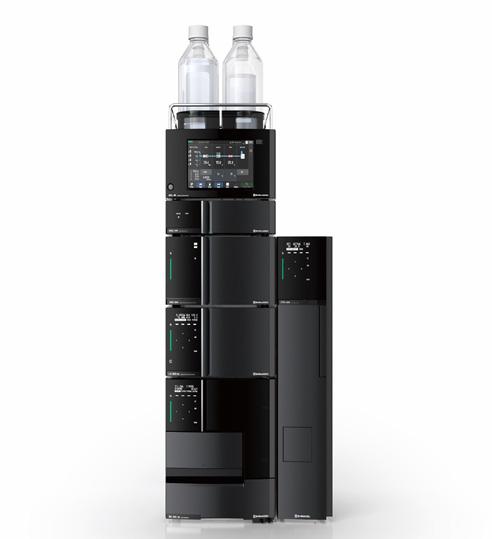
Contact: Shimadzu Europa GmbH Albert-Hahn-Str. 6-10 D-47269 Duisburg, Germany
Tel: +49 (0)203-7687410
Email: shimadzu@shimadzu.eu Web: www.shimadzu.eu
